We’re sorry, this site is currently experiencing technical difficulties. Please try again in a few moments. Exception: request blocked

Croatia Travel Guide
The jewel of the Adriatic! Croatia boasts pristine beaches, age-old towns, and a blend of tradition, cuisine, and historic marvels.
Best time to visit Croatia
Best places to visit in croatia, plitvice lakes national park: croatia’s most incredible waterfalls, 9 best things to do in hvar, croatia, rastoke waterfalls: discover the waterfall village of croatia, 9 best things to do on brac island, croatia, map of croatia, weather in croatia.
Following a Mediterranean climate, Croatia’s weather is fantastic, particularly between May and October! Spring and Autumn are prime seasons to explore, offering mild sunny temperatures and fewer visitors.
Cities in Croatia
15 best things to do in split, croatia, 9 best things to do in trogir, croatia, 13 best things to do in dubrovnik, croatia, 10 best things to do in pula, croatia.
Islands in Croatia
Kamenjak national park (croatia’s natural gem), visiting the medieval truffle town of motovun, croatia, 10 best things to do in rovinj, croatia, national parks in croatia, krka national park, croatia: travel guide to the waterfalls, how to rent a car in croatia, best travel insurances.
- Find Hotels via Booking.com
- Find Hostels via Hostelworld
- Find a Rental Car via Sunny Cars
- Find Flights to Croatia via Skyscanner
- Get a Travel Insurance via Heymondo
- Book Tours & Attractions via GetYourGuide
- Book a Bus/Train/Transfer via 12Go
- Get a Visa via iVisa
- How to pack light for your trip
- How to plan your trip our tips
Why is Croatia worth visiting?
Croatia is an absolute gem! From dreamy islands to historic cities, it’s a paradise for adventure seekers. Dive into sapphire waters, savor delicious cuisine, and soak up the Mediterranean sun.
Is Croatia cheap to visit?
Croatia has become more expensive in recent years due to its popularity, particularly in towns like Dubrovnik and Split; however, staying in self-catering accommodation, eating local, and visiting outside of the peak months can help you stay on a budget.
Can I drink tap water in Croatia?
The tap water in Croatia is high-quality and readily available, with beautiful water fountains dotted around many of the cities, so make sure to bring your reusable water bottle.
Do I need a visa for traveling in Croatia?
Most travelers don’t need a visa for Croatia for stays of up to 90 days. Check your country’s entry requirements in advance and make sure to have a valid passport ready for your Croatian adventure.
What language do they speak in Croatia?
While Croatian is the official language, English is like a second language to many who depend on tourism for their livelihood. Enhance your experiences by learning a few Croatian phrases, and the locals will warmly welcome your efforts to communicate in their language.
Do I need travel insurance for Croatia?
Travel insurance ensures peace of mind during your adventure through Croatia, protecting you from unexpected events. Hike through national parks, cliff jump off the rugged coastline, and kayak around beautiful islands with zero worries!
Is Croatia safe?
The crime rate in Croatia is low, and it is generally a very safe country for tourists. Exercise precautions as normal, and you’ll have an incredible trip filled with friendly locals and beautiful landscapes.
What power plug type does Croatia have?
Croatia primarily uses type C and F plugs, the European-style two-pin plugs with a voltage of 230V. Make sure to bring a plug adapter to keep you charged on the go!
Why do people love Croatia?
Commonly known as the Jewel of the Adriatic, Croatia is one of the best holiday destinations in Europe! With an incredible blend of natural beauty, historic charm, and warm hospitality, unforgettable memories are created here.
Travel to Croatia
Croatia, the Jewel of the Adriatic, is a captivating European destination known for its stunning coastlines, picturesque islands, historic cities, and incredible national parks. As one of the greatest vacation destinations in Europe, Croatia offers a diverse range of experiences, from the ancient walled city of Dubrovnik to the lush Plitvice Lakes National Park . Whether you’re a history buff, nature lover, or beach enthusiast, there’s something for everyone, making for an unforgettable vacation in Croatia!
How to plan your trip to Croatia
Follow our Croatia travel guides to plan an unforgettable road trip in this Mediterranean paradise. There are so many amazing things to do in Croatia, including historic cities like Split , natural wonders like Krka National Park, and charming islands like Hvar.
Short on time? Tick off the highlights of Croatia with our ultimate 7-day travel guide , road-tripping through ancient fortresses, UNESCO valleys, turquoise shores, and waterfall villages .
Ready for an incredible holiday in Croatia? The weather varies by season, and choosing the best time to visit depends on where in the country you’re planning to see and the kind of vacation you’d like to have.
High Season (July – August): If you’re dreaming of sunny days and beachfront relaxation, consider visiting between June and August. These are the peak summer months, with warm temperatures, clear skies, and minimal rainfall. The coastlines are at their finest during this period, making it an ideal time for beach enthusiasts, and the party scene is at its best in Hvar , Brac , Dubrovnik, and Split for those looking for nightlife. This period brings crowds of tourists, so booking accommodations and tours in advance, particularly in well-traveled destinations like Dubrovnik, is definitely worth it.
Shoulder Seasons (May, June, September & October): If you prefer a more budget-friendly, less crowded experience, the shoulder seasons are generally the best times to visit Croatia. During these months, the climate in Croatia is pleasant, the tour operators and hotels are open, and the crowds are much more manageable in popular cities. May and June are also the best months to visit the National Parks when the lakes and waterfalls are flowing.
Croatia’s climate can also vary depending on the region. Central Croatia tends to be a little cooler than the coastal areas, so it is always worth packing layers if you plan to explore different parts of the country.
Whichever season you choose for your Croatia holiday, this beautiful country will not disappoint!
Coastlines and beaches in Croatia
Croatia’s coastline along the Adriatic Sea is a paradise. With a diverse range of beaches, from pebbly shores to secluded coves, there’s something to suit every traveler’s taste.
One of the best things to do in Croatia is to explore its stunning coastline, starting with the Dalmatian Coast. This stretch of coastline is famous for its crystal-clear waters and unique pebble beaches. Zlatni Rat, located on the island of Brač , is often referred to as the “Golden Horn” due to its distinctive shape and offers a picturesque spot for sunbathing and water sports.
For a blend of history and relaxation, Banje Beach in Dubrovnik is an amazing spot, only a 10-minute walk from the Old Town. With panoramic views of the city’s historic walls, it’s a unique spot to unwind and enjoy the Croatian sun. This spot is very popular, so come early to rent a daybed or find a spot on the nearby cliffs or visit Sveti Jakov Beach instead, a quieter spot in Dubrovnik closed off to boats, making it one of the best places to visit in Croatia.
If you’re looking for a more tranquil getaway, hop on a boat tour around Hvar Island, exploring the secluded beaches, natural caves, swimming in the crystal blue waters of Budikovac Lagoon, and taking in the picture-perfect scenery.
Whether you’re seeking a relaxing vacation or a crazy backpacking adventure, Croatia’s coastlines and beaches are out of this world!
Food, culture and religion in Croatia
Dive into the heart of this Mediterranean gem, and you’ll discover warm hospitality, distinct regional cuisines, and prominent architecture from its religious influence.
Food: Croatian cuisine is a delicious blend of influences from Central Europe, Italy, and the Mediterranean. As you travel Croatia, your taste buds will be treated to an array of flavors. On the coast, you’ll find food similar to Greek, Italian, and Mediterranean cuisines, with freshly caught seafood from the pristine waters and plenty of olive oil and fresh herbs. Further inland, food is known to be a little more hearty, with warming stews and decadent pastries.
Culture: Croatia has a rich and diverse cultural heritage, with red and white checkered items, known as šahovnica, the coat of arms, featuring everywhere throughout the country, highlighting how proud locals are to be Croatian.
Religion: Religion holds a significant place in the hearts of Croatians, with the majority of the population following the Catholic faith. This influence is evident in the beautiful churches and cathedrals that grace the country’s landscapes, from the Cathedral of the Assumption of the Virgin Mary in Dubrovnik, to St. Stephen’s Church in the small hilltop village of Motovun .
Why you should travel to Croatia
One of the best European vacation destinations, Croatia’s charm is endless, with sun-soaked beaches, captivating cities, pristine islands, and breathtaking natural parks. As you navigate its winding roads, you’ll encounter UNESCO-listed valleys, wander through Game of Thrones Croatia film sets, explore ancient fortress cities, visit breathtaking waterfalls, and relax on the beautiful shores.
The country’s diversity is the standout feature of the country. The Adriatic coastline, dotted with pebble and sandy beaches, offers a seaside paradise for sun-seekers. While the coastline may steal the limelight, picturesque cities like Dubrovnik and Split, with their well-preserved historical architecture, beckon history buffs and culture enthusiasts. Additionally, the numerous islands, such as Hvar and Korčula, provide an idyllic escape from the bustling mainland, offering a laid-back Mediterranean atmosphere. The national parks, including Krka and Plitvice Lakes, display cascading waterfalls, pristine lakes, and lush forests that provide a haven for nature lovers.
Croatia offers an enriching experience whether you’re a backpacking adventurer, a history enthusiast, or a sunseeker in search of the perfect vacation.
Safety and travel advice Croatia
Croatia is generally a safe travel destination, but it’s essential to stay informed about safety measures and travel tips when planning your trip to the country.
Natural Disasters: While Croatia is not prone to major natural disasters, occasional minor earthquakes and forest fires may occur. Additionally, heavy rainfall, particularly during the winter, can lead to localized flooding. To stay updated on potential emergencies during your trip, always follow the local weather and plan accordingly. Outside of the tourist areas, there may be unexploded mines from the past war, so always stick to marked paths.
Crime and Safety in Croatia: Overall, Croatia has a low crime rate. However, in crowded tourist areas, such as city centers and popular coastal destinations, petty crimes like pickpocketing can occur. It’s wise to leave valuables at your accommodation and stay vigilant in crowded places. There have also been several reports of crime in taxis, so if you’re traveling alone, it’s advisable to take a photo of the number of the taxi and send it to a friend or family member.
Traffic and Driving: In the busier towns and cities, Croatia can experience traffic congestion, particularly during the high season. If you plan to drive a rental car in Croatia, always pay attention to traffic signs and adhere to local driving rules. Also, be aware that it is illegal to drive with more than 0.05% of alcohol in your system.
Travel Insurance: It is highly recommended to purchase travel insurance for your vacation in Croatia, ensuring peace of mind in case of unexpected events, such as hiking accidents or lost luggage. Find the best travel insurance to best suit your needs.
Update April 12, 2024
Information for u.s. citizens in the middle east.
- Travel Advisories |
- Contact Us |
- MyTravelGov |
Find U.S. Embassies & Consulates
Travel.state.gov, congressional liaison, special issuance agency, u.s. passports, international travel, intercountry adoption, international parental child abduction, records and authentications, popular links, travel advisories, mytravelgov, stay connected, legal resources, legal information, info for u.s. law enforcement, replace or certify documents.
Share this page:
Learn about your destination
Take 90 seconds for safer travel.
Travel Advisory Levels
Enroll in step.

Subscribe to get up-to-date safety and security information and help us reach you in an emergency abroad.
Recommended Web Browsers: Microsoft Edge or Google Chrome.
External Link
You are about to leave travel.state.gov for an external website that is not maintained by the U.S. Department of State.
Links to external websites are provided as a convenience and should not be construed as an endorsement by the U.S. Department of State of the views or products contained therein. If you wish to remain on travel.state.gov, click the "cancel" message.
You are about to visit:

Croatia travel requirements 2024: What travelers need to know
We aim to keep this post updated about Croatia travel in 2024 with official Croatia travel restrictions, requirements, and health and safety guidance. Our goal is to help you make informed decisions so you can travel confidently, safely, and responsibly in this new post-pandemic world of ours.
We lived and worked from Croatia in winter of 2019 and loved it.
As restrictions vary based on the traveler’s citizenship, we will focus primarily on rules affecting U.S. citizens.
At the end of the post, we share on-the-ground perspectives from local residents and travelers to Croatia so you can get a sense of what it’s really like.
Last update: October 2023. Originally published: November 2020.
Disclosure: This post contains some affiliate links. If you make a purchase through one of our links, we may receive a small commission, at no additional cost to you.
* Get our free Post-Pandemic Travel Checklist *
Table of Contents
Can US citizens travel to Croatia? Can I travel to Croatia right now?
Can Americans travel to Croatia? Yes, travelers from the United States can enter Croatia for tourism. As of May 2022 , Croatia travel restrictions and entry requirements related to COVID-19 have been removed.
Travelers can visit Croatia without any testing, vaccination, or quarantine rules.
Visitors from over 60 visa-exempt countries , including the U.S., will soon be required to have a European Travel Information and Authorisation System (ETIAS) travel authorization to enter Croatia and other European countries . The start date has been delayed from 2024 to 2025.
See details about ETIAS here
Quarantine rules in Croatia: What happens if I get Covid?
Foreign travelers are not required to quarantine upon arrival to Croatia.
Travelers who test positive for Covid while in Croatia can get in touch with a local epidemiologist . Call 113 (from a Croatian number) for general advice about COVID-19.
As of May 2023, there are no longer quarantine requirements for those who test positive. However, they are advised to avoid large gatherings. Self-isolation for five days, followed by ten days wearing a mask, is recommended for those who come into contact with the elderly, chronically ill, immunocompromised people, and pregnant women.
People who were in close contact to those who tested positive are not required to quarantine. They are, however, asked to wear mask for 10 days, to self-test on the fifth day, and to avoid large gatherings especially among people who are at increased risk.
Croatia Vaccine Passport Requirements to Enter Large Gatherings
You might be wondering: Do I need a vaccine certificate or Covid test to enter restaurants, accommodations, or attractions in Croatia?
Currently, a vaccine certificate or Covid test is no longer needed to enter accommodations, businesses, attractions, or attend large gatherings in Croatia.
Can Americans travel to Croatia in April 2024? Can US citizens travel to Croatia this Spring?
Croatia travel in April is open for US citizens. Please read on for details and check back for updates.
What is it like to fly to Zagreb ZAG, Split SPU, or Dubrovnik DBV airports right now? Croatia Airlines reports that guests are no longer required to wear face masks on flights.
Disinfecting systems and health screenings have been implemented at the airports.
Do Americans have to quarantine when traveling to Croatia? As of May 2022, travelers are not required to quarantine upon entry in Croatia.
For travelers who test positive with Covid-19 while in Croatia, please see above for details.
Does Croatia check COVID-19 symptoms of incoming travelers? Basic health screening procedures may be in place at the airports in Croatia.
Does Croatia require a negative Covid-19 test for American travelers? No. A negative Covid-19 test is no longer required to enter Croatia.
Does Croatia require a proof of Coronavirus vaccine for American travelers? No. A proof of Coronavirus vaccine is no longer required to enter Croatia.
Do I still need to provide a negative Covid test or quarantine if I have been vaccinated? No. A negative Covid test, quarantine, and proof of vaccination is no longer required to enter Croatia.
Is a booster shot required for travel to Croatia? No. A booster shot is not required to enter Croatia. There is no set period of expiration for booster shots.
What Covid testing options are available for travelers in Croatia? PCR and/or antigen tests are available for travelers at COVID-19 Testing Locations in Croatia .
As of July 2022, PCR tests cost HRK 276.56 (approximately 37.55 USD) if referred by a doctor or HRK 390 (approximately $53 USD) if not referred by a doctor. Antigen or rapid tests, on the other hand, cost approximately $20 USD.
What healthcare options are available to travelers in Croatia who get the virus? Croatia hospitals and clinics are open. However, if you get sick in Croatia, medical resources may sometimes be limited and treatment will be at your own expense.
Local COVID-19 PCR tests in Croatia are not covered by Croatian Health, unless referred by a Doctor or epidemiologist.
For travel insurance that covers Covid, check out Nomad Insurance by Safety Wing >
What service businesses and restaurants are open in Croatia? Restaurants are open for indoor and outdoor dining. Museums, attractions, and other businesses are also open.
What public gatherings are allowed in Croatia? Public and private gatherings or events are allowed in Croatia.
Are face masks required in Croatia? Face masks are not required except in hospitals and care centers.
Are buses running in Croatia? Public transportation is available as usual throughout Croatia.
Will Croatia impose new Covid restrictions? What’s next is difficult to predict. Historically, Croatia has imposed COVID-19 restrictions when the health care system is under strain, which means when the number of hospitalizations and patients on ventilators rise to unsustainable levels.
How has the Coronavirus impacted Croatia?
The Croatian Government declared the epidemiological situation under control in early June 2020 with almost no new cases being reported for several weeks. However, the country saw a spike in cases in Fall 2020. This prompted the government to implement additional measures to slow the spread of the virus and support its health system.
Croatia, which is highly dependent on tourism, reopened its borders in July 2020. Despite this, the economy still struggled with a substantial increase in unemployment.
Croatia’s vaccination program began slightly before the New Year 2021. Over half of the population have been fully vaccinated.
For the current situation in Croatia, including: total COVID-19 positive cases; total cases in Croatia; and COVID-19 testing in Croatia, please see the Croatia Department of Health site .
What should you pack for safely traveling in Croatia?
😷 Face Masks – Face coverings are recommended in public places and may be required in certain spaces. Find N95 masks at Bona Fide > or designer options at Vida >
💊 Medicine – Bring enough prescription and over-the-counter medication for your entire trip to avoid trips to the clinic.
💳 Vaccine Card Holder – Protect that paper CDC card when traveling abroad (if your country doesn’t offer a digital version). Get a simple plastic protector > or Vegan leather clippable > or Leather passport + card combo holder >
👃 Covid self-test – The most studied rapid antigen self-test with FDA emergency authorization. NOT valid to enter countries. Use for your own peace of mind. Order from CVS > or Walmart >
💧 Sealed water bottle – Make sure your reusable water bottle has a lid that’s not exposed to the air. We use one of each of the following: Shop insulated water bottles with protective lid > Shop water bottles with purification filter and protective lid >
✈️ Travel insurance that covers Covid – We’ve started using Nomad Insurance by Safety Wing for affordable evacuation, international medical, and trip coverage.
What do Croatia locals and recent travelers say about visiting Croatia now?
What is it like to visit Croatia right now? It’s our goal to provide regular updates here from real people on the ground, to help potential visitors know what to expect.
The following are subjective opinions only. Official travel guidance can be found above.
September 2023 – Steven Jepson of The Thorough Tripper , American traveler “We are currently in Dubrovnik Croatia for one week as part of a 6 week/6 country European trip. Dubrovnik supposedly has the most overtourism in all of Europe, and we are seeing it first hand. I thought if we came at the end of September, it wouldn’t be too bad. It’s bad. So many people…
I have yet to see the word COVID written anywhere here. There doesn’t seem to be any restrictions whatsoever.”

June 2023 – Coni from Experiencing the Globe , Croatian resident: “Short and sweet: Croatia is completely open, without any restrictions of any kind. Everything is back to pre-pandemic normal.
All attractions and tourist infrastructure (hotels, restaurants, souvenir shops, etc.) are fully working. Testing facilities are plentiful, and private clinics are readily available in case of need.
Do keep in mind that Croatia is a very popular summer destination, and with no restrictions in place, you’ll find crowds everywhere in the coast and known national parks.”
January 2023 – Gabi of Under Flowery Sky , Croatian resident: “Croatia currently adopts the Euro [as currency in place of kuna] and this stimulates prices going up comparing to the past. The hostels are still full even in January and prices affordable.
Most of local attractions are open. Healthcare is easily accessible, specially in the cities. Masks are not requiered anymore.”
September 17, 2022 – Arianna of Extra Mile Project : “I spent 9 days in Croatia in September 2022 and traveled to Zagreb, Hvar, Split, and Dubrovnik by train. Life seemed to be back to normal. As an EU citizen, I easily flew into Zagreb without any travel restrictions (no testing or contact tracing required).
Masks were recommended in the airport and on public transportation but very few people were wearing one. Some museums still used a time slot-based booking system to avoid overcrowding, so I’d recommend buying tickets in advance. However, September didn’t seem to be a busy month and I was always able to find available tickets on the spot. Most of the attractions had signs at the entrance asking visitors to sanitize their hands and measure their temperature, but nobody was really checking.”
August 2022 – N.h., expat: “My cousin arrived on Sunday with EasyJet from Gatwick. She said check -in and security took 50 minutes. Her flight was delayed by 1 1/2 hours. Everything in Split was quick and easy. The new terminal is great and everything runs pretty smoothly.”
May 28 2022 – Gloria from mumsinvited.com: “In May, I flew into Croatia for a 4 day work conference. It was a fantastic experience. I didn’t experience any travel restrictions coming from the UK. To my knowledge, there wasn’t any contact tracing or testing. I didn’t even have to take a Covid test before travelling or after my arrival. There weren’t any long queues or extra crowded spaces.”
April 16, 2022 – Third country national: “ A friend (US Passport) arrived in Split 1 week ago today on a direct flight from Dublin (where she is currently living). She was asked for vax/test/recovery. She doesn’t qualify for EU COVID Cert, so provided CDC card with all 3 jabs. That’s what was asked of her, but current rules do seem to indicate she shouldn’t have needed to provide anything.”
February 16, 2022 – Kathleen O., American nomad: “Split, Croatia is returning to normal life. Local restaurants are open at full capacity (although many are closed simply because it’s outside of the tourist season), buses and ferries are running, and it looks likely to be a record summer season coming. Spring is my favorite time to visit Croatia and with cases dropping every day, it’s a good time to plan a trip.”
January 20, 2022 – Marty, Expat in Croatia: “My wife and I are halfway through a 3 month stay in an Airbnb next to the Riva in Split, Croatia. We have felt very safe as far as any Covid concerns. Split is close enough to take side trips, in fact we just returned from a week in Kotor, Montenegro and Mostar, Bosnia [crossed Croatia land border]. We also traveled to Dubrovnik, which we recommend seeing. Here in Split, Croatia it is easy to get a Covid test if needed. They also allow non-Croatians to get a vaccine, in fact we were able to get our Pfizer booster shot. Since we are here in the off season some restaurants and shops are closed, but there is still lots to choose from. When we were here in October everything was open. They usually don’t ask to see your vaccine card to go inside to shop or eat.”
December 20, 2021 – Kathleen of My Lonesome Roads , American digital nomad: “I am living [in Croatia] for the winter while working online. Most events are still happening, like the Christmas markets, and shops/restaurants/bars are open at full capacity here in Split. There are almost no tourists here which is typical for the winter, so prices are reasonable and you can get a taste of local life.
There are very few restrictions in place, but testing is widely available and inexpensive. Vaccination rates are very low, but the healthcare quality is good. No test or vaccine is needed for most activities.”
October 2021 – Dana, American tourist: “As part of a Mediterranean cruise with Holland America in October, 2021, we visited Zadar and Dubrovnik for one day each. Crowds were minimal and COVID restrictions virtually non-existent. That said, I recommend having a mask at the ready should the need arise. No one asked for vaccination proof at any time. Restaurants were plentiful and open. As noted, crowds were few and seating at bars and restaurants was easy to find.”
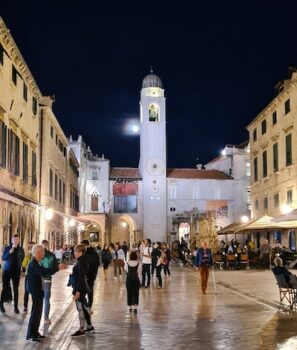
October 2021 – Victoria C., Scottish traveler: “We went for a family holiday to Dubrovnik, Croatia for 10 days in October 2021. Everyone we met were very welcoming and we didn’t have any bad experiences All the local attractions were open, tours were taking place. Restaurants and bars were open. Some were closed due to it coming to the end of the season. We were never asked for any proof of vaccines or tests in town. We had our temperatures taken when we rode the cable car that was it. Masks were worn by most people indoors at supermarkets, shops etc. We didn’t find it overly busy and never really had to wait in any queues.”
September 2021 – Jenn, CocktailsAway.com : “My husband and I spent a week in Croatia, Dubrovnik and Stari Grad (on the island of Hvar) celebrating our 20th wedding anniversary. If you are vaccinated, you will find visiting Croatia fairly easy. All restaurants and bars are open. Tours, activities, and businesses are operating. There is a required form for tracing that needs to be filled out before arrival but outside of immigration and the hotels, no one checked our vaccine card. While everything is open, some businesses haven’t survived the pandemic so it’s wise to check ahead.”
September 9, 2021 – A., UK visitor: “I am currently in a quarantine hotel in Rovinj due to catching covid in Croatia, so I thought I’d share my experience with this so that anyone who wants to know the procedure is aware. I took my lateral flow in our hotel room ready to go back to the UK the next day but it came up positive. We rang [our travel agency] so that they could change our flights (package holiday included flight change for free), we rang the hotel reception on Istra who told us we could stay in the room we were in to isolate and that they would bring us up food for each meal. About an hour later when we’d ordered food and were settled, they rang us and said your boat will be here in half an hour. We were very confused as they just told us we could stay where we are we then had to eat and pack up our whole room in half an hour… We got on a private boat and there was a private car waiting for us that took us to Villas Rubin resort. The lady who greeted us here is lovely and very helpful if we need anything. The room is a decent size with two balconies and they drop us off three meals a day in a crate outside. We get a carton of juice each, bread rolls, fruit, salad and a big meal so can’t complain at all about the food. We have to pay at the end of our stay £60 per person per night, then our StaySure insurance will pay us back. I’ve seen lots of people say Dubrovnik has dealt with [this kind of situation] really badly, but we seem to have got a good hotel! We’ve been told we can’t leave or go home until we are negative. I’m testing daily so if we come back negative early we get to go home. ”
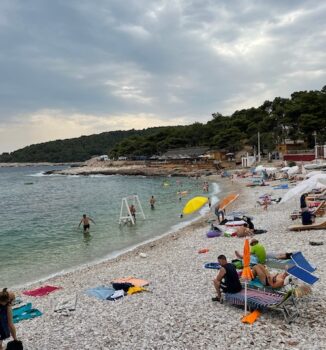
August 2021 – Malek , Egyptian Traveler: “I spent 3 weeks in Croatia with the wifey. People are super helpful. They welcome you help you and try to give you the best advice. when we had a wrong booking on a bus, the other travelers and some locals put the money for us to keep our journey till the next stop and the ATM. Everywhere you are asked for mask and covid passport.”
July 2021 – M.M, American visitor: “I was in Dubrovnik Croatia for 3 weeks. The tourist population was about half of what we anticipated. Though the city is small and few tourists still make it feel crowded, I would definitely recommend going to Dubrovnik now, I can’t imagine how crowded it is without COVID. All restrictions are being followed by locals and visitors. Testing was easy and quick for COVID and food service was exactly what you get in the US, clean and masked.”
June 2021 – Martina of PlacesofJuma , Austrian Digital Nomad: “ The current situation in Croatia is very relaxed. Restaurants and cafes are open, the beaches are quiet and Covid seems light miles away. Locals are happy about every visitor, the atmosphere is really good and the room prices are still really cheap! Keeping distance, hand washing and wearing a mask is followed. Life takes place mainly outdoors, which also reduces the risk of infection. Unfortunately, I don’t know whether the locals get tested and how often. However, many people, especially the elderly and those who work in tourism, have already been vaccinated. Larger hotels also have fantastic hygiene concepts, staff is wearing mask and some hotels offer free covid-tests to travelers.”
April 2021 – Kevin Macadam, British Digital Nomad: “ We moved to Croatia for one year on the 1st March 2021. Arriving into Croatia was fine and we travelled with a dog and cat. Yes, Croatians are welcoming tourists however Covid cases are rising in Croatia so unless you have been vaccinated then I would advise against travelling here. People are wearing masks and testing is available, however, they have a low supply of vaccines at the moment. Tourist attractions are open and restaurants are open until 20:00, however this can differ from county to county.”
Planning a trip to Croatia?
Check out our other Croatia travel resources:
– What to do in Zadar Croatia on a Budget + Walking Tour Map – 7 day Croatia Road Trip Itinerary: Dalmatian Coast in Winter – One Day in Zagreb Croatia Layover Guide – Intentional Travelers – Best Day Trips from Zadar Croatia – Intentional Travelers
If you have questions or updates about travel to Croatia during the Coronavirus crisis or post-pandemic, please let us know in the comments below.
~ Pin this post for later or share with friends ~
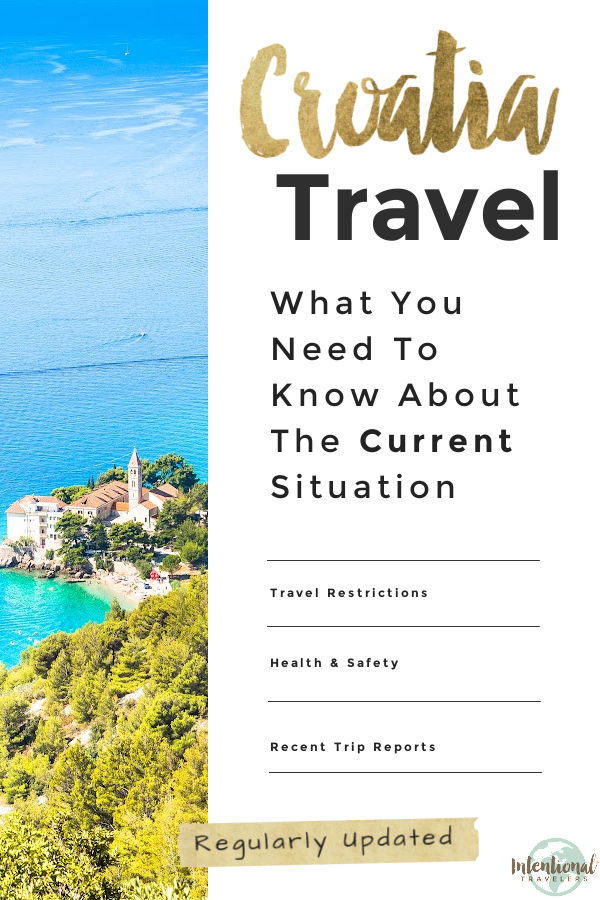
Disclaimer: Please note, travel restrictions change frequently. Readers must take responsibility for verifying information through official sources like the State Department and CDC, in respect to their specific situations. No responsibility can be accepted by Intentional Travelers for action or inaction as a result of information provided through IntentionalTravelers.com. Any information provided here is issued as general information only.
Similar Posts

Merida Mexico travel requirements 2024: What travelers need to know
We aim to keep this post updated about Merida Mexico travel in 2024 with official Yucatan travel restrictions, requirements, and health and safety guidance. Our goal is to help you make informed decisions so you can travel confidently, safely, and responsibly in this new post-pandemic world of ours. The Covid situation in Merida, Mexico is…
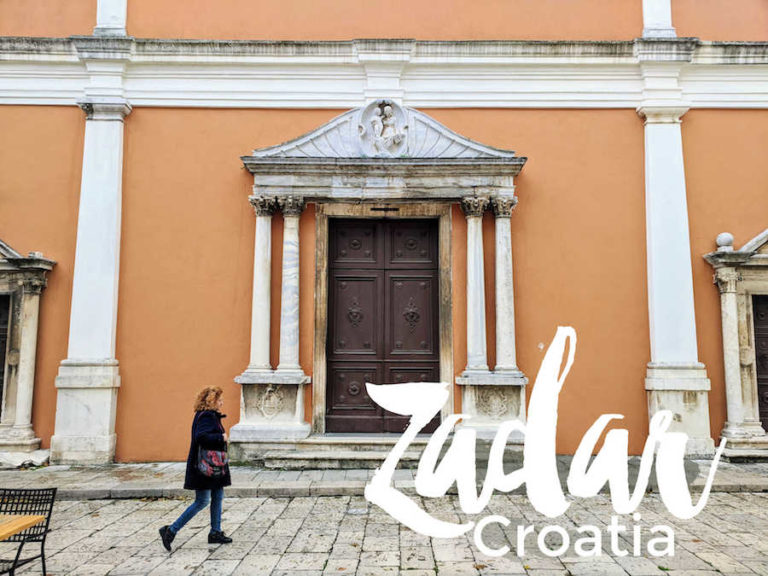
What to do in Zadar Croatia on a Budget + Walking Tour Map
We chose to make Zadar, Croatia our home base for a month this Fall. For us, it was the perfect balance of interesting things to see but with fewer crowds than its southern neighbors on the Dalmatian Coast. We found plenty of budget-friendly things to do in Zadar Croatia during our stay. We can’t wait…
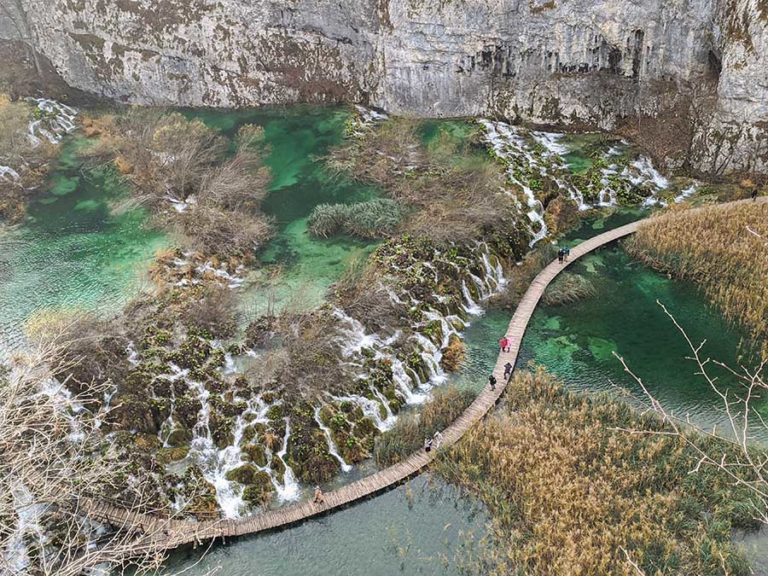
Croatia National Parks Near Split and Zadar
Croatia is a country bursting with fascinating destinations, the most popular being amazing beaches and historic towns. But beyond that, Croatia has more to offer – their beautiful national parks! There are eight national parks in the country, all of which are worth visiting. Croatia’s National Parks are teeming with natural beauty. Each is known…
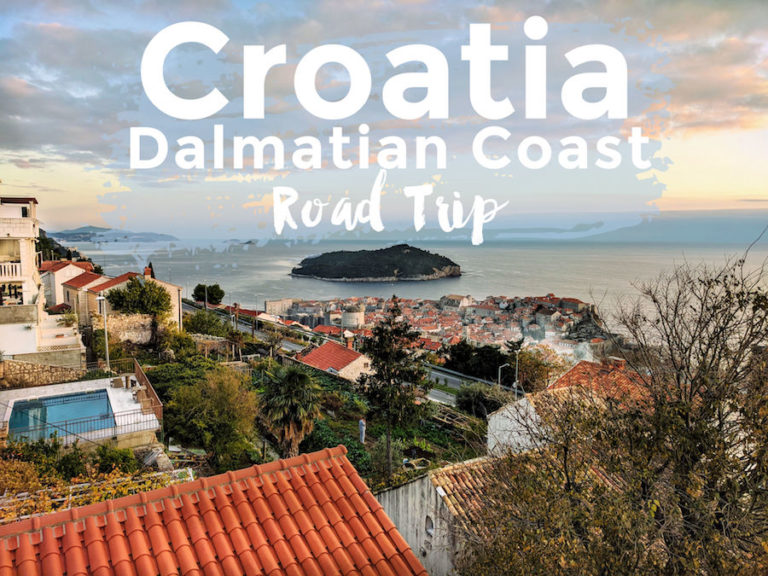
7 day Croatia Road Trip Itinerary: Dalmatian Coast in Winter
This guide will help you plan the perfect Croatia road trip itinerary, especially if you’re visiting Croatia in winter. Jedd and I had the pleasure of living on the Dalmatian Coast for one month in late Fall, exploring from our home base of Zadar, Croatia. Then my parents joined us for a 10 day road…

Philippines travel requirements 2024: What travelers need to know
We aim to keep this post updated about Philippines travel in 2024 with official Philippines travel restrictions, requirements, and health and safety guidance. Our goal is to help you make informed decisions so you can travel confidently, safely, and responsibly in this new post-pandemic world of ours. As restrictions can vary based on the traveler’s…
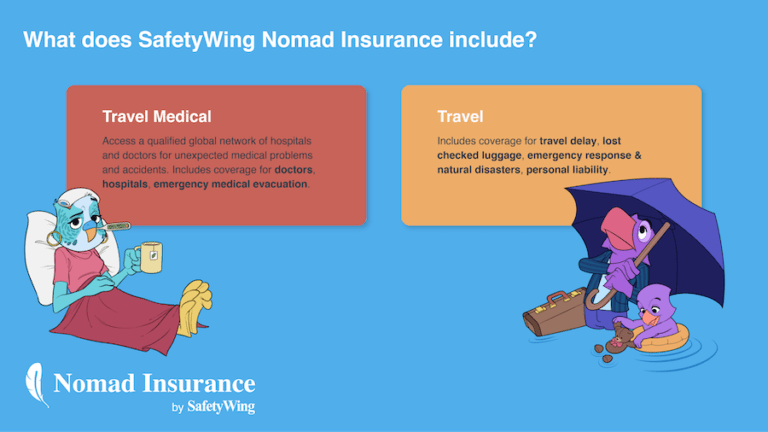
SafetyWing Nomad Insurance Review 2024 (with Covid Coverage)
As we returned to travel during the pandemic, Jedd and I felt that trip insurance and travel medical insurance were more important than ever for our trips. We first learned about SafetyWing at a digital nomad conference. With further research, specifically considering all the uncertainties around Covid-19 and travel restriction changes, we decided to use…
15 Comments
Thank you for this very helpful post!! My husband and I are hoping to visit Croatia in late March for our honeymoon. Are we allowed to enter Croatia if our connecting flight is coming from Madrid? USA to Croatia via Madrid. I’ve seen some conflicting information and don’t want to take a chance
Thanks for visiting our blog, Emily. At this time, the official Croatia website says arrivals are allowed from E.U. countries (which would include Spain) and “third country” tourists (Americans), as long as the appropriate documents are provided.
We are not tracking what additional requirements in Spain might be for passengers transiting through their airports, however, so you would have to check that separately. As I’m sure you’re aware, restrictions can always change between now and March, so I think you’ll likely be fine but unfortunately nothing is 100% guaranteed these days.
Hi, I am a UK resident currently visiting Turkey for 2 weeks, however, would like to visit Croatia on the way back to the UK and wanted to know if travellers from Turkey are not allowed to enter Croatia. I have received both covid jabs in the UK two months ago. Also, if travel is allowed, what are the requirements for my 11 and 13 year olds.
Thank you Kind regards
Thank you for visiting our blog. In our attempt to keep this free article accurately updated, we have limited our focus to specific travel scenarios. For other situations beyond what we cover here, I recommend checking official guidance on the Croatia ministry website or work with a travel agent who can ensure your trip needs are met.
I read that there is a mandatory 10-day quarantine for Eu-citizens. Can someone tell me if this quarantine must be held in a hotel or somewhere else?
Because the requirements vary based on citizenship and transit route into the country, we’ve been focusing on those that apply to U.S. travelers. We recommend checking Croatia’s official requirements here: https://mup.gov.hr/uzg-covid/english/286212 It’s a good question about the quarantine location. The information provided online is mostly about protocols to bypass the quarantine requirement, which most EU citizens should be able to do. That said, I did see the following mentioned: “Travelers may be ordered to self-isolate or spend up to 14 days in official government quarantine facilities if deemed necessary to prevent the spread of COVID-19. Placement in quarantine is at the expense of the traveler.”
Thanks Michelle C
Hi, I am booked to visit Omis with my family in late June. I have 2 young children 8 and 2 years old. Do children have to have the negative PCR tests as well as the adults?. Thanks Tim
It’s a good question and not easy to find. But I finally found this on the official website: “Children under seven years of age traveling accompanied by a parent / guardian are exempt from the obligation to present a negative test result and to self-isolate if the parents / guardians have a negative PCR or RAT test result, i.e. if they have a certificate of vaccination against COVID-19 or proof of having recovered from COVID-19.” Enjoy Omis – it is a beautiful spot!
We have a trip planned to Croatia 4/29/22 and are wondering how safe it is for us to travel. We are in our 70’s in good shape though I am high risk.
Thank you for visiting our blog. We hope to have another on-the-ground update from a recent traveler to Croatia soon. However, assessing travel safety is quite relative and depends on your own risk tolerance. Right now, cases across Europe are high from the Omicron variant. It’s hard to predict what it will be like in April. If you have health risks, it’s probably best to asses that with a medical professional.
Thanks so much for this blog post ! I was wondering how you are getting your information, are you in Croatia now? I am currently in Egypt but want to move on to Croatia soon. I hold a NZ passport and I can’t find any clear information to tell me whether or not I am allowed entry. Can you shed any light on this?
Hi and thanks for visiting our blog. The information for this post is regularly updated by our team as the situation changes; it is based on online research and periodically checking in with locals and recent travelers to Croatia. The entry requirements are admittedly complicated. The official, detailed rules are best found here: https://mup.gov.hr/uzg-covid/english/286212 You can fill out a form on this page to verify your situation. My understanding is that you can enter as a third country national as long as you have a certificate for paid accommodation. Plus a negative test within 48 hours of arrival would be required to bypass quarantine. But of course, I recommend verifying through the official website.
My partner and I are dying to get back out and travel. We were full time traveling before Covid hit and we have since been trapped at home xD
We love the Balkans and the surrounding region so its nice to be reading about it to curb the itch to travel.
Great read 😀
Hi Maria. Thanks for your message. We hear you about wanting to get back out and travel!
Leave a Reply Cancel reply
Your email address will not be published. Required fields are marked *
This site uses Akismet to reduce spam. Learn how your comment data is processed .
Croatia Travel Guide: Things To Know Before Traveling To Croatia
Welcome to our Croatia Travel Guide where you will find all the information you need for planning a trip to Croatia.
When I think of Croatia, I associate it with small, safe, sublime, pebbles, islands, sea, and countryside. The country has over a thousand islands , 8 national parks , 11 nature parks, over 6.000 km of coastline, and ten World Heritage sites .

From Paklenica climbing sites , beautiful beaches of central Dalmatia , the great food of Istria , Croatia’s fabulous wines, partying on the islands, and sailing the Adriatic , Croatia has much to offer its visitors.
We’ve dedicated this entire website to this wonderful country. Vera was born and raised in Croatia, and I moved here in 2005. We’ve been traveling around Croatia extensively. And here at our blog, we share the best of Croatia just as we discover it.
Visitors to Croatia can find useful travel tips , in-depth destination guides, things to do , places to stay , and lots of information on Croatian food and restaurants. I also sometimes share my musings on ex-pat life in Croatia .
Table of Contents
Where is Croatia located?
Before moving forward, let’s get the basic facts sorted out. Croatia is located in Europe! It is a Central European and Mediterranean country, bordered by the Adriatic Sea to the west. Croatia shares borders with Italy, Slovenia, Hungary, Serbia, Bosnia & Herzegovina, and Montenegro. It shares The longest land border with Bosnia and the longest sea border with Italy.
Below you will find the location of Croatia on the map.

Do you need a visa?
Most foreign visitors don’t need a visa to enter Croatia, including, but not limited to, EU countries, the UK, the USA, Australia, Canada, and New Zealand.
Foreign citizens of those countries can enter Croatia and stay here for 90 days within 180 days.
Citizens of EU countries can enter Croatia using only their ID cards; all others need to travel with a valid passport to enter Croatia.
If you require a visa to enter Croatia but hold a valid Schengen visa, as well as visas for Cyprus, Romania, and Bulgaria, you don’t need a separate visa for Croatia. You are free to travel to Croatia under the condition of your current visa from the above-mentioned countries.
If you require a visa for Croatia, you can print and fill out the application forms here and submit them along with the requested documents to the Croatian Embassy, Consulate, or an accredited tourist agency.
To apply for a Croatian visa, you’ll need a valid passport issued less than 10 years ago with an expiry date at least three months after the intended departure date from Croatia.
All questions regarding visa you can send via [email protected].
Weather in Croatia

Croatia has three distinct climates: the continental climate in its interior, the Mediterranean along the coast, and the mountain above 1200 m.
Along the coast, you can expect dry, hot, and sunny summers and mild, although sometimes wet, winters. Weather along the south Adriatic region of Dalmatia is generally drier and sunnier than in the northern Adriatic region of Istria. Daily temperatures can differ up to 5°C (40°F).
Although the average summer temperatures are around 22°C (72°F), in July and August, you can expect over 40 days with daily temperatures of over 30°C (86°F). Average winter temperatures are around 10°C, with January being the coldest month with daily average temperatures of less than 10°C (50°F). The average sea temperature varies from 12°C (54°F) in winter to 25°C (77°F) in summer.
Croatia’s interior has a moderate continental climate. Winters are cold and wet, with lots of fog, while summers get hot and dry. Average winter temperatures are around 4°C (40°F), while the average summer temperature is around 22°C (72°F).
Money in Croatia
Croatian currency.
The Croatian currency is Euro, a common European currency, as of January 1, 2023. At the time of writing this article, for 1 $, you get almost 1 € (0,94 to be exact), for 1 £ you get 1,13 €, for 1 CAD, you get 0,70 €, and 1 AUD will get you 0,64 €.
Exchanging the money in Croatia
The majority of the exchange offices advertise a “no commission policy”. While it is true that they don’t charge the typical commission, they do set their own exchange rates. These rates can vary significantly. Beware of these discrepancies, and shop around for the best rate.
ATM machines in Croatia
When withdrawing money from an ATM, try to use official banks’ ATM machines (they should have a sign of one of the Croatian banks like Zagrebacka, Privredna OTP, Erste, or Adikko Bank). These ATM machines are usually near the bank’s branch offices.
In resorts and hotels, you’ll often find Euronet (blue and yellow), Auro Domus ATM machines (yellow and black), or any other non-bank ATM machine. While they are often located at more prominent spots in towns, hotels, and resorts and are thus more convenient to use, they are also more expensive. However, if convenience is more important to you than a few euros here and there, go ahead and use these machines as well. I personally never use them.
Credit cards in Croatia
Although credit cards are widely accepted in Croatia, they aren’t accepted everywhere. One of the first things you will notice in Croatia is the abundance of ATM machines wherever you go. Smaller businesses, as well as some restaurants and bars, prefer cash. A general rule of thumb is that if you see a credit card sticker at the door or near the cashier, you should be able to pay by credit card. But the only safe way to know is to actually ask.
Another thing regarding money that you need to be aware of is the so-called dynamic currency conversion . This basically means that the amount of your credit card transaction is converted to your home currency at the point of sale (rather than by the card issuer).
In hotels or restaurants, or just about anywhere you intend to pay by credit card, the staff will ask you if you prefer the charge in local currency (Euro) or your own currency. While theoretically, you might sometimes profit from being charged in your own currency by a merchant on the spot, it rarely happens in reality. You will just end up paying more than you otherwise would. So, always choose to pay in local currency . Or ask for the exchange rate and compare it with the one you find that day on the internet.
When is the high season in Croatia?
The high season in Croatia is from mid-June to mid-September. The peak travel time includes the last week of July and the first two weeks of August.
However, the busiest time is not always the best time to visit Croatia.
Best time to visit Croatia
The best time of the year to visit Croatia is in June and September . There are far fewer people around (definitely no queues, traffic jams, or crowded beaches), the weather is still warm and sunny, prices are more affordable, and the sea is warm enough to swim in. Another tip: The Sea is usually warmer in September than in June.
Also, remember that Croatia is extremely popular among Germans and Austrians, especially the northern Adriatic regions of Istria and Kvarner. So, crowds (and accommodation prices) tend to increase around German school holidays (like Corpus Christi – it’s either in mid-May to early June or late May to mid-June; it changes from year to year). Ha, but this also means that in the year when German school holidays are in May, hotels often offer special discounts for June. And vice versa.
What to bring to Croatia
We all have our own rules and tricks when it comes to packing. However, we’ll give you a few ideas on what to bring and what to wear in Croatia.
Croatia has four seasons and three distinctive climates: a Mediterranean climate along the coast, a mountain climate on its rugged mountains, and a continental climate inland.
This means that if you are visiting Croatia during the summer, most of your clothes should be light. Nevertheless, a windbreaker jacket, a pair of long pants, and leggings always come in handy. For the rest, take a couple of shorts and tops that you can mix and match or a few casual summer dresses. Don’t forget your beachwear, including swimsuits and cover-ups, water shoes, sunglasses, and a microfiber towel. A pair of sandals and a pair of walking shoes are also a must, as well as a travel money belt .
Also, with luggage restrictions and weight limits, it’s worth investing in lightweight luggage to travel to Croatia.
As for the rest, don’t forget your photo equipment (with plenty of extra batteries), waterproof phone bag, adapters, converters, and other small things you will find indispensable in Croatia. Croatia uses 220V, 50 Hz frequency, and type C & F plugs. Both are similar plugs with two round prongs with 19 mm between them.
Here is our full post on what to bring and what to wear in Croatia.
Getting to Croatia
Traveling to Croatia from anywhere in Europe is quite easy. From April through September, many airlines have direct flights from all over Europe to all major Croatian towns. Besides, Split and Zagreb are connected by plane with the rest of Europe throughout the year. For detailed information on flights scheduled to Croatia, consult the CheapOair website.
We’ve also recently found out about Scott’s cheap flights program . They basically search for airline mistakes or intentionally great deals and email them to you. We haven’t used it, but it seems worth a try (they have a free plan too).
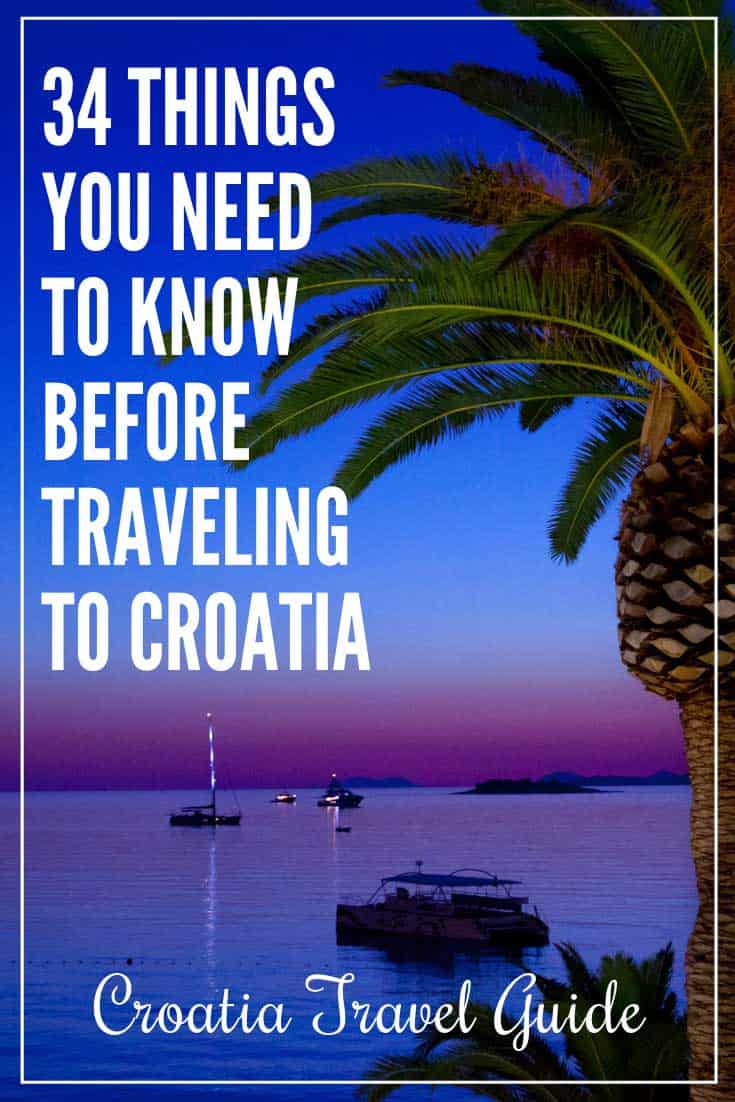
You can also travel to Croatia from other European towns by bus . Bus schedules are a bit harder to search for as many bus companies run the service. However, if you want to travel by bus, we highly recommend using the GetByBus website to check and book intercity buses in Croatia and beyond.
You can also check with a local bus station once you are at your destination and can physically walk there. Getting information over the phone or email can be impractical and expensive (yes, they still use automated phone machines that make you wait forever and charge you a fortune for waiting!).
Find out more here:
- Zagreb Bus Station
- Split Bus Station
- Zadar Bus Station
Train connections to and around Croatia are quite limited, and we generally don’t recommend traveling by train to Croatia. However, if you really have to, you can find more information on the Croatian Railways website .
International ferries connect Croatia and Italy. Directferries’ website is the best place to check ferries schedules and book tickets online. Jadrolinija operates Bari to Dubrovnik, Split to Ancona, Split to Bari, and Zadar to Ancona car ferry lines, while Venezialines passenger ferry connects Porec, Rovinj, and Pula with Venice.
Our favorite way to travel around Europe, and to Croatia as well, is by car . Whether it’s your own car or a rental car , it’s the most convenient way to move around Europe.
Getting around Croatia
The best way to travel around Croatia is by car . Croatia is a small country with great roads and nice little villages , totally worth a detour. The only way to really discover the country is to travel by car. We’ve written a full post about driving in Croatia and car rental in Croatia .
Another excellent way to travel around Croatia is by bus . Buses are modern, fast, affordable, and frequent. The islands and Istria are the only places we wouldn’t recommend bus traveling . For the rest, if you can’t travel by car for whatever reason, hop on the bus and enjoy the ride. Use BookAway to check lines and schedules and to book your bus ticket online.
Ferries are still the most popular and sometimes the only way to get to the islands. The main ferry ports include Rijeka, Zadar, and Split, but ferries also depart from smaller coastal towns like Brsecine, Makarska, Drvenik, Orebic, Ploce, and Prapratno. Jadrolinija is the largest ferry operator in Croatia, and its ferries cover most of the routes. You can also book your ferry tickets for some routes online through the Bookaway website .
Public transportation in bigger towns is reliable and efficient. Split, Rijeka, Zadar, Pula, and Dubrovnik use city buses, while Zagreb has an extensive network of electric trams and city buses. Public transport costs around 2€ per ride.
Taxis are generally pricey (except in Zagreb and Rijeka), but since Uber entered the market in 2015, cab rides have become more affordable. UberX is available in most popular tourist towns like Zagreb, Split, Rovinj, Dubrovnik, Zadar, etc… Uber and Cammeo Taxi are the cheapest taxi options in Croatia. However, both companies also adjust their rates to demand dynamically, and rates generally increase during the main tourist season.
Croatia holiday destinations
One of the most common questions is where to go in Croatia . Many visitors who travel to Croatia for the first time tend to visit the main tourist towns and attractions, like Zagreb, Split, Plitvice, Hvar, and Dubrovnik. However, Croatia has many hidden gems , charming villages , wonderful natural sites , and beautiful beaches .
Where to go depends heavily on the type of traveler you are, the things you want to do , the time you plan to spend in Croatia, and your budget .
We have written extensive travel guides on the following holiday destinations in Croatia:
- Split Travel Guide
- Dubrovnik Travel Guide
- Zagreb Travel Guide
- Plitvice Lakes Travel Guide
- Hvar Island Travel Guide
- Rovinj Travel Guide
- Porec Travel Guide
- Rabac Travel Guide
- Pula Travel Guide
- Brac Island Travel Guide
- Peljesac Peninsula Travel Guide
- Dalmatia Region Travel Guide
- Dubrovnik Region Travel Guide
- Istria Travel Guide
National parks
Croatia is a small country with a surface of just over 56.000 m2. However, due to its geographical location, geomorphological and ecological conditions, and climate, in terms of biodiversity, Croatia is one of the richest countries in Europe.
The nature here is divine: from the Adriatic sea and high-rising mountains to the plains of Slavonia and the rolling hills of Istria and Zagorje.
The country has eight national parks, ten nature parks, and two strict reserves. Almost 10% of the country’s territory is protected. The national parks of Kornati, Brijuni, and Mljet are located on the islands and are characterized by rich marine life. The Risnjak, Northern Velebit, and Paklenica national parks cover mountainous areas. They all feature interesting limestone rocks, meadows, and vast forests.
Plitvice Lakes, Croatia’s most visited national park, and Krka national park are famed for their lakes, streams, rapids, and waterfalls.
Unesco World Heritage Sites
Croatia doesn’t lack cultural and historical sites. Even ten of them made it to the Unesco World Heritage Sites list.
These sites include The Euphrasian Basilica in Porec, St. James Cathedral in Sibenik, the old town of Trogir, Diocletian Palace in Split, Dubrovnik old town , Stari grad planes on the island of Hvar, Plitvice Lakes, the Venetian Works of Defence from the 16th and 17th centuries in Zadar and Sibenik, Stećci Medieval Tombstone Graveyards in Cista Provo and Konavle, and Ancient and Primeval Beech Forests in national parks Paklenica and Northern Velebit.
With the exception of the Plitvice Lakes, all other sights are located along the coast. Here is our list of 10 Unesco World Heritage Sites in Croatia not to be missed.
Accommodation
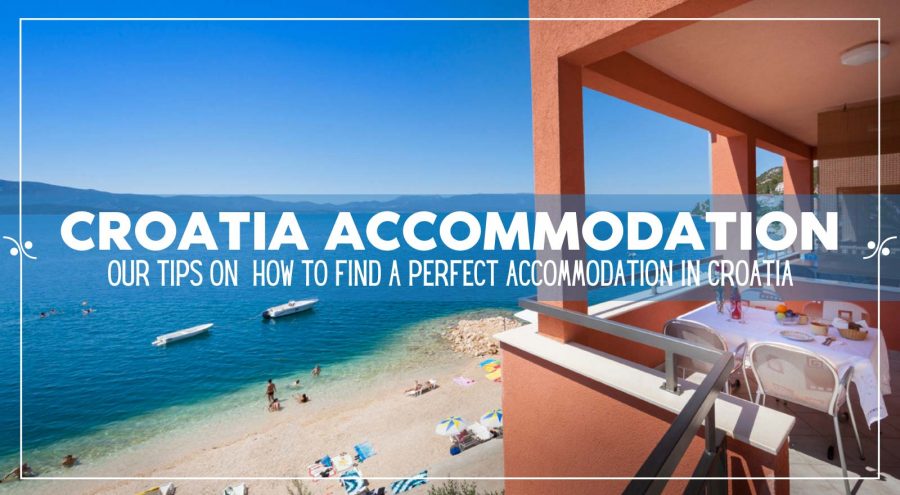
We often get asked about the best type of accommodation in Croatia. For this reason, we’ve written a full post on different types of accommodation in Croatia , with their pros and cons.
Croatia offers a variety of accommodations to choose from: hotels, hostels, apartments, villa rentals, and campsites. Which is right for you depends heavily on your travel style and budget.
Croatia is mostly seen as a 4-star family destination . However, some destinations are fancier than others. This is particularly true for Dubrovnik, Hvar Town, and partially Rovinj.
We’ve written extensive guides on accommodation in the following destinations in Croatia:
- Where to stay in Split
- Where to stay in Dubrovnik
- Accommodation in Zagreb
- Where to stay in Rovinj
- The Best Hotels in Rovinj
- Where to stay in Porec
- Plitvice Lakes Accommodation
- Where to stay in Pula
- The 12 Best Makarska Hotels
Hotels in Croatia
A good choice of 5-star hotels you’ll find in Zagreb, Dubrovnik, Rovinj, and Losinj Island. Although some hotels offer an all-inclusive formula, all-inclusive resorts aren’t popular in Croatia. All-inclusive Croatia mostly refers to a full board meal plan with unlimited selected drinks at mealtimes. Many hotels in Croatia offer a half-board meal plan , and dinner often comes cheap when purchased as a part of a room rate.
Booking.com is by far the most popular website for browsing and booking hotels in Croatia. They offer the most flexible booking policy and offer the most choice of properties. You can also check the hotel’s official website. Sometimes hotels offer special deals available only through their website.
Apartments in Croatia
Many Croatians rent apartments to tourists. Apartments are a good alternative to hotels. They are cheaper, offer more space, and come with a fully-equipped kitchen.
Apartment rentals, just like hotels, need to be licensed and get an official star rating. The most popular websites for apartment rentals in Croatia are Booking.com and Airbnb.
Villas in Croatia
Another popular and emerging type of accommodation is villa rentals . Mostly located off the big tourist resorts, these villas offer peace and quiet, and lots of privacy. Besides, villas come with a pool where you can chill all day long.
Croatia is also a very popular camping destination . There are lots of campsites all along the coast, and just a few of them are in continental Croatia.
Popular campsites in Croatia include Lanterna in Porec , Valkanela in Vrsar, Polari in Rovinj, Park Umag, and Zaton near Zadar. The best place to make yourself familiar with Croatian campsites is the Camping.hr website, an official website of the Croatian Camping Association.
Many of our readers reach out to us with a question about driving in Croatia, road condition, and safety on Croatian roads. Croatian roads are in very good condition. A fairly new multi-lane motorway connects Zagreb to the north and Rijeka to the northwest with Ploce in the south.
Tolls apply on all multi-lane motorways named with the letter A, as well as on some tunnels (eg. Ucka tunnel between Rijeka & Istria), etc. A one-way fee from Zagreb to Split (approx. 400 km) costs 24 € (25 $)*.
Besides motorways, you can also travel on toll-free state roads. These roads are also in good condition, but a single carriageway road, with a single lane for each direction, and some of them, particularly a coastal road D1, are winding.
*prices checked in January 2023
Renting a car
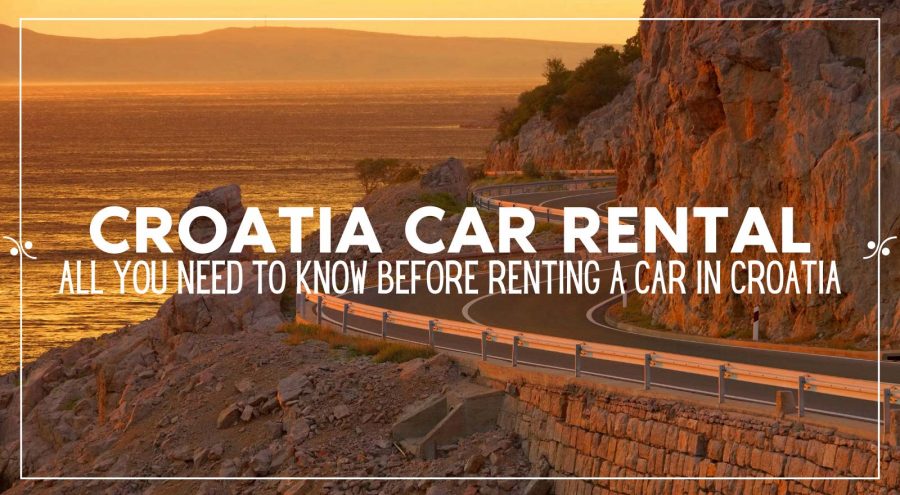
The best way to explore Croatia is by car. And if you don’t travel in your own car, don’t shy away from renting a car in Croatia. You’ll be able to take in the sights; travel off the beaten path; see more in less time, and have the freedom to stop wherever and whenever you feel.
Car rental in Croatia is very seasonal . This simply means that you’ll need to secure your car rental well in advance if you plan on visiting Croatia in July and August. This also means that rental prices increase dramatically in these two summer months. We recommend using Rentalcars.com for your car rental in Croatia.
Tourist registration
All tourists staying in Croatia need to be registered at a local tourist office. And non-EU citizens will also be automatically registered with the police.
This is the reason why during the check-in process at any hotel, private accommodation, or campsite, you’ll be requested to show (and often leave until the next morning) your passport or an ID card.

We love food in Croatia. It’s varied, fresh, local, and tasty. In continental Croatia, people eat lots of meat, while a diet in coastal regions is heavily based on fish, other seafood, and green veggies.
As a traveler, you might also make some false assumptions based on food offered in touristy restaurants along the coast. These restaurants often offer what tourists ask for, and not necessarily typical Croatian dishes.
One of the most popular posts on our blog is our post on must-try Croatian dishes . Make sure to read it so you don’t miss some of the local specialties.
We also give a couple of tips on where to find local, delicious, and cheap eats in Croatia .
And don’t miss our ultimate list of the best places to eat in Croatia . Istrian restaurants rank the highest on this list.
Tap water is safe to drink in Croatia. However, if you still prefer to drink bottled water, bear in mind that bottled water is extremely expensive here. For instance, a 1.5 L bottle of natural water costs around 0.9 € in a supermarket, three times more expensive than in Italy. You can find cheaper bottled water in Lidl, and Eurospin supermarkets.
The legal drinking age in Croatia is 18. Among alcoholic drinks, wines, beer, and spirits are very popular in Croatia.
Drinking usually takes place at cafe bars, serving any kind of drinks, from coffee, and tea, to wine, beer, and any alcoholic drinks. Cafes work all day, opening as early as 6 am, and closing usually around midnight. Nightclubs, pubs, and some bars work until 4 am.
Local wines are good. In the last two decades, many small, family-run wineries have set high standards in the production of quality wines made of indigenous grape varieties, like Malvazija, a dry white wine produced in Istria , or Plavac Mali, a red variety dominating vineyards of the southern Dalmatia .
Croatians also drink lots of beer , but you’ll hardly find an exciting choice of beers here in Croatia (not the case any longer, the craft beer scene in Croatia is now super exciting! ). The most popular mass-produced local beers are Karlovacko and Ozujsko, both light-lager types. In recent years many microbreweries started putting on the market a more appealing craft beer, like San Servolo , LAB, or Zmajska Pivovara .
Spirits are very popular in Croatia, and they come in a variety of flavors. Here they are called rakija . The basic one is most often produced from grapes (called Loza), but then they are flavored with different ingredients. The most popular are travarica (herb brandy), medica (honey brandy), orahovaca (walnut brandy), visnja (cherry brandy), mirta (myrtle brandy), and rogac (carob brandy).
Travel Insurance
Travel insurance covers all kinds of situations if things go wrong: from luggage loss, to trip cancellation, to medical assistance.
If you are an EU citizen then your European Medical Insurance Card covers your basic medical needs and emergency medical care. However, it doesn’t cover emergency transport to your home country.
Non-EU citizens are advised to check with their embassies for what level of medical care they are covered in Croatia, as it heavily depends on the bilateral and reciprocal agreement between the countries.
For other damages like document and baggage loss, loss of belongings, and trip cancellation, you’ll definitely need to purchase travel insurance. There are many travel insurance companies offering different insurance options and packages. You can compare all your options using a website like Travel Insurance Review .
We recommend buying travel insurance from Safety Wing . Available to people from the majority of countries (only sanctioned countries are exempt) it’s designed for all kinds of travelers. And it covers overseas medical, evacuation, baggage, and a range of travel misadventures and delays. And, one child up to 10 years of age is included in an adult’s policy free of charge. You can buy it and claim it online , even after you’ve left home.
Tours and activities

Croatia offers a lot of activities to do for all ages and all year round. The country is rich in history, natural beauty, ancient towns, wonderful architecture, pristine beaches, and rugged mountains.
Foodies will enjoy exploring restaurants in Croatia, especially in Istria, Zagreb, Dubrovnik , and Split . Croatia produces some of the world’s best extra virgin olive oils (if you wonder why you should care, read Tom Mueller’s book Extra Virginity: the sublime and scandalous world of olive oil ). There are lots of places where you can go for an olive oil tasting , and learn how to distinguish the real stuff from the crap. A visit to a winery is a must in Croatia, particularly in Istria.
Tisno on the island of Murter, Novalja on the island of Pag, and the town of Hvar offer 24 h partying for the young and restless.
Outdoor enthusiasts will love Omis, Paklenica, and Cicarija. They all offer an endless choice of adventures to enjoy.
We’ve written a full post on things to do in Croatia . You can also check the Get Your Guide website for a full list of tours and activities in Croatia.
Itineraries
We are often asked to suggest or revise a proposed itinerary for Croatia. So here are a few things to bear in mind when planning your Croatian itinerary.
Although the country is relatively small, it’s long (from Umag in the northwest to Dubrovnik in the south there is over 700 km), and it’s not that quick to travel from north or west to the south.
If you plan to visit Croatia for less than a week , we highly recommend you pick up one destination and stick to it. Do day trips from there , but don’t pretend to visit the entire country in less than a week. Also, in July and August, you need to take into account possible traffic jams, and congestion on the roads, as well as queues for ferries.
If you stay a week or ten days , you can include a few highlights in your itinerary, like Zagreb, Plitvice, Split, and Dubrovnik.
Suggested week itineraries
a | Zagreb – Plitvice Lakes – Split – Hvar – Dubrovnik
b | Dubrovnik – Peljesac Peninsula – Korcula – Split – Zagreb
c | Zagreb – Plitvice Lakes – Istria
Suggested two-week itineraries
a | Zagreb – Opatija – Istria – Plitvice Lakes – Zadar – Krka Waterfalls – Split – Brac Island – Korcula – Peljesac – Dubrovnik
If you prefer to join a group tour, we highly recommend checking tours proposed via Tour Radar. They have a classical coach and boat tours, but they also have a great choice of adventure, cycling, and various themed tours.
Here are a few suggested group tours found on Tour Radar:
Croatia & Adriatic Cruise
This 11-day tour gives you the best of continental Croatia and the Adriatic. The tour starts in Zagreb, and ends in Split, with a visit to 10 other destinations in between. We like that this tour takes you to the Peljesac Peninsula, one of our favorite regions in Croatia. You also get to see Korcula, Hvar, Elafiti Islands and Mljet islands. The small cruise ship can fit 30 passengers in air-conditioned cabins.
Check availability and prices!
Best of Croatia and Slovenia
This 11-day discovery coach tour starts in Zagreb and ends in Dubrovnik. However, it’s packed full of exciting destinations in Croatia, and neighboring Slovenia including Ljubljana, Bled, Rovinj, Opatija, Plitvice, Trogir, Split, and Peljesac peninsula. You will get to see many great destinations in a short period of time, while still having ample time on your own. The tour also includes one special “Be my guest” dinner where you get a chance to experience a traditional meal with a local family.
Croatia Island Hopper from Split
This 8-day island hopping tour operated by G Adventures is one of the most popular tours in Croatia on Tour Radar. The boat tour starts and ends in Dubrovnik with stops in Hvar, Mljet, Korcula, Brac, and Solta.
Cycling the Dalmatian Coast
A small group tour takes you from Split to Dubrovnik in 8 days on your bicycle. The tour provides accommodation, meals, and transportation. You’ll get a chance to test your cycling abilities in Hvar and Korcula Island, along the Peljesac peninsula and Dubrovnik. The tour is intended for all levels of cyclists. The scenery along the route is lovely.

When you think of shopping, Croatia doesn’t necessarily come to mind. However, there are a couple of awesome things to buy in Croatia.
Croatian artisan olive oils are some of the best in the world. Croatian design and concept stores are also making momentum; check the Take Me Home store in Zagreb or Prostoria in Rovinj for some original souvenirs, accessories, unique clothes, bags, and jewelry.
We’ve written a full post on the subject: Croatian souvenirs: fun, cool, and authentic . Don’t forget a high-end tie store – Kravata Croata .
Open markets , where you can buy fresh produce, are popular in Croatia. The largest national supermarket chain is Konzum. Other popular supermarkets in Croatia include Lidl, Kaufland, Plodine, and Spar.
Supermarkets are open throughout the day, Monday to Saturday. On Sunday some shops are open all day, particularly in shopping centers, while downtown shops often close at 1 pm or 3 pm. In summer, along the coast, shops are open seven days a week, and often as late as midnight.
Is Croatia a safe place?
Croatia is a very safe country with very little street crime and almost no violence. However, as everywhere, take care of your belongings, especially when using public transport.
Land mines are still present but in remote areas where tourists rarely visit anyway.
Croatia travel guide: Internet
The Internet in Croatia is widely available. WiFi coverage is pretty good, with many towns offering free wifi hot spots at prominent places in a town. Most of the private accommodations, as well as hotels, and even campsites, offer a free WiFi internet connection.
However, the broadband internet in Croatia isn’t as fast as you are perhaps used to. At least it’s not as fast everywhere in Croatia. In bigger towns, the internet is fast, easily available, and reliable. According to Speedtest.net , Croatia has the 22nd fastest download speed for mobile internet in the whole world. But, the fixed broadband is pretty slow (Croatia takes 89th place on the global scale).
The average internet download speed in Croatia in March 2023 was 71,16 Mbps for mobile, and 45,61 Mbps for fixed broadband.
Roaming charges
Since the summer of 2017, roaming surcharges within EU countries don’t exist longer. This means that, if you are with any EU mobile provider, you will pay the same prices for data, calls, and SMS as you would pay back home.
How free is free? You need to check with your provider what’s the amount of roaming data within the EU. For example, we have a flat rate for internet data in our mobile phone rate package. But, when we spent two months in Spain in the winter of 2022, we realized that we have only 10 GB of data free of charge in other EU countries.
So while the roaming data is free in the EU, the free data isn’t unlimited. Anyways, 10 GB is pretty enough, unless you are binge-watching Netflix shows for hours at times. I hope you don’t do that on vacation!
However, roaming charges for other countries are still pretty high. You can purchase some of the mobile operators’ packages either in your home country or in Croatia.
In Croatia, Telemach sells 10-days unlimited surfing for less than 11 € while T-com sells 7-days unlimited surfing for 11€ . It includes nano, micro, or SMS card. You can buy these packages at gas stations, newsstands, T-com or Telemach centers, and Croatian post offices.
The Airalo eSim packages are a good alternative to local SIM providers. We always use Airalo when traveling abroad.
Is Croatia part of the EU & Schengen visa regiment
As of January 1, 2023, Croatia is a member of Schengen, and thus it is a part of the Schengen visa regiment. This means that there aren’t border or customs controls between Croatia and other Schengen member countries for people crossing the borders by road, rail, or water. However, border and customs controls at the airports will stay in place until March 2023.
If you have a valid Schengen visa, you don’t need a separate visa to visit Croatia and vice versa. This also means that visiting Croatia and the days spent here will count toward 90 days maximum stay within 180 days for your Schengen visa.
When crossing into and out of the non-EU, and non-Schengen countries, you’ll still need to show your documents at the border, and vice versa. These include Bosnia and Herzegovina, Serbia, and Montenegro.
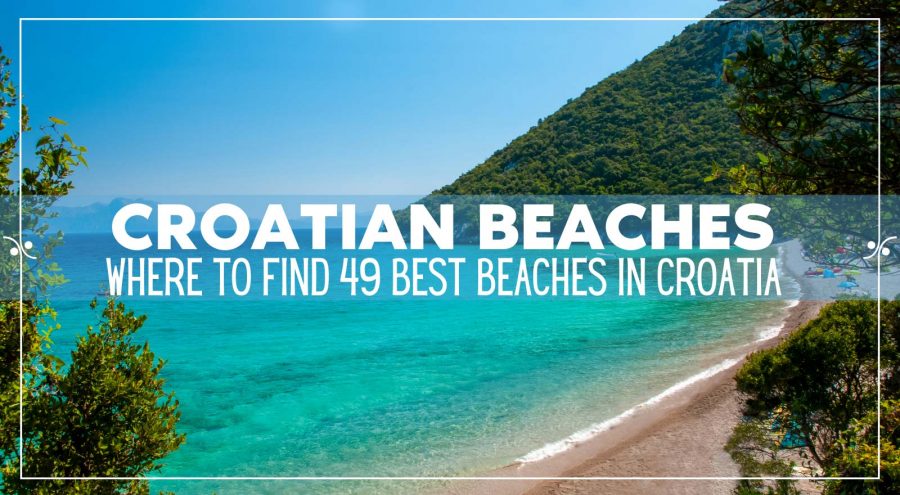
The sea and sun are still two main reasons for so many people to visit Croatia. Croatia has over 6.000 km of coastline and over 1.000 islands. The two most popular coastal regions are Istria to the north and Dalmatia to the south.
The Croatian coast is mostly rocky with pebble beaches mostly formed in coves and bays. Makarska Riviera, located in central Dalmatia, offers the most beautiful beaches in all of Croatia . Perfectly round and small pebbles that feel almost like sand but that don’t stick on you forever.
The sea is limpid and clear, you can often see the seabed from far away. My in-laws have a seafront property in Komarna , in southern Dalmatia, and I can see the fish swim in the sea from the third floor of their house.
So, if you search for that perfect sandy beach, you might get disappointed with the beaches in Croatia. Although there are some sandy beaches here too, they are simply not a Croatian thing.
In Istria, the coast is a bit rougher than in Dalmatia, and pebbles are rare to find. However, the beaches here feel less crowded, due to the well-preserved coastline.
Parking in Croatia
If you travel to and around Croatia by car, you might wonder about the parking situation in Croatia. Generally speaking the majority of hotels and private accommodations offer a parking spot free of charge.
However, bear in mind that city centers are usually car-free zones or have limited car traffic. If your accommodation is within the city center enquire about parking before booking.
There are three types of parking: garage parking, open-air parking lots, and street parking. Expect to pay around 1.1 € to 1.6 € per hour in town centers. However, some parking is more expensive, like parking at Riva in Split which cost 4 € an hour; then, in Dubrovnik, where you will pay for an hour of parking in Zone 0 as much as 10 €.
We talk more in-depth about parking in our destination guides . Don’t forget to check them once you decide on your destination .
Do people speak English in Croatia?
You don’t speak Croatian? No worries, most Croatians speak at least some English, and many speak at least another foreign language. Besides English, German and Italian are the most widely spoken languages in Croatia.
Is Croatia expensive to travel to?
Croatia isn’t a cheap place to visit. It’s more expensive than the neighboring countries, like Bosnia & Herzegovina, Serbia, or Hungary.
Generally speaking, continental Croatia and Zagreb, in particular, keep prices moderate to, I would dare to say, even cheap. However, the coast is mostly expensive, and the prices tend to increase year after year.
That said, if you travel on a tight budget, you can still keep it under control. Stay away from top destinations (visit them but sleep somewhere else), come in the off-season, explore places off-the-beaten-path, forget hotels, choose instead an apartment with a fully-equipped kitchen and prepare your own meals, ask locals for good value restaurants, etc.
Check our budget tips for traveling in Croatia , and also a post on the total Croatia trip cost .
Tipping in Croatia
People often ask us what’s tipping etiquette in Croatia. In short, tipping isn’t necessary but it is widely appreciated and accepted.
The majority of Croatians, in bars and restaurants, simply round up the bill. We on the other hand, out of habit, always leave around 10%, and only if we are satisfied with the service.
If you are taking a group bus tour, someone will usually collect the tips for the driver and the guide at the end of the tour. Here, usually, people chip in on what they feel is appropriate.
What time zone Croatia is in?
Croatia belongs to the Central European Time Zone, meaning it is one hour ahead of GMT (Greenwich Mean Time), and two hours ahead of GMT when daylight saving time is observed.
Daylight saving time makes us move our watches one hour ahead. It takes place from the last Sunday in March until the last Sunday in October.
Find here the time differences between some major towns when compared to Croatia:
- Barcelona: 0
- London: – 1 hour
- Montreal: – 6 hours
- New York City: -6 hours
- L.A.: -9 hours
- Chicago: -7 hours
- Tokyo: +7 hours
- Sydney: +8 hours
If you are traveling from overseas, you will certainly experience jet lag when visiting Croatia. You can check this no-jet lag homeopathic remedy to ease your symptoms.
How much is VAT in Croatia and is it refundable?
At the moment, VAT in Croatia is 25% for the majority of products. If you are a foreigner without permanent or temporary residence in Croatia, you can ask for a tax refund for all purchases above 100 €.
Ask the salesperson for the tax-free form at the moment of purchase. Fill it up, get it stamped right there, and then again at the airport, or at the border by a customs officer. You have six months from the purchase date to claim your VAT return by mailing it back to the shop where you originally bought the item.
Another way to achieve a VAT tax refund is to look for shops that are part of the Global Blue Tax-Free service . They all have a sign displayed in the window along with the working hours, and credit cards that they accept. The procedure is similar (fill up the tax-free form and get it stamped at the shop, and at the airport), but the refund is quicker and can be obtained already at the airport, in Global Blue’s office.
Croatia plugs, adapters, and converters
Croatia uses 220V, 50 Hz frequency, and standard European type C & F plugs. Both are similar plugs with two round prongs with 19 mm between the two.
If the plugs of your devices are different, you will certainly need an adapter in order to charge them. You can find one here.
While adapters will help you use your plugs in Croatia, converters will help transform voltages from higher to smaller or vice versa. If you need a converter you can easily buy one on Amazon .
Recommended travel guides
- Fodor’s Croatia Travel Guide (we are co-authors!).
- Lonely Planet Croatia Travel Guide
- Rick Steves Croatia & Slovenia
Further reading from our Croatia travel guide
- Croatia Travel Guide: Things To Do In Croatia
- Ultimate Guide To Accommodation In Croatia
- Packing List For Vacation In Croatia
- How To Choose Your Destination In Croatia
- Where to go in Croatia: best places to visit in Croatia
- Car Rental In Croatia
- Driving In Croatia
- Cost of Travel To Croatia
- Croatia On Budget: Money-saving Tips
- Outdoor Activities in Croatia
- 49 Awesome Beaches In Croatia
- Snorkeling In Croatia
- White Water Rafting In Croatia
- 20 Must-Try Foods In Croatia
We hope you’ve found our Croatia Travel Guide useful. Is there anything else you’d like to know? Let us know in the comments below.
Frankaboutcroatia.com is a participant in the Amazon Services LLC Associates Program, an affiliate advertising program designed to provide a means for sites to earn advertising fees by advertising and linking to Amazon.com and affiliated sites. This post might also contain affiliate links to other sites, like accommodation or activities. And if you purchase anything using these links, we earn a little commission with no extra costs for you. Thank you for supporting our blog! Read full disclaimer here.
Home / Croatia Travel Tips / Croatia Travel Guide: Things To Know Before Traveling To Croatia
48 thoughts on “Croatia Travel Guide: Things To Know Before Traveling To Croatia”
Love your blog. A lot of useful info.
We’re thinking of coming in mid-October to November 4. Will tourist sites still be open in that first week of November?
Thanks for your input.
I am Croatian and I must say, epic post!
Hi we plan to travel to Croatia in July 2020. I am trying to convince my husband to rent a car but he is worried about driving in a foreign country. Can you give any opinion on this topic? I am more worried about the inconsistency of travelling by train and having to wait and plan with the transportation schedules, as well as carrying luggage everywhere.
Hi Marcia, this is the exact reason why we suggest that you take your charges in Kuna. Because your credit card doesn’t charge you a transaction fee. If you take it in your home country, then Croatian bank will charge the transaction fee, or rather they will use the less favorable exchange rate, so they make money. Just keep it in the local currency, even more so if your credit card doesn’t charge these fees. Hope this helps.
You stated that it is probably best to request credit charges be made in kuna, rather than US currency. If my credit card does not charge a foreign transaction fee, would that still be true?
Firstly, congratulations on your brilliant web site, so helpful to first time visitors to Croatia. We are staying on Korcula at the end of September, would you recommend booking the ferry, and if so which is the best web site to use?
It all depends. Zagreb is ok for a day or two, Split for two or three, the same goes for Dubrovnik, or Rovinj.
Thanks for all the info. We are coming from Canada for a 10 day stay beginning of July. We fly in & out of Zagreb but want to see Split & go up north for a bit too to see some family birthplaces. How much time do you recommend for each city stay & absolute must sees while we are there?
Epic post Frank! I’ve spent the last couple of summers sailing around Croatia and think it’s incredible. Favorite island is most probably Kos. Have some great memories of playing cricket with some of the locals. Cant wait to get back!
What is the best option to travel from Zagreb to Venice
This was amazing and super helpful! For first timers going to Croatia (about a week) where do you recommend going? Was planning for a July trip, but your post sort of scared me to be mentally prepared ha!
Do you ever work with readers to come up with an itinerary?
This was super helpful! Thanks!
Great info…thank you very much. My Bride and I will be in Croatia from Sep 11 to Sep 20. We will arriving in Dubrovnik and leaving from Zagreb. We are planing to stay 3 days in Dubrovnik, 3 in Split and 2 in Zagreb. Would you recommend any changes to this and what places around those three cities are a must? We will have a car. We love waterfronts, small (Mom & Pop) licensed restaurants, some beach time and sightseeing. Any suggestions would be appreciated. Mário & Fatima Sousa…….Mississauga, Canada
Hi Frank! Thank you for all of the info. I am a bit overwhelmed. My husband, 2 adult daughters and I are planning our trip to Croatia in late May/early June 2019 for a week to 10 days. We love adventures! What itinerary would you suggest?
Great info, thank you. We are planning our trip for Sept/Oct 2019, touring around Croatia and neighboring countries for 2 weeks. Planning on staying just outside of Zagreb, Split and Dubrovnik. We are travelling from Canada, renting a car and booking Apartments and BnB’s. Wondering if there would be any significant differences between September and October for weather, costs, tourism, crowds, etc. Thanks in advance.
Your blog is really helpful.
We are from India and we are planning to visit croatia in the last week of february, 2019. And we are majorly looking to cover North (Alps, Gorski Kotar) and South (the beaches and other popular places).
Since we are not fully aware of the weather conditions in Feb, I wanted to ask whether it is decent enough to travel in feb? without any complications brought in by weather?
I am planning a week-long trip to Croatia in September with 8 young adult family members. Is it best to go from city to city staying in a hotel, rent a villa one place and do day trips or rent a boat and go down the coast? Amy
In Septemeber everything should still be open. No worries.
I always go with 10% when in restaurants. As for the rest, you give what you feel. Normally, you collect from the entire group and you give it at the end of trip if you were happy with the service. I am not aware that there is a tipping rule for drivers and guides as for how much should you tip. You basically tip what you feel they deserve.
There is plenty things for kids to do. If I knew where exactly you go, I could have provided more info
Porec, Rovinj, Bol, Brela
thanks for sharing, Lynn! Great clip, it shows well what to expect. However, most of the video is made in the northern part of the road, between Rijeka and Zadar.
Thanks for reading, May! Hope you had a great time in Croatia.
Haven’t been there, Kass. Sorry!
great! let us know if we can help with anything
Have fun, and drop us a line if you have a question
You can stay in Zagreb for a day, Plitvice either for a day or in transit from Zagreb to Split, Hvar for 2-3 days if you want to visit the entire island; otherwise book an island tour from Split. So if you only want to stay in two or three of these towns, make it Zagreb, SPlit and Dubrovnik, because they are best located to do day trips elsewhere.
Thanks for all the great advice. For a two week holiday, can you suggest which towns to stay in? I’d love to visit Zagreb, Plitvice, KrKra, Split, Hvar and Dubrovnik. I’d like to stay in two or three places and do the rest from there.
Great blog. Thanks for the info. We – fellow Canadians – plan to spend Jan to Mar 2019 in Croatia, basically in the Trogir area. We’d appreciate any further thoughts you’d wish to pass on.
I would like to know about tipping in Croatia for bus drivers and tour guides. Our travel club is bring a group to Croatia in May 2019.
Hi..We are planning to visit next year..Have children who will be agedelivered 11 and 13..are there things for them to do?
Hi there. Thanks for all the information. So useful! Question re timing. I would head over in the September holidays to beat the crowds but want to check most of the bars etc are still open all year round. Sometimes in countries like Japan where we lived for 8 years they are very strict on seasons and so going outside (even slightly) means u go to a great beach bar only to find it closed. Thanks
Thank you for your blog and the very valuable information you provide. My family (a total of 16 of us) are visiting Croatia at the end of this month. 3 of us are from BC Canada so it has been even more exciting to hear what you have to share.
Hello Just found your blog and its just what i,m after, so much information. I am visiting Croatia next month with my son, we are staying near Trogir. I was going to take kuna but you say most places take Euros? I have rented a car and plan to travel around a bit. Thanks Karl
I am watching the World Cup finaland cheering for the team! I decided to visit the beautiful country in 2019 with my family. Look forward to it!
We’re going in September to visit Lokve, where my husband’s people are from. Have you been there? Can you tell us anything about it? Thanks!
We are currently in Croatia and it is just beautiful. The water shades from turquoise to deep blue and the rocky hills provide a beautiful contrast in the landscape.
We stayed rather in the south and we took the E65 coastal road. If you have time to spare and you are not in a hurry, I recommend this road compared to the highway. I wish I could describe it but I will never be able to narrate the full picture, so I made a short clip on our journey that I wish to share.
It is on YouTube — https://www.youtube.com/watch?v=AKEiQI4NOos&t=60s
Hello, very nice blog of yours! I was wondering what area you would suggest a family of four to stay in. A place that is child friendly and filled with entertainment is something I had in mind, but would like to know what places wold exactly fit my needs. Thank you!
Hi there, me and my husband have been trawling the internet looking for ideas of where to visit with our two children (2 & 9 years) and we’ve stumbled upon your AMAZING site. It’s literally a godsend!! Please could i pick your brains and ask where you would best recommend? We love the beach, history and lovely food!! Any advice would be so gratefully recived!
Hi, loving the information on your website. We are coming to Croatia for 2 weeks from the 6th of September, and are wondering if you think we need to pre-book accommodation or should we be able to book a few days in advance? Cheers, Karen
Hi Frank, just found your website and love it. My husband and I will be vacationing from US to Croatia from Sept. 5 to 19. First time. Don’t plan on seeing the entire country on this visit but would like a few highlights. We will land in Split and leave from Dubrovnik. Are there any and can you recommend a private tour guide company?
Hi – so glad I stumbled upon your wonderful post ! We are thinking of travelling to valamar island in July . I am concerned it will be very busy and hugely commercial ? X
Hi Colleen, if you would like to receive our newsletter, please sign up for it through the website. Let us know if we can help with anything regarding your upcoming trip to Croatia.
Frank, Please add me to your list. I plan to visit this wonderful country in 2019. Colleen
Hi. Will be in Croatia July 17-31. We’d love to book a 3-5 day sailing or yacht trip around the islands. Possibly start and end in Split. Do you have any recommendations?
I have been to Croatia with my mum last year and this charming country won our hearts, Frank! I still haven’t crossed Dubrovnik off my bucket list, but your post was truly inspiring. I guess now I have plenty of more reasons to explore magnificent Croatia!
Really enjoy your detailed travel guide! My gf and I (early/mid 20’s) are traveling to Dubrovnik, Croatia next week and we plan to rent a car for about 10-11 days. Our plan is do explore the coast of Croatia, spend some time in several cities and eventually make our way to Slovenia where we’ll return the car.
Do you have any advice with regard to having the “luggage” of the car, and doing trips to islands and etc.? We want the car to have the flexibility, but we may not use it EVERY day. We also don’t want to try and pack too much into the week and a half we are in Croatia. There is the potential we stay longer, but we thought it may be neat to make our way up to Slovenia, spend a few days there then make our way to Austria for a week.
Any thoughts would be greatly appreciated.
Hi guys, we love your blog and passion for Croatia. We are a family run business, that runs 3 adventure bases in Croatia. We only employ local staff and follow green responsible policies. We would love to talk about working with you. Whats your best mobile number?
Leave a Comment
US travelers can go to Croatia - but not the rest of the EU
Jul 22, 2020 • 2 min read
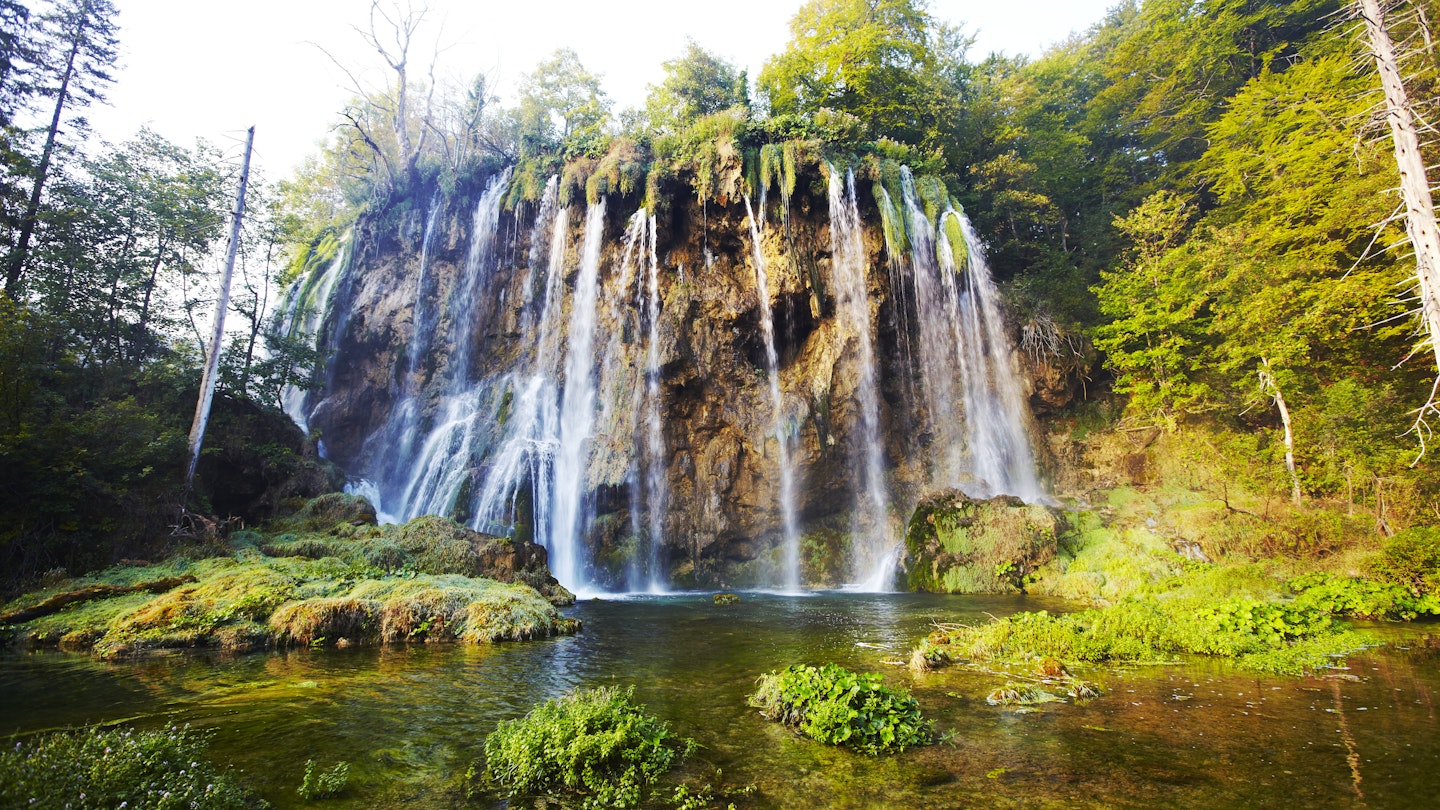
US travelers are permitted to enter Croatia © Mark Read / Lonely Planet
It may be surprising to American travelers to learn that they are permitted to enter Croatia at present, even though the US is not on the list of countries for which the European Union recommends lifting travel restrictions caused by COVID-19.
The EU published a list of countries whose citizens are permitted to travel to Europe from 1 July, but it did not include the US as the coronavirus outbreak is not under control there yet. However, the list is not legally binding, and Croatia has chosen to open up its borders to all international travelers. Travelers from the EU and Schengen zone can enter Croatia without restrictions, but those from third countries must present proof of their reason for travel on arrival. Visitors traveling for tourism reasons may enter, provided they hold evidence of paid accommodation in Croatia.
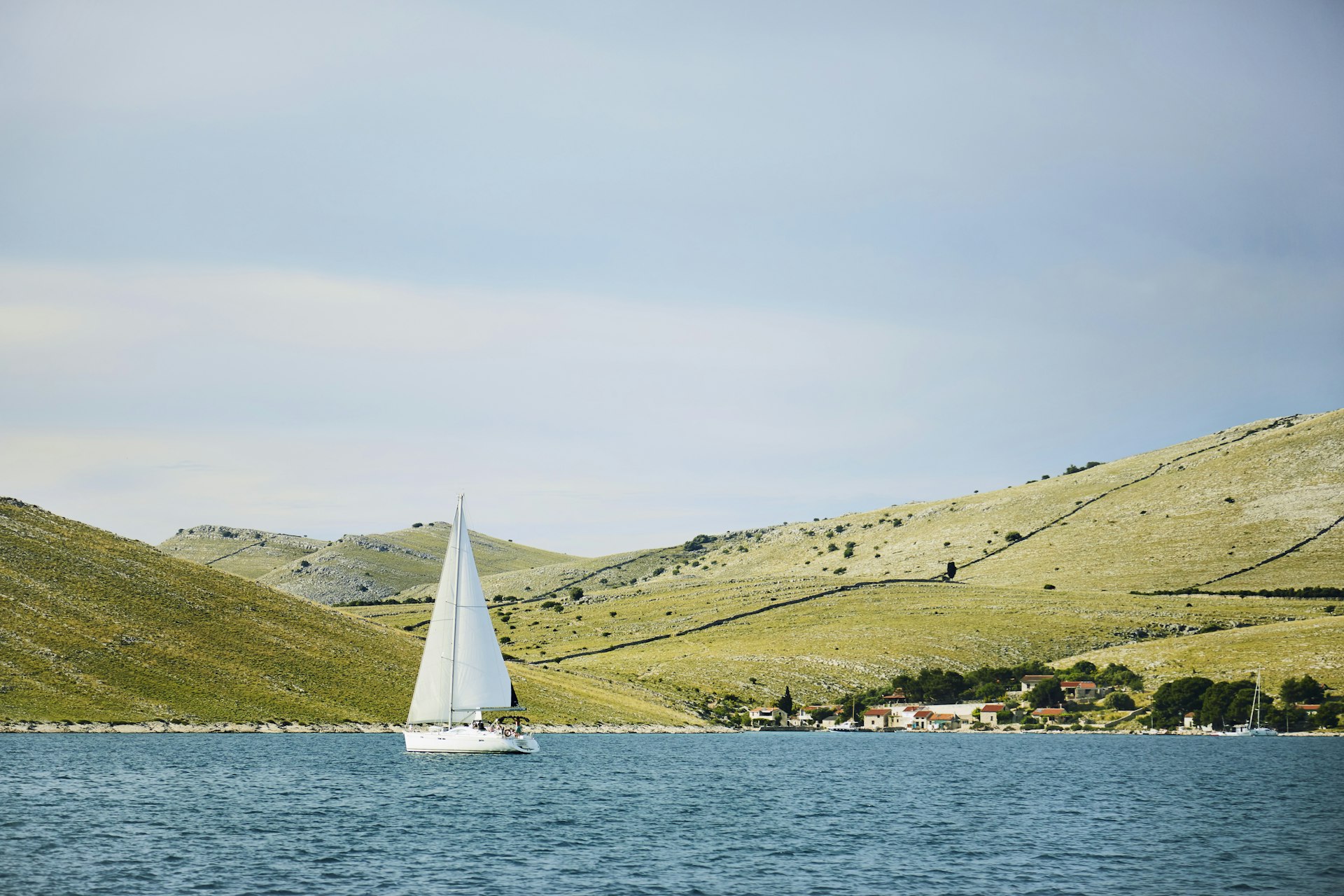
They are also permitted to enter for urgent personal reasons, such as attending a funeral or medical treatment, but must provide proof of same. This also goes for those with business or economic interests in Croatia, or those entering for education purposes. One condition is third-country travelers, including those from the US, must provide evidence of a negative COVID-19 test result taken within 48 hours of arriving in Croatia. If they don't have that, they must undergo a mandatory quarantine/self-isolation period of 14 days upon arrival in the country.
Travelers should note that while Croatia is part of the EU, it is not part of the Schengen area, so it is not possible to cross Croatia’s borders into other European countries without passing through border controls. Further information can be obtained from the Croatian Ministry of the Interior's website here.
Lockdowns are easing globally as the planet adjusts to a new normal. Find out how COVID-19 is changing travel.
You might also like:
US travelers will be banned from the Bahamas What it’s like to fly in Europe right now
Explore related stories

Wildlife & Nature
Apr 24, 2024 • 11 min read
We’ve selected 11 gardens around the world that offer beauty, serenity, a connection with nature and a sense of place.

Apr 23, 2024 • 6 min read

Apr 19, 2024 • 6 min read

Apr 19, 2024 • 10 min read
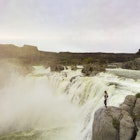
Apr 18, 2024 • 7 min read

Apr 17, 2024 • 6 min read

Apr 14, 2024 • 8 min read

Apr 13, 2024 • 8 min read

Apr 11, 2024 • 6 min read

Apr 10, 2024 • 6 min read
Croatia Travel Guides

Explore a destination in Croatia to see the top hotels and top things to do, as well as photos and tips from U.S. News Travel.
All Croatia Travel Guides
If you make a purchase from our site, we may earn a commission. This does not affect the quality or independence of our editorial content.

- Living In Croatia
- Croatian Recipes
- Balkan Recipes

Home > 27 Traveling In Croatia Tips – First Time Travel Guide
27 Traveling In Croatia Tips – First Time Travel Guide

Written by our local expert SJ
Sarah-Jane has lived in Croatia for 10+ years. SJ, as she is known, has been traveling the Balkans & beyond since 2000. She now shares her passion for traveling with her husband & kids.
Planning your first trip to Croatia? You’re in for an unforgettable adventure! Croatia, with its stunning coastlines, rich history, and diverse landscapes, offers a unique blend of experiences for travelers.
As someone who fell in love with this country during my first visit in 2000 and now calls it home, I’m excited to share some valuable tips and insights to ensure your Croatian getaway is nothing short of amazing.
Whether you’re seeking sun-soaked beaches, exploring ancient cities, or indulging in local cuisine, Croatia has something for everyone. So, let this Croatia travel guide be your trusted companion as you embark on your Croatian journey. Get ready to discover hidden gems, soak in the culture, and create lasting memories in this beautiful Mediterranean paradise.
These tips will make your first break in Croatia extra fun and extra exciting.

- Croatia now uses the euro
- Check if you need a visa
- Don’t be afraid of driving
- Book ahead of time
- Hop from island to island
- Know about tipping
- Croatia is safe
- Make use of public transportation
- Avoid peak season and travel in the shoulder season
- We speak English
- Don’t forget the national parks
- Check the cruise ship schedules
- Keep some cash with you
- Don’t be afraid to try new foods
- Know that the beaches are rocky
- Venture outside of the main cities
- Explore the Istrian Peninsula
- Check out a local sporting event
- Take a day trip (or more)
- Rental apartments can be a great option
- Drink local
- Use Zadar as a base
- Spend time on Pag Island
- You can drink the tap water
- Don’t be drunk
- Croatia is now in the Schengen Zone
- Pack comfortable shoes
I am going to assume that “tips” like “ visit the old city of Dubrovnik ,” “ see Plitvice Lakes National Park ,” or “ check out Croatia’s islands ” are apparent and don’t need to be repeated.
If you’re planning a trip to Croatia, Dubrovnik is likely the first place you’ve heard about. Instead, here are some suggestions that are guaranteed to make your journey that much smoother, take you a bit off the beaten path, and even save you a little money no matter the time of year you go.
1. We Now Use The Euro

Since January 2023, Croatia has adopted the euro as its official currency. This means you won’t need to exchange currency if you’re coming from a Eurozone country. It simplifies your financial transactions during your stay.
- Money & Currency In Croatia

2. Check If You Need A Visa
Visa rules vary according to nationality, so always make sure that you check your particular needs before traveling. Croatia is now in the Schengen zone, so if you travel to other countries in the group, they’re going to add up within your allowance.
- Croatia Visa Requirements Info
- Croatia Digital Nomad Visa Requirements
3. Book Ahead Of Time
A lot of Croatia’s most popular spots tend to become very full during the summer months, particularly Dubrovnik. If you want to avoid disappointment and get the best rates, make sure you book accommodation well ahead of time.
You can head online and find plenty of options, no matter where you want to go.
4. Skip The High Season And Travel In The Shoulder Season
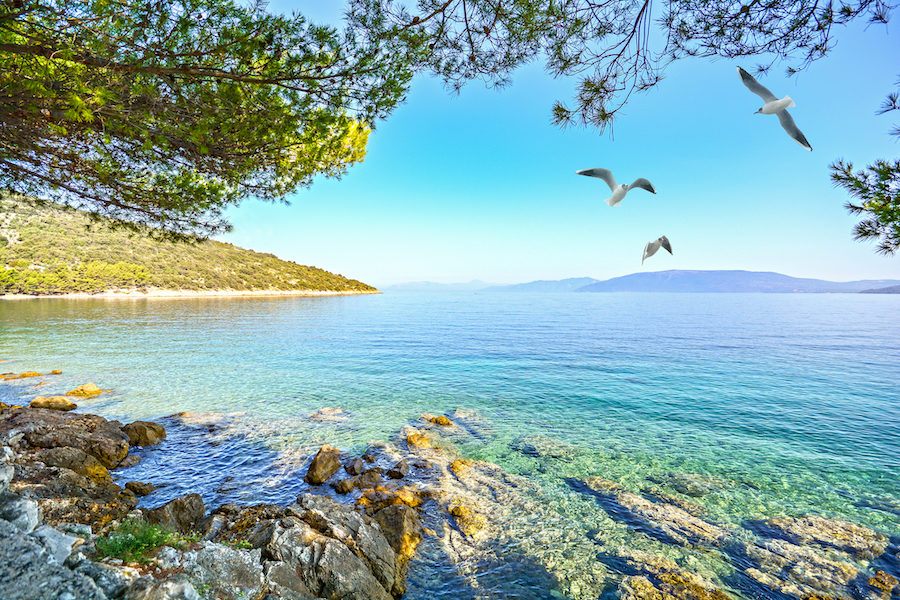
If possible, avoid the prime tourist season months of July and August. Temperatures are high, tourist crowds are insane, and hotel prices are at their peak. You’ll also pay more for ferries, national park entry fees, and other attractions. Do you need any more reasons to avoid the prime months of the year?
We visited Croatia for three weeks in September, starting north of the country and working south. The weather was still warm and comfortable, the sea temps were still suitable for swimming, it was easy to find excellent accommodation , and the worst of the tourist hordes were gone. Now, don’t get us wrong, places like Dubrovnik and Split were still crowded…but imagine how much worse it could have been!
However, one quick heads-up: If you’re traveling to the islands by ferry, the number of scheduled boats reduces dramatically outside of June through to September. Keep that in mind if traveling outside those peak times.
- Best Time To Visit Croatia
5. Croatia Is Safe
Croatia is a destination where you can explore with peace of mind.
Croatia is widely considered safe for you, with low crime rates, especially when it comes to violent crimes against tourists. While petty theft can happen, it’s not rampant, so a little vigilance goes a long way.
Our locals are welcoming and often speak English, making it easy to navigate and ask for help. Croatia’s healthcare system is reliable, and Croatia offers excellent medical facilities if you need them.
6. Make Use of Public Transport
If you want to explore further, don’t be afraid of using the local buses. The inter-city services are efficient and very clean while also being mostly tourist-friendly. Buses visit all popular tourist sites and cities, and it’s a lot cheaper than taxis or car hire.
- Croatia Bus Timetables, Information & Online Tickets
7. Don’t Be Afraid Of Driving, But Do So Carefully
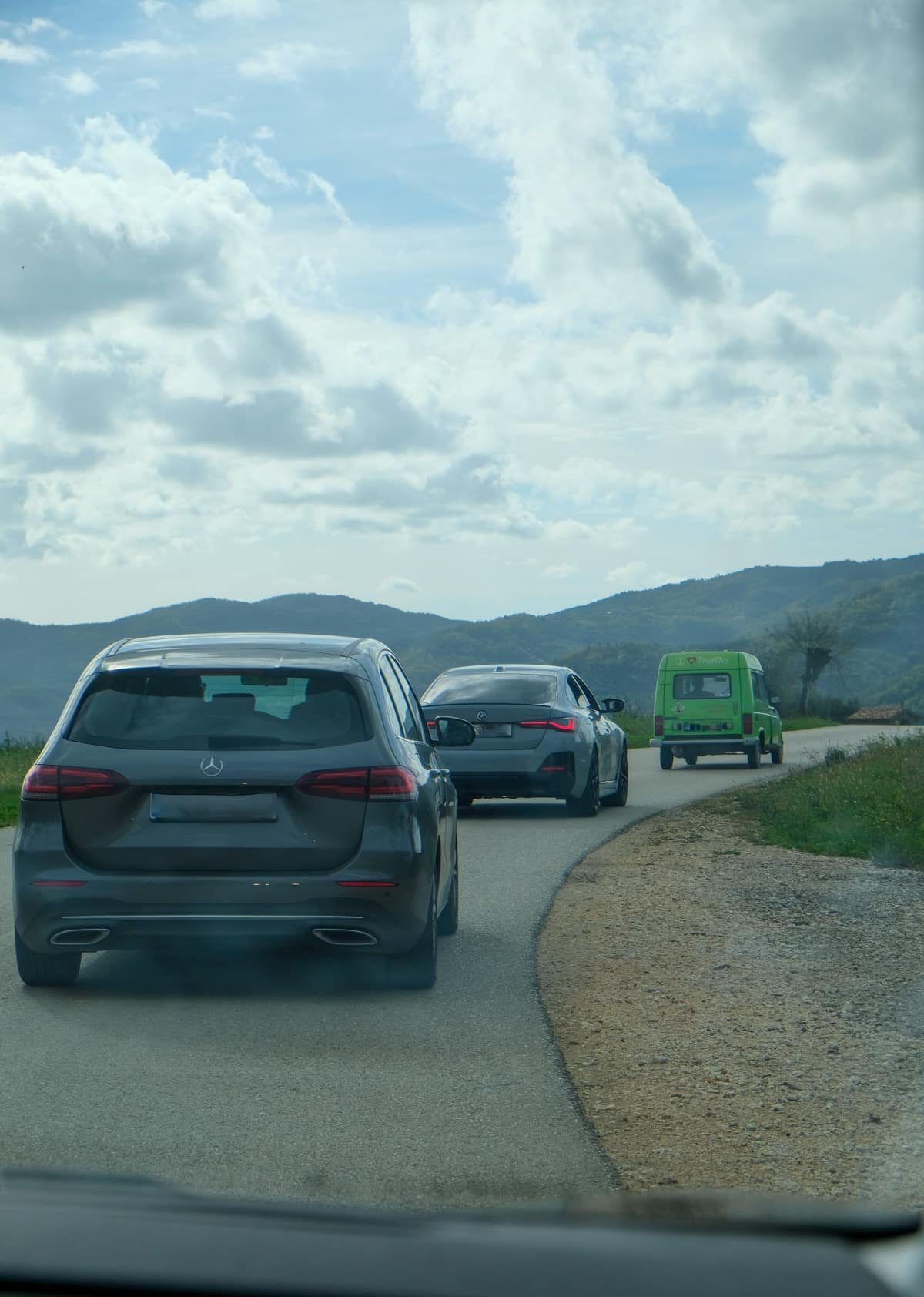
If you want the freedom to explore on your own steam, you could hire a car. However, do be aware that some of Croatia’s roads are very steep and winding. Don’t let that put you off; make sure that you stick to the speed limit and only use the roads you feel comfortable on.
- Car Rental In Croatia
8. Croatia Is Now In The Schengen Zone
As of January 2023, Croatia has officially become a member of the Schengen Zone, marking a significant milestone in its integration with the European Union.
After years of preparation and meeting the necessary criteria, Croatia’s entry into the Schengen Area has streamlined travel for both its citizens and international visitors. This development allows you passport-free movement across borders between Croatia and other Schengen countries, making travel within the region more convenient and efficient.
9. Hop From Island To Island
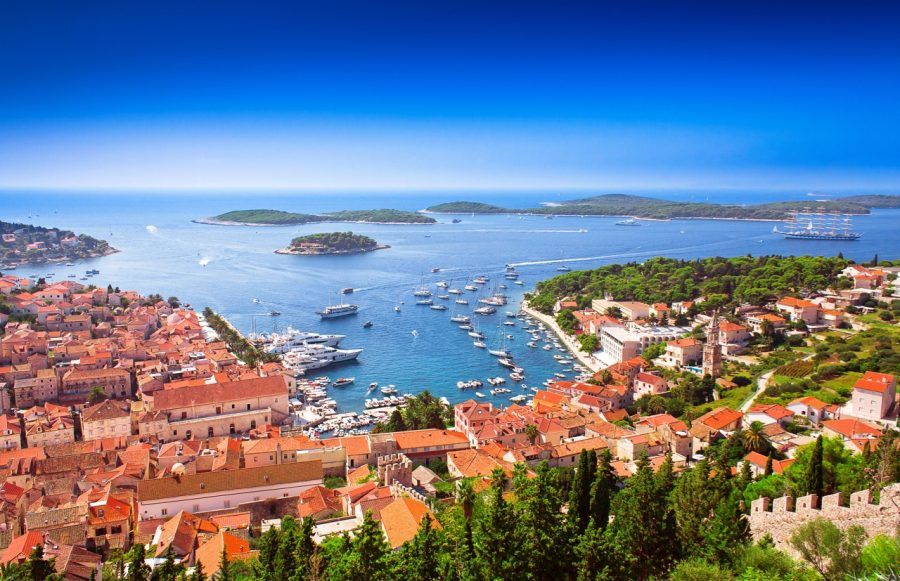
Rather than making day trips from Split or Dubrovnik to the islands of Hvar , Vis, Korcula, etc., plan your itinerary to jump from one island to the next. Each has a distinctly different character, and there are ferries and shared water taxis that will take you from one to the next without having to backtrack to the main port.
A bit of planning will save you time and money and is an excellent way to work your way from Split to Dubrovnik or vice versa.
- Planning Your Croatia Island Hopping Adventure
We visited both Hvar (as a day trip) and Korcula (over several days) and vastly preferred Korcula . While Hvar is beautiful and definitely has its charm, its higher-end type of travel seems to attract more of the “monied” party crowd . Since we left our yacht at home, it wasn’t our scene. It depends on what you’re looking for, but Korcula was our favorite.
In contrast, Korcula is quiet, laid back, beautiful, and relaxing. If you go, rent bicycles to tour the island and explore beautiful beaches and fun beach bars. If you’re into wine, you should also pop into local wineries and try some of their Grk wine, found only in Korcula.
10. Know About Tipping
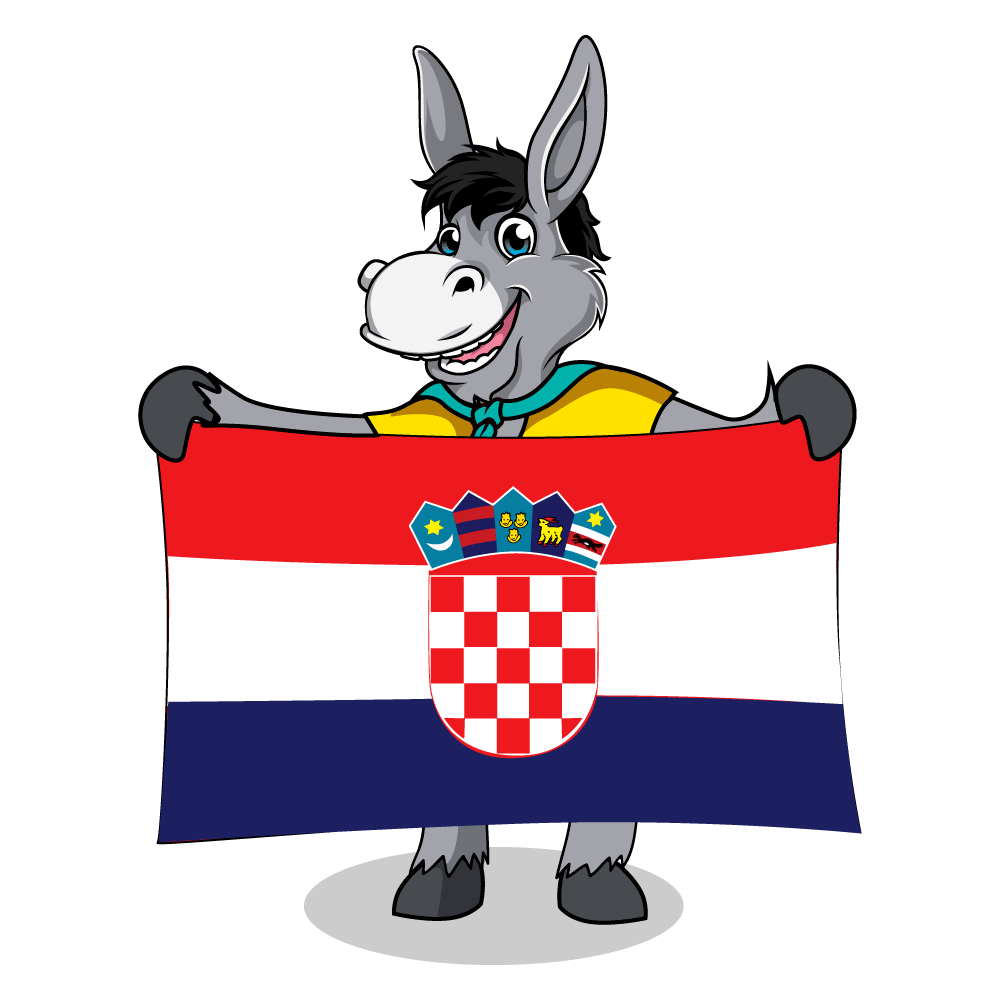
It can be hard to know from location to location about tipping. You’re not expected to tip in Croatia, but it’s always appreciated. If you want to do so, e.g., you enjoyed the service you received, then around 10-15% of the total bill is a good rule of thumb.
- How To Tip In Croatia
11. We Speak English
While many Croatians in tourist areas speak English, it’s always appreciated when travelers make an effort to speak a bit of the Croatian language. Simple phrases like “hello” (bok), “thank you” (hvala), and “please” (molim) can go a long way in enhancing your interactions with us locals.
- Croatian Phrases With Pronunciation
12. Don’t Forget The National Parks

It’s easy to stick to the beaches and cities, but the national parks in Croatia are so blindingly beautiful it would be a crying shame to miss them. Check out Plitvice Lakes (a UNESCO world heritage site, by the way), Krka National Park , and Paklenica to get you started.
- 8 National Parks In Croatia
13. Check The Cruise Ship Schedules
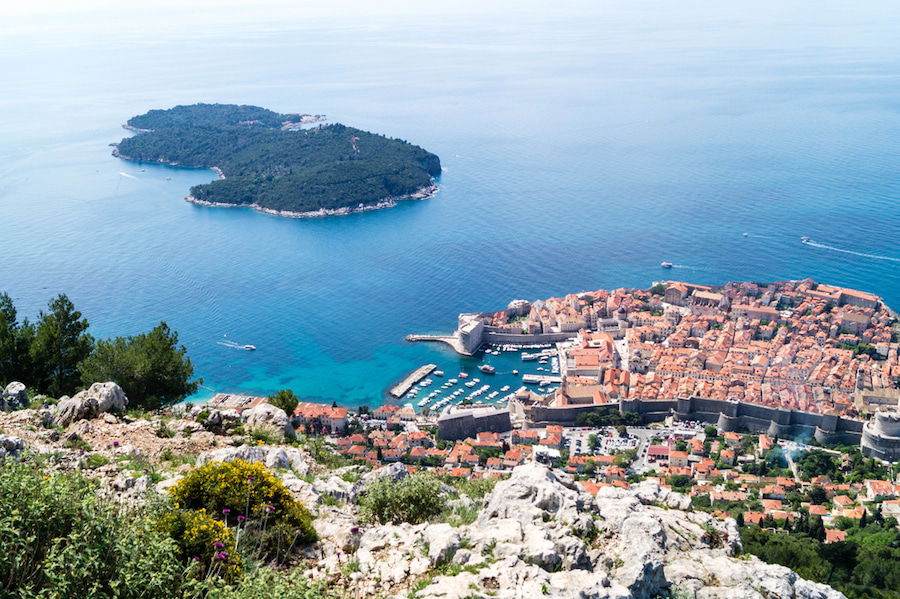
But you’re not going on a cruise, we hear you say! Maybe not, but you will want to be aware of them regardless. Dubrovnik can have 10,000 cruise ship passengers on high-traffic days , resulting in shoulder-to-shoulder congestion in the Old Town combined with all the other coach bus tour groups and independent travelers.
Split and Dubrovnik are popular areas famous for their Old Towns. Medieval towns tend to have narrow streets and cover a finite, typically small, area. Cruise passengers often explore these towns in large tour groups. Do you see what we’re getting at?
If you can visit either of these cities on a day where there are only 1 or 2 cruise ships in port , rather than 7 or 8 (or even when the ports are hosting smaller vessels rather than the behemoths), the Old Town that you want to enjoy will be noticeably less crowded. This worked out well for us in Dubrovnik ! Explore another part of the city on high-traffic cruise ship days or take a day trip to an island or another town.
- How To Avoid The Crowds In Dubrovnik
- Dubrovnik Cruise Port Guide
14. Cash Is King In Some Places
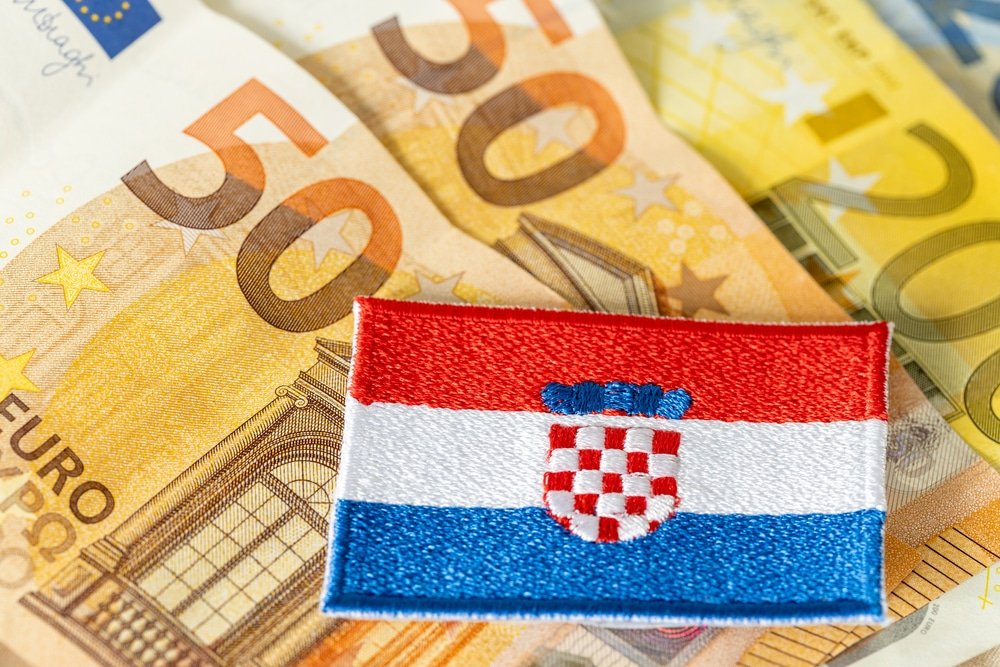
While credit cards are widely accepted in most bars, restaurants, cafes, and attractions, especially in tourist areas, main resorts, towns, and cities, smaller businesses, local markets, and rural areas may prefer cash.
It’s a good idea to have some local currency – remember, we now use the euro – on hand for these situations.
15. Know That The Best Beaches Are Rocky

Before you go to the beach, know that most of Croatia’s beaches are rocky. There are a few sandy beaches, but the majority will have pebbles or rocks. It’s a good idea to take some sea shoes with you, especially if you’re traveling with kids.
- Best Sandy Beaches In Croatia
- 63 Of The Best Beaches In Croatia
16. Don’t Be Afraid To Try New Foods
Croatian cuisine is a delightful blend of Mediterranean, Central European, and Balkan flavors. Don’t miss the chance to savor local dishes like seafood risotto, peka (a delicious meat and vegetable dish), and pasticada (marinated beef). And, of course, indulge in the local desserts.
- Must Try Foods In Croatia
- Delicious Desserts, Cakes & Sweets In Croatia
- Guide To Ordering Food In Croatia
17. Venture Outside Of The Main Cities
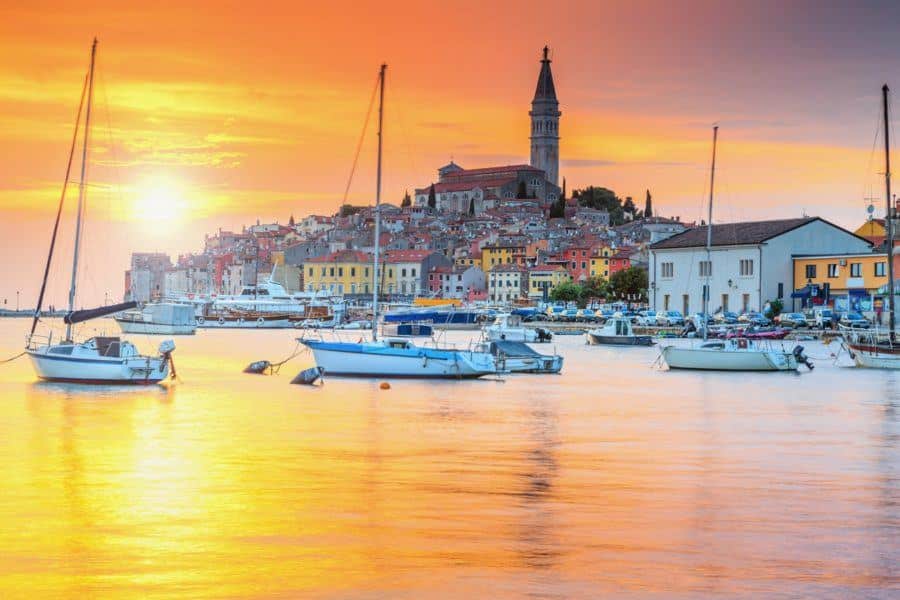
When we toured around southern Croatia , eventually, the crowds got to us. You don’t have to go too far outside the main tourist centers to find peace and still have the beautiful scenery you want.
Less than an hour’s drive from Split, Trogir is a fantastic town right on the water with a small but atmospheric old town and beautiful beaches. Trogir can be visited as a day trip from Split, or better yet, make it your base with Split being the day trip.
Near Dubrovnik, a great day trip option is Cavtat. Reachable by bus, or even better by water taxi, Cavtat is a small town that feels worlds away from busy and crowded Dubrovnik in about an hour. You can do walks around the island and plenty of accommodations and waterside restaurants, so bring your comfy shoes.
There is so much more to Croatia than Dubrovnik , Split, and the islands in between them.
- Weird, Interesting & Unique Things To Do In Croatia
18. Drink Local

Croatia boasts a long tradition of winemaking, and each region has its own distinct grape varieties and winemaking techniques. Whether you find yourself in Istria, the Pelješac Peninsula, or the beautiful vineyards of Slavonia, take the opportunity to go wine tasting. Sample local wines like Plavac Mali, Malvazija, and Graševina while enjoying the picturesque vineyard landscapes.
Croatia’s craft beer scene is flourishing, with microbreweries popping up across the country. Try the local craft beers, which often incorporate unique ingredients and flavors. Seek out a local pub or brewery, and ask for recommendations from the locals. Some popular Croatian craft beers include Velebitsko, San Servolo, and Zmajsko Pivo.
- Top Wine & Wineries In Croatia
- Different Flavors Of Croatian Rakija
- Drinking Age In Croatia & 10 Drinks To Try
19. Tap Water Is Safe
One less thing to worry about while in Croatia is the tap water. It’s perfectly safe and very drinkable. Feel free to fill up your reusable water bottle and stay hydrated as you explore the beautiful landscapes and cities without the need to purchase bottled water.
- Our Favorite Collapsible Water Bottles
20. Don’t Be A Drunk

Croatia is known for its warm hospitality and vibrant nightlife, but it’s important to enjoy it responsibly. After years of dealing with unruly behavior from tourists, some destinations, like Hvar Town, have implemented fines for public drunkenness. It’s not only frowned upon but can also result in a fine of up to €700 .
So, while enjoying the nightlife, keep in mind to drink responsibly and avoid public disturbances to ensure a pleasant experience for yourself and those around you.
- Where To Party In Croatia
21. Use Zadar As A Base
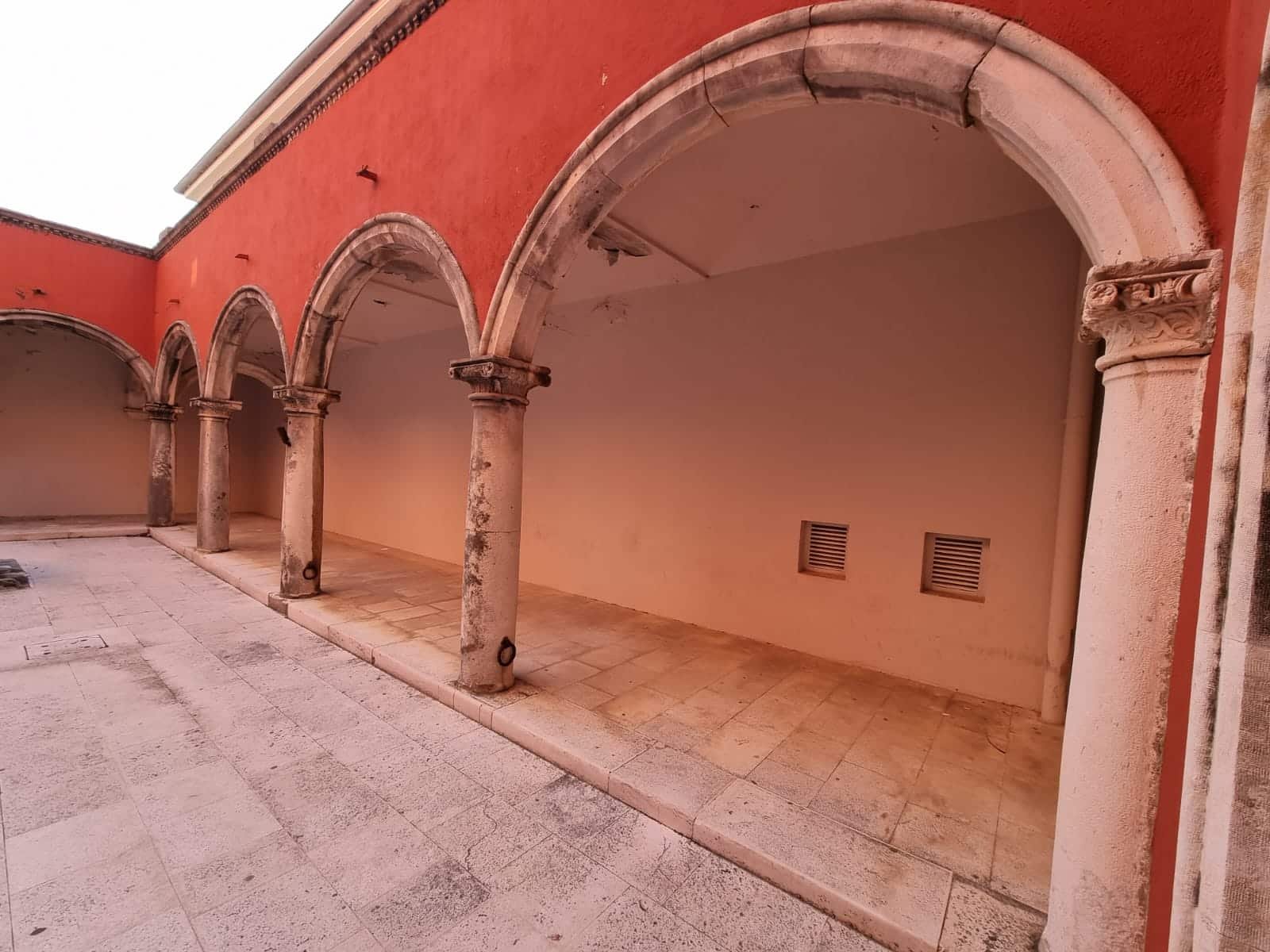
Zadar is a fascinating cit y to explore in its own right, but it can also be used as a base for a couple of days to explore several of Croatia’s incredible national parks . This includes the famous Plitvice and Krka National Parks waterfalls and hiking in the nearby mountains at the less touristy Paklenica National Park.
Rent a car to give yourself the most flexibility if you feel comfortable driving – or get a private transfer for a luxury touch. Our top off-the-beaten-path tip for visiting Zadar is to check out Pag Island.
- Where To Stay In Zadar
- Family Friendly Islands In The Zadar Region
22. Explore The Istrian Peninsula

Istria, the northern part of Croatia bordering Slovenia, was one of our favorite parts of the country. We based ourselves in Rovinj and explored the coast and inland from there.
Istria should be on the itinerary of any foodie out there . The region is home to some of Croatia’s best wines, truffles, and olive oil . Since the Italians once ruled the area, it has a distinctly Italian feel that you don’t experience in the rest of Croatia . Unfortunately, that often manifests itself in low-quality pizza and pasta in tourist restaurants.
Do yourself a favor and stick to ordering dishes with local ingredients. Renting a car to explore the small hilltop town s, such as Groznjan and Motovun, makes for a great road trip!
Rovinj itself is an interesting town to explore on foot. With some great weather, you can work on your farmer’s tan, exploring the shops, restaurants, and churches during the morning.
Then show off that tan on the beaches, walking distance south past the harbor and along the coast . Just be warned – the further you walk, the fewer clothes people wear.
The southern end of the beaches is not for the shy. Let it all hang out, as they say!
- Best Beaches In Istria
- Guide To Central Istria
- Rabac & Labin – Eastern Istria Guide
- Northwest Istria -Umag & Surrounding Areas
23. Spend Some Time On Pag Island
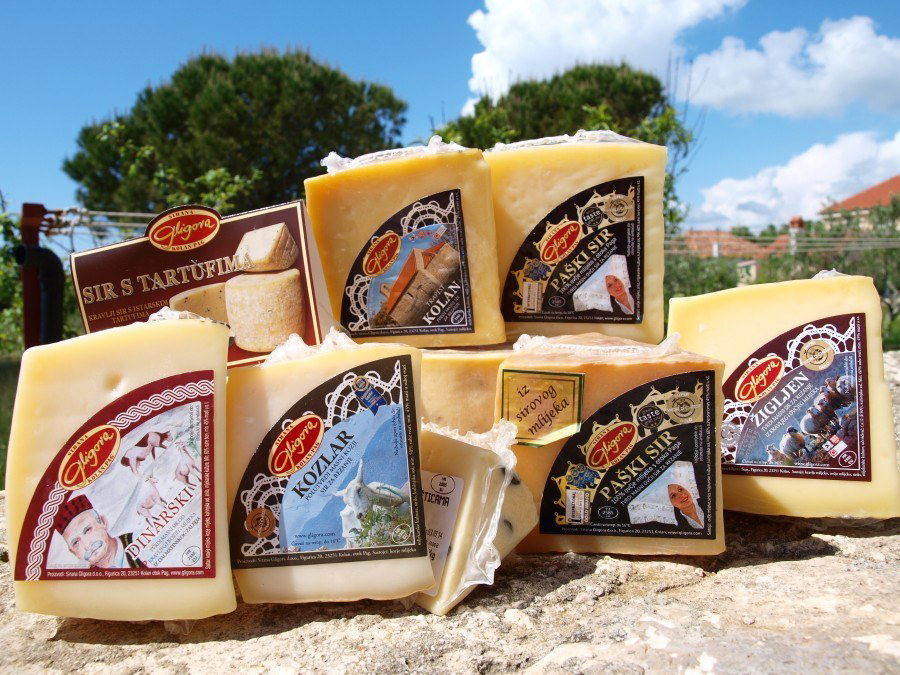
Pag has an entirely different landscape than much of the rest of Croatia; in some parts, it almost seems like you’re driving on the moon. A handy bridge from the mainland to Pag Island makes it an easy one-hour drive from Zadar. The island is probably best known for its cheese.
While they make many different types of cheese, the most famous is made from sheep’s milk. Salt from the surrounding ocean gets deposited on the vegetation of Pag Island, particularly a hardy type of local sage, which the sheep then eat. This provides a distinctive flavor to the Pag cheese.
- Cheese Tasting At Sirana Gligora – A Highlight Of The Island!
Pag Island also has some great beaches . Zrce Beach is the “Ibiza of Croatia during the summer months.” Get your rave on at the Hideout Festival or laze about one of the enormous beach clubs. If dancing with drunk 20-something strangers isn’t your thing, the beach is deserted by September, but the water is still warm and swimmable. We practically had the place to ourselves!
When you’re sitting in your hotel room (or rental apartment) balcony in Rovinj or Zadar, eating some incredible truffle cheese from Pag Island and washing it down with a nice bottle of Istrian wine, you can thank us later. ;) You’re welcome!
24. Check Out A Local Sporting Event

Few things offer a better immersion into the local culture than attending a local sporting event. In most of the world, this means checking out the local club schedule for a nearby football match. In other parts of the world, this could mean anything from cricket to sumo wrestling. This goes for any country, really, but keep it in mind for Croatia, a nation filled with sports enthusiasts.
Some of the major sporting events in Croatia are:
- Davis Cup: Croatia has a successful tennis history, and the Davis Cup matches featuring the Croatian national team are highly anticipated events
- Zagreb Indoors: This ATP Tour tennis tournament attracts top-ranked players and is held annually in Zagreb
- Zagreb Marathon: Held in the capital city, the Zagreb Marathon attracts both local and international runners, offering a scenic route through the city.
- Croatian Basketball League: Basketball is another beloved sport in Croatia, and attending a game featuring top Croatian teams is a thrilling experience
- Croatian Handball League: Handball is highly popular, and the Croatian Handball League features competitive matches that sports enthusiasts can enjoy
- Water Polo Matches: Croatia has a strong water polo tradition, and attending matches featuring top Croatian clubs or the national team is a great way to experience this exciting sport
- Striking Football Pitches In Croatia
25. You Need Comfortable Shoes
Croatia’s cities and towns are often best explored on foot, and a sturdy pair of comfortable walking shoes is an essential part of your travel gear. Many of Croatia’s urban centers boast picturesque cobblestone streets that exude old-world charm but can be less forgiving on your feet if you’re not well-prepared.
These uneven surfaces are not only found in the historic old towns but also many scenic coastal areas.
Whether you’re admiring ancient architecture, enjoying seaside promenades, or wandering through bustling markets, your feet will thank you for the support and comfort of your chosen footwear.
- All Time Best Shoes For Travel
- Comfy Flats For Travel
26. Take A Day Trip (Or More) To Mostar
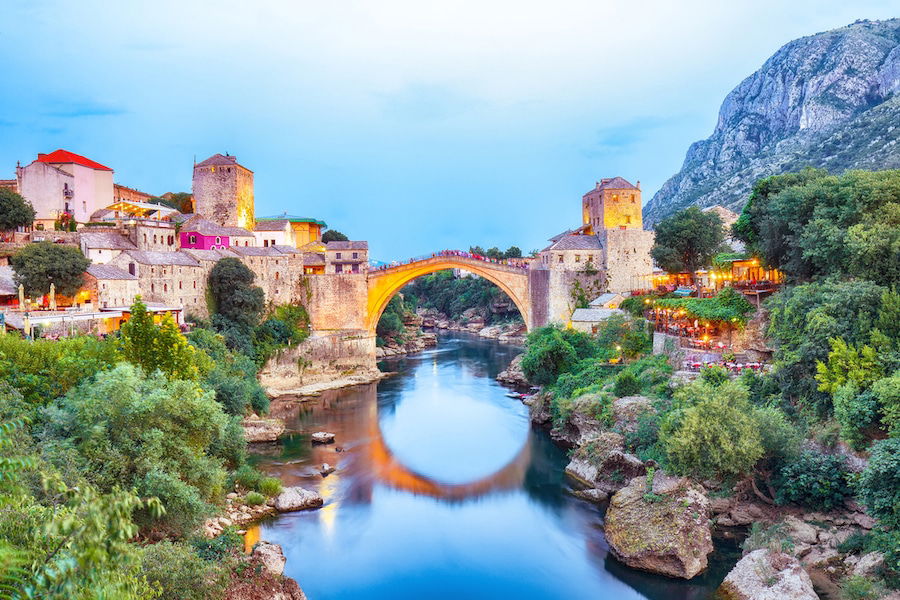
The city of Mostar in Bosnia and Herzegovina is an easy (although somewhat long) day trip from either Split or Dubrovnik. Plenty of travel companies offer tours. Public, long-distance buses are also comfortable and easy to arrange yourself.
- How To Get From Dubrovnik To Mostar
Mostar is one of our favorite places in the Balkans. The culture is vastly different from Croatia because of its history, religious diversity, and fantastic food . If you can spare the time, spend a night here to see the sights and enjoy the food thoroughly.
Thrill-seekers can even sign up for a course to jump off the famous bridge . For wimps like us, keep your eye out for tour groups. There are plenty of “fake” divers on the bridge who can only attract a crowd and then solicit tips. The actual dives seem to happen as soon as the next tour group shows up on the water’s edge.
27. Rental Apartments Can Be A Great Option

When it comes to accommodation in Croatia, don’t overlook the convenience and cost-effectiveness of rental apartments. This lodging option not only offers comfort and privacy but can also save you money, especially if you’re open to staying a bit further from the bustling city centers or old towns.
Many travelers find that renting an apartment allows them to immerse themselves in the local lifestyle and experience the destination from a more authentic perspective. Plus, you can often get valuable insights and recommendations from your hosts, who are usually eager to share their local knowledge.
One significant advantage of choosing an apartment is the ability to cook your meals. Croatia’s fresh produce markets and local grocery stores offer a wide array of ingredients, making it easy to whip up your favorite dishes. This not only saves money on dining out but also gives you the opportunity to savor homemade meals with local flavors.
Whether you’re traveling solo, with a partner, or as a family, rental apartments provide flexibility and the freedom to create your own schedule. So, consider renting an apartment during your Croatian adventure and enjoy the benefits of both cost savings and an enriched travel experience.
- Make Tasty Croatian Recipes From Your Rental
So, there you have it – our insider’s guide to tips for traveling to Croatia. As a local, I’ve shared our best tips to help you make the most of your time in this incredible country. Enjoy your Croatian adventures!
- A Massive List Of Things To Do In Croatia
- Best Things To Do With Kids In Croatia
- Car Rental Tips And Deals
- Best Museums In Croatia
- Tiny Villages And Towns In Croatia You’ve Gotta See
- What Language Is Spoken In Croatia
Comments (6)
What a great post. Like you, I find it impossible to have a ‘favourite’ destination in Croatia. I loved Cavtat (for the reasons you mention!), Rovinj and Pula, Trogir, Zadar, Sibenik (and Krka Park is majestic) and also Korcula. I went to Brac for a day from Split and hired a scooter – an awesome way to explore the gorgeous coastal villages like Postira, etc. Reading your blog has fuelled my flames – I’m desperate to go back there now!!
One word, amazingly beautiful country. If this country had 10 months of tropical weather like Thailand it would get 100 million tourist as the towns, the food, the nature, the watetrfalls and 1200 islands are so unique and just heaven on earth.
Thanks Trish. Will look & dream ????
This is really great…..
A month away…
great ideas here!
Leave a Reply Cancel reply
Your email address will not be published. Required fields are marked *
Save my name, email, and website in this browser for the next time I comment.
This site uses Akismet to reduce spam. Learn how your comment data is processed .
Move This Adventure To Your Inbox & Get An Instant Freebie
Subscribe To Unlock Your FREE Customizable Travel Packing List & All Our Best Tips!
Unlock Your FREE Customizable Travel Packing List!
Subscribe Now For Instant Access To Stress-Free Packing
- Work With Us
- Blogging Bootcamp

- Van Conversion Academy
- Campervan Shop
- Campervan Rentals
- Plan a Trip
- Itineraries
- Destinations
- Responsible Travel
- Family Travel
- Budget Travel
- Scuba Diving
- Travel Credit Cards
- Digital Nomad
- Teach English Abroad
- Blogging Resources
- Income Reports
- Travel Shop
- Meet Katie & Ben
- About Two Wandering Soles
- Personal Stuff
- Portfolio & Press
Croatia: A Completely Honest Travel Guide
Home » Blog » Europe » Croatia » Croatia: A Completely Honest Travel Guide
Whether you are backpacking through or are wanting to splurge on Yacht Week, this Croatia travel guide has everything you need to help you plan your next adventure throughout this beautiful country in the Balkans.
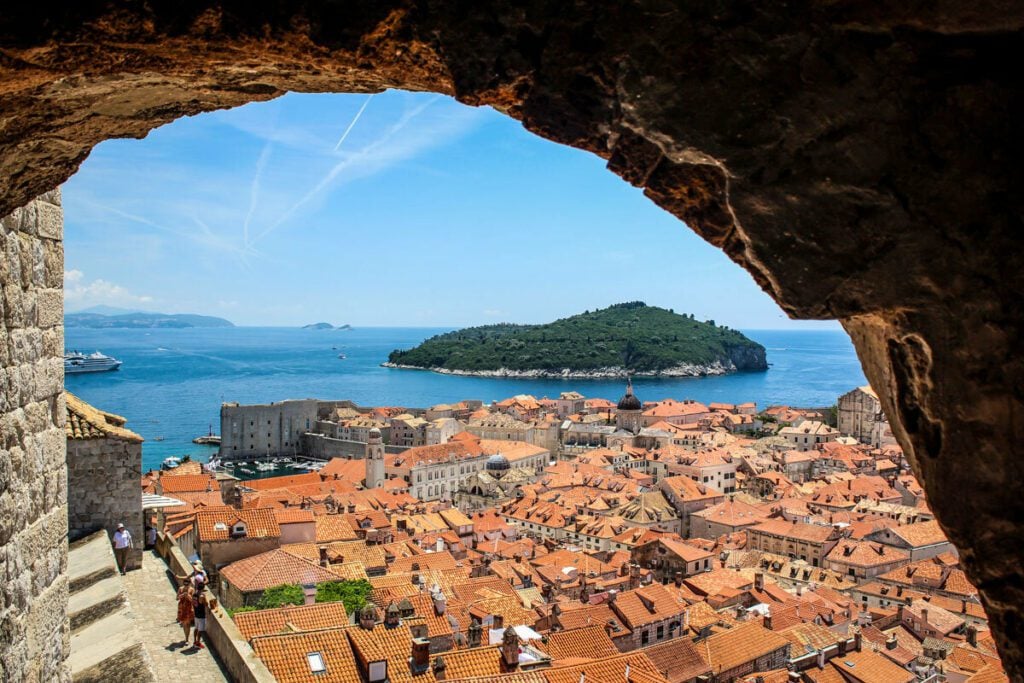
With piercing turquoise seas and fairytale-like architecture, there is no denying Croatia is breathtakingly beautiful.
Spanning most of the Adriatic Sea, you’re never too far away from the coast when traveling in Croatia. And even if it’s not pretty beaches you seek, stone castles and magnificent waterfalls await travelers of all kinds.
Whether you are backpacking through Croatia or are wanting to splurge on Yacht Week, this Croatia travel guide will help you plan your next adventure to the Land of a Thousand Islands .
What we really thought about Croatia
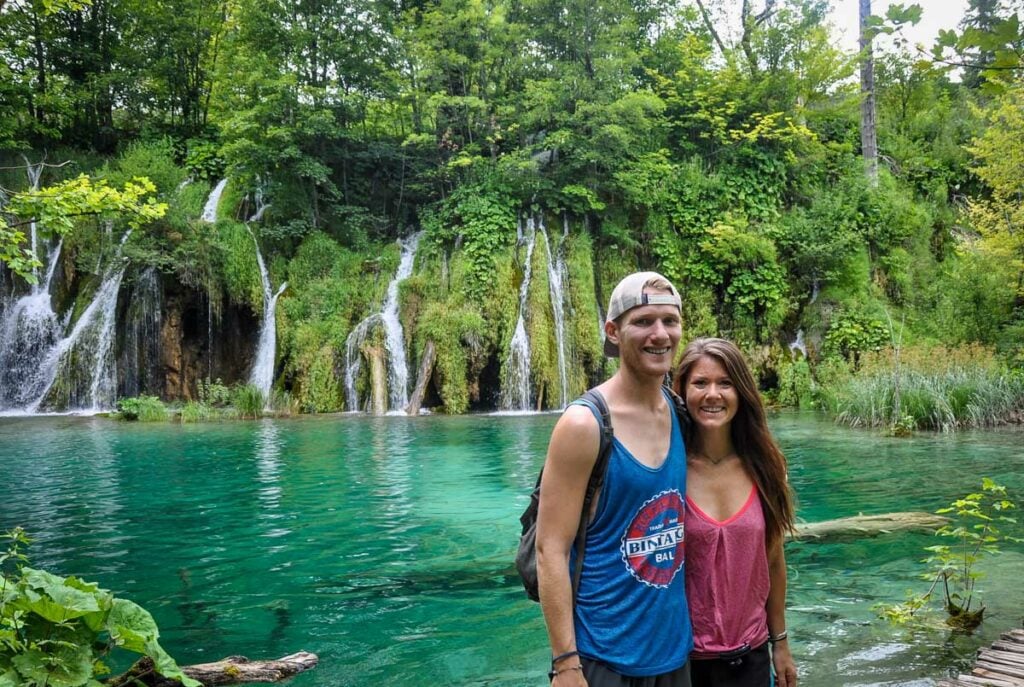
We do our best to give our honest opinions about all the destinations we travel to and the products we recommend through Two Wandering Soles. That is why we are going to be honest about our thoughts on traveling in Croatia.
So brace yourself because ours is an unpopular opinion. What we’re about to say may come as a surprise, but it has to be said: We didn’t love Croatia.
That doesn’t mean we didn’t like Croatia. We just didn’t fall in love like we so often do with places we visit.
There’s no denying Croatia’s beauty. The aquamarine waters and craggy beaches are what dreams are made of. And Plitvice Lakes National Park is out-of-this-world gorgeous!
But frankly, it takes more than beautiful landscapes to make us fall in love. Just like with people: a pretty face is nice, but we crave more.
The thing is, we made some big mistakes when traveling to Croatia. So make sure to read until the end of this article so you don’t make the same mistakes. If you follow our advice we think you will enjoy your time in Croatia much more than we did.
Croatia Travel Guide
- Important info
Best time to visit Croatia
Top places to visit in croatia, top things to do in croatia.
- Typical costs
Transportation in Croatia
- Practical tips for visiting
- Mistakes to avoid in Croatia
- Our advice for visiting Croatia
- How to book your trip
- What to pack
Important info about Croatia
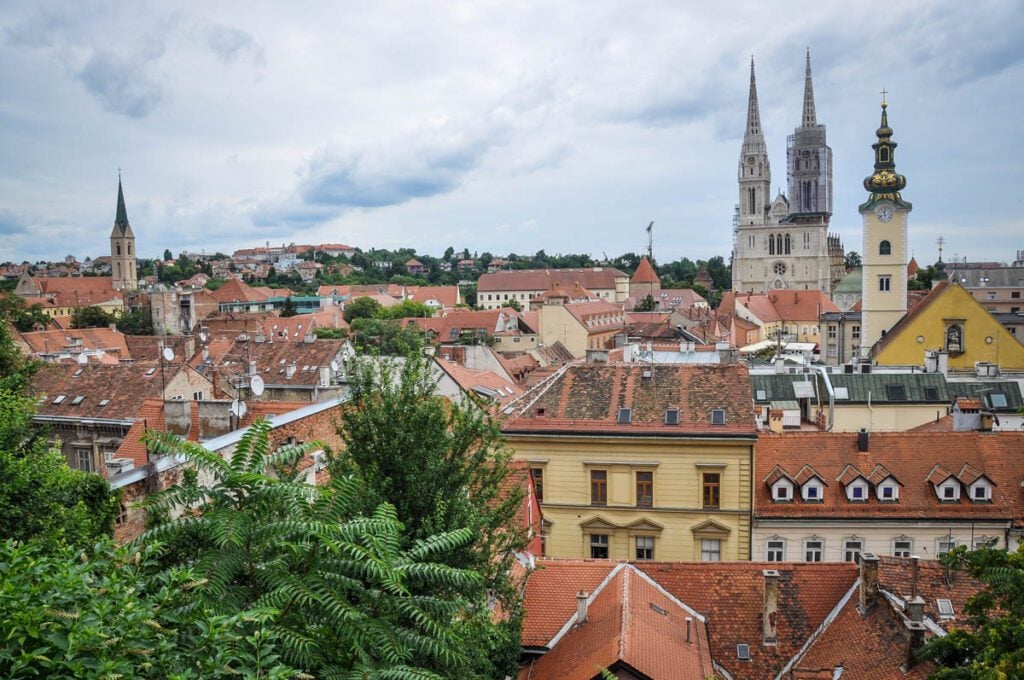
Croatia at a glance: Croatia is a popular travel destination due to its breathtaking beauty, historic seaside villages and stunning national parks.
- Location: The Balkans region of Eastern Europe on the Adriatic Sea ( view on Google Maps )
- Capital city: Zagreb
- Language: Croatian
- Currency: Euro (EUR / €)*
- Plugs/outlet types: Plug types C and F / 230 V and 50Hz
*A note about the currency: As of January 1, 2023, Croatia joined the Eurozone and adopted the Euro as their currency. Kuna (kn or HRK), the former currency of Croatia, will no longer be accepted as a form of payment. However, Kuna banknotes and coins can be exchanged until December 31, 2023.
Visa Requirements
As of January 1, 2023, Croatia joined the Eurozone and officially became part of the Schengen Area for passport control and visa purposes. If you are a citizen of a Schengen Area country, you can enter Croatia easily without the need for a visa.
If you are a U.S. citizen, you can enter the Schengen Area countries with a visa on arrival (just a stamp in your passport) and stay for up to 90 days in a rolling 180 period. (Meaning you cannot exceed 90 days in the previous 180 days.) If you are from a non-Schengen country, and not a U.S. citizen, you may need a visa to enter Croatia. However, this is dependent on your nationality and purpose of visiting. We suggest double-checking with your home state department for updates on visa requirements.
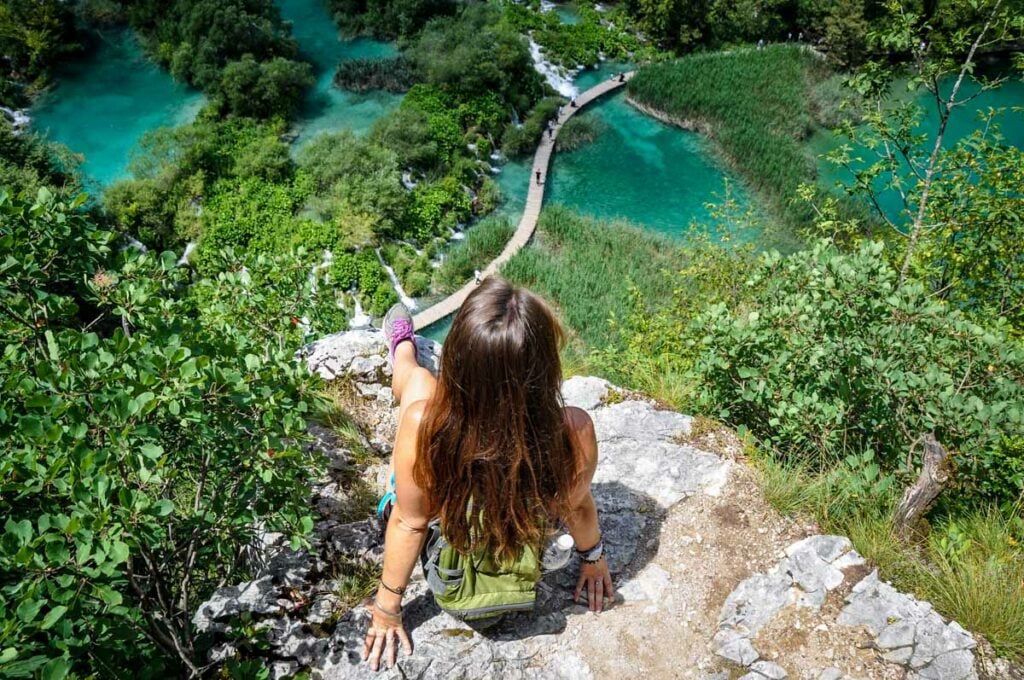
Language and helpful phrases
The official language of Croatia is Croatian (shocking!), but most people in the tourism industry will speak at least a bit of English.
With that being said, it is always nice to learn a few local phrases to show you’ve done your homework and respect the local culture.
- Hello = Bok
- Please = Molim
- Thank you = Hvala
- Beer = Pivo
- Bathroom = Kupaonica
- How much? = Koliko Kosta?
Tipping in Croatia
While it isn’t necessarily expected to tip in Croatia, it is fairly common to round your bill up to the nearest whole number after a meal. You might consider adding a bit extra if you were especially pleased with your service.
For cafes, bars or drivers, you can simply round up your bill.
Since Croatia is a popular tourist destination, you can assume getting tips is becoming more and more common for service-industry workers and tour guides. Offering a few extra Euro is a great way to show someone they did an excellent job.
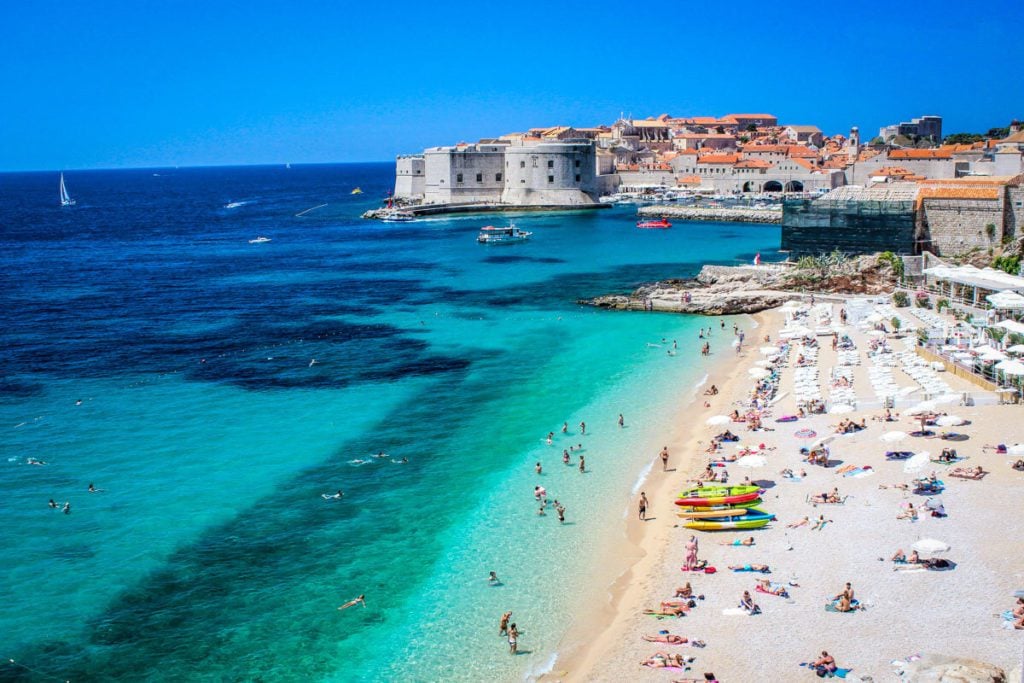
In short, you’ll have the most favorable weather and avoid peak season crowds during the late spring and early fall.
Although Croatia’s busiest season is during the summer, the sheer number of crowds and scorching heat are no joke. So while it is the most popular time to visit, those factors may heed you to reconsider.
However, each season and month has its own draws and drawbacks, so there’s really no correct answer as it depends on what you’re doing and where you’re going.
Psst! You’ll find our guide to the best time to visit Croatia helpful to get the full breakdown on what makes each season distinct and unique to help cater to your trip.
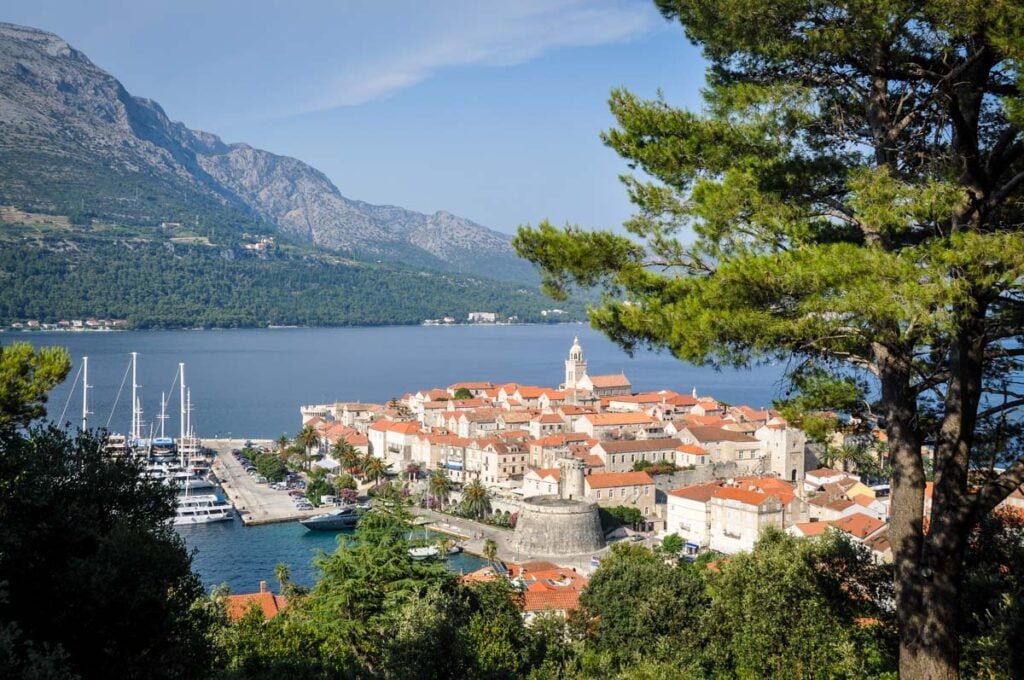
Croatia boasts of beauty and unique places to visit. Choosing where to go is the hardest part!
- Dubrovnik : For those who have a love for history (or happen to be a Game of Thrones super-fan), definitely plan a visit to this Croatian walled city to see its medieval architecture.
- Split : This central coastal city has it all from gorgeous beaches to historic landmarks and a fantastic nightlife scene. Due to its central location, it is a great ‘home-base’ when traveling to many of the islands.
- Plitvice Lakes National Park : Nature enthusiasts flock to the stunning waterfalls, lush forests and array of wildlife in this national park. This is an absolutely perfect place for anyone looking to get swept away in the beauty of nature.
- Zagreb: As the capital of Croatia, you can expect this city to always be bustling with activity. Whether you’re visiting a museum, a cute boutique or trying out a new dish at a local restaurant, you will not run out of things to do.
- Croatian Islands: Home to over 1,000 islands, Croatia is a beach-lovers paradise. Hvar, Brac, Vis and Korcula are some of the most popular island destinations. Connected by a network of ferries, it’s easy to hop around.
- Istria Peninsula: Roman ruins and delicious cuisine make up this part of Croatia that shares a lot of similarities to neighboring Italy.
Want more info? We have an entire article with a round up of the best places to visit in Croatia , including the top things to do and where to stay in each place.
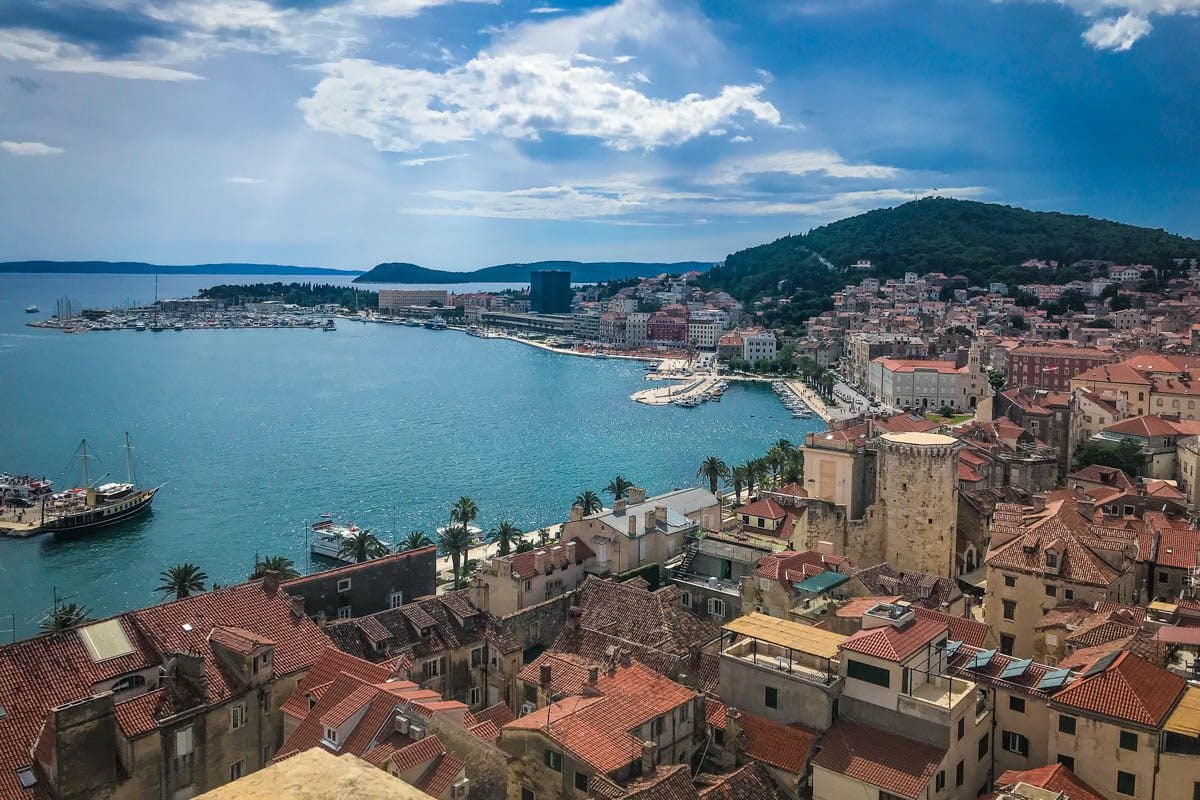
Croatia truly offers a variety of activities for every type of traveler. We’ve pooled together a few of the highlights (though there are many, many more!) in this Croatia travel guide. To find out more, check out our round up of absolute best things to do in Croatia .
- Visit Plitvice Lakes National Park. With its network of waterfalls, stunning canyons and array of wildlife, you’ll adore Plitvice Lakes. This is one of the oldest national parks in the country and part of the World Heritage Foundation.
- Go truffle hunting. Croatia happens to be the best (and one of the only!) place to find truffles in the world. If you are visiting during the months of April – November, Karlic Tartufi , a local family business of 3 generations, offers a truffle hunting experience that we highly recommend.
- Walk Dubrovnik’s Old Town walls. Throw on your walking shoes and weave through these ancient city walls to explore the stunning Medieval architecture.
- Explore Krka National Park . Throughout Krka National Park, there are dozens of waterfalls, picnic spots and numerous winding nature trails waiting to amaze you.
- Discover Diocletian’s Palace. Experience a (mega) slice of ancient history by visiting a real-life palace built for the Roman emperor, Diocletian, over 1,500 years ago. If you’re in Split, you really cannot miss this.
- Go sailing. One of the best ways to explore Croatia’s gorgeous coastline is from the water. As a popular sailing spot, there are numerous companies that offer sailing tours, lessons or charters.
Budgeting for Croatia
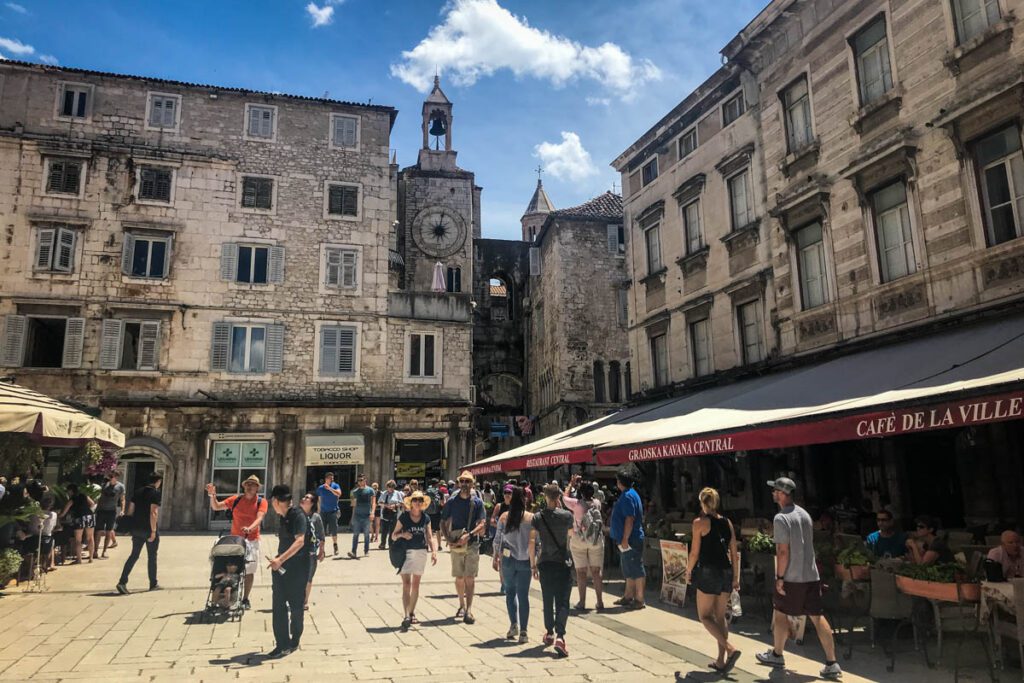
Compared to its neighbors, Croatia is a pretty expensive place to visit. There are areas to cut costs so it doesn’t have to break the bank, but it’s definitely pricier than we expected.
You can expect to see the highest prices in popular places like Dubrovnik and Split. Many prices countrywide may double or even triple during summer.
Typical daily budget for Croatia
- Budget traveler: If you are on a tight budget and watch your spending closely, €45 – €55 could be a sufficient budget.
- Mid-range traveler: If you want to have a few splurges and stay in nicer accommodation, plan to budget €100 – €150 per person, per day in Croatia.
- Luxury traveler: You can easily spend as much as you want traveling around Croatia without any budget concerns. However, if you hope to have a luxury vacation, you should expect a minimum daily budget of €210+.
Typical costs for Croatia
Prices in Croatia fluctuate depending on the area you’re traveling and the season, with summer being the most expensive time to travel.
Accommodation
- Dorm bed: €10 – €20
- Private room: €20 – €30
- Mid-range hotel: €50 – €80
- Luxury hotel: €150+
- Street food: €5 – €10
- Mid-range restaurant meal: €10 – €25
- Local beer: €3 – €5
- Coffee: €2 – €4
- Taxis: €2 – €4
- Local bus: €1 – €3
- Cross-country bus: €13 – €24
- Ferry: €5 – €13 (small ferries) and €30 – €40 (large ferries)
- Plitvice Lakes entrance: €10 – €40 (depending on the season)
- Dubrovnik City Walls: €35
- Truffle hunting tour: €35 – €200
- Krka National Park entrance: €20 – €40
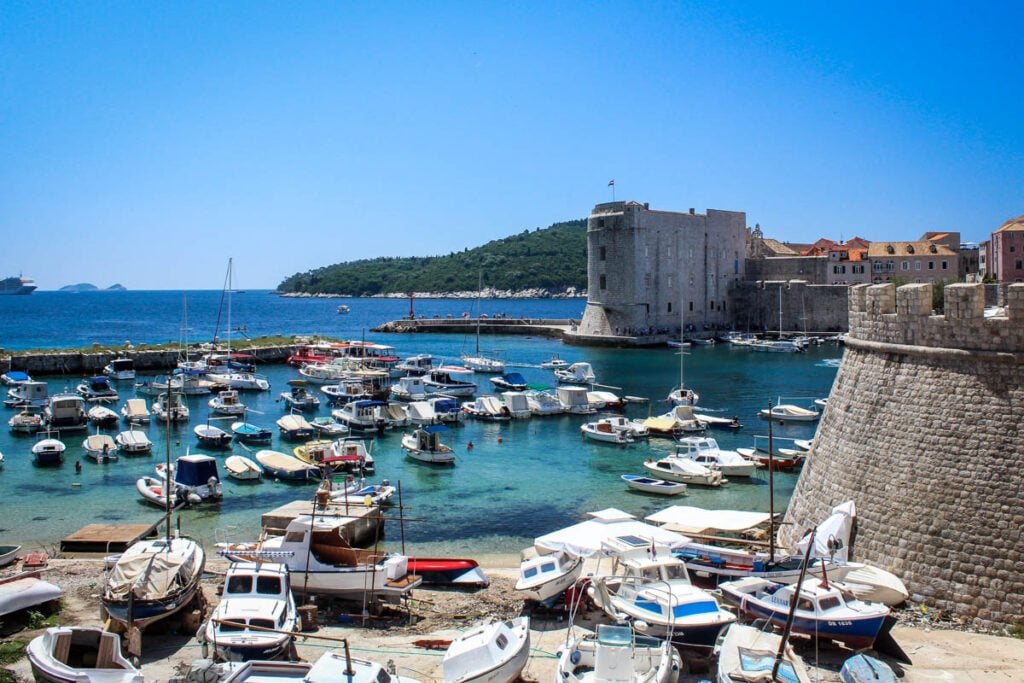
There are a few convenient ways to get around Croatia, but if you stay near the city center, you’ll find that most cities are convenient and walkable.
For longer distances, buses and ferries are quite popular. Or, if you really crave freedom, you may opt to rent your own vehicle.
Renting a car in Croatia is shockingly affordable (around €13 – €26 per day) and allows you the freedom to explore the natural wonders of Croatia without having to adhere to a schedule or timetable.
Overall, the roads in Croatia are safe and easy to navigate making this an ideal spot for a road trip. However, because some of the roads can be twisty and locals tend to drive with a lead foot, be sure you’re a comfortable driver. For the best deals on car rentals and to compare prices, we recommend using Discover Cars .
You’ll easily be able to snag an Uber in popular areas like Zagreb, Dubrovnik and Split which can be a convenient way to get around. Ubers might not be available on the islands, but taxis are around. Whenever traveling with Uber, always be mindful of your journey home. Sometimes Ubers are happy to take you to a remote location, but finding a ride back can be tricky.
Traveling by ferry within Croatia is really convenient, affordable and makes island hopping a dream. There are two major ferry ports in Dubrovnik and Split and it takes about 4.5 hours to travel between the two. This will cost you around €30 – €40. There are also smaller ferries that almost work like a public bus system connecting the smaller islands to the mainland. Prices for these ferries can range from €5 – €13.
In recent years, Croatia has committed to improving their roadways, which has resulted in a fantastic public transport system. Although buses are usually a cheaper option, they aren’t always the quickest option—except in Croatia.
You’ll be pleasantly surprised that the public buses in Croatia are both quick and inexpensive. With AC, WIFI and comfy seats, you’ll be riding in style—er—as stylish as a public bus can get.
There are a few major routes connecting the big cities and smaller ones that run between villages and towns. Therefore, prices can range anywhere from €1 to €25.
Ues Bookaway to search routes and purchase bus tickets in Croatia.
Enjoy the freedom of waking up to some of the most scenic landscapes in Croatia by renting a campervan . This is becoming an increasingly popular way to explore some of the most magical spots in Croatia—ones that might not be accessible by public transport or within the constraints of a tour’s timetable.
We are big fans of campervan travel and highly recommend this mode of transportation if you love adventure and straying from the beaten path a bit.
Practical tips for traveling in Croatia
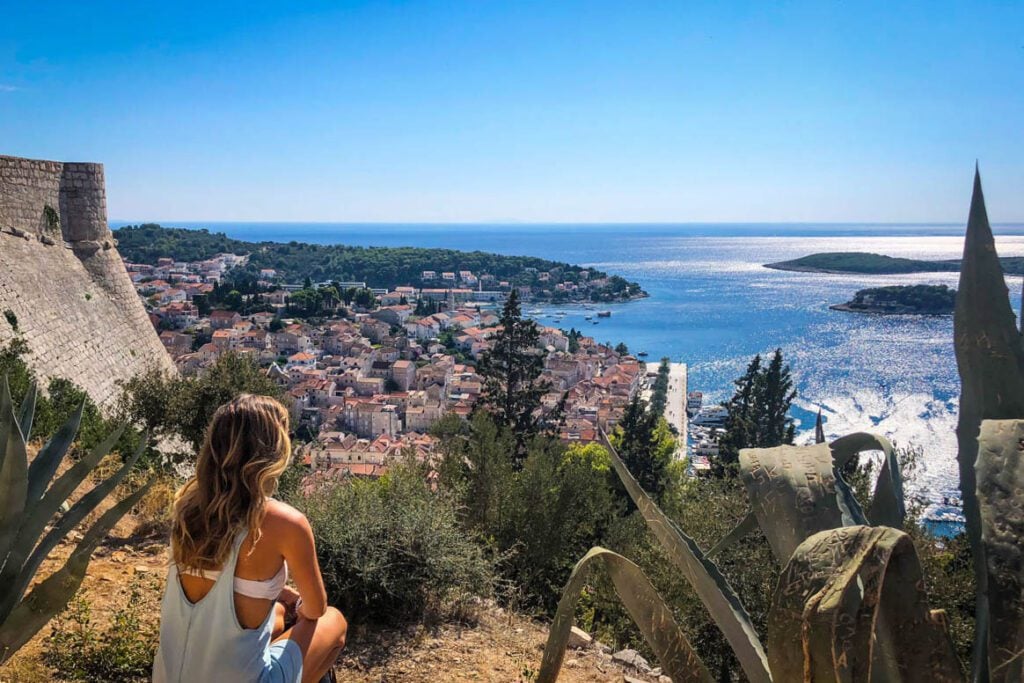
Whether it’s your first time traveling in Croatia or you’re a regular, it’s always helpful to keep in mind some helpful tips that can come in handy when you’re traveling.
- Download a local eSIM. We recommend using Airalo .
- Use public transportation. Not only is it an easy way to reduce your carbon footprint, the public transportation in Croatia (Ubers, buses, ferries) is accessible and cheap.
- Check visa rules. If you’re from a non-Schengen area, you’ll be granted 90 days to visit. However, you must keep in mind this accumulates for time spent in all other countries in the Schengen Area in a rolling 180-day period.
- Book ahead. This is especially important if you’re traveling during peak travel season because things will book out months in advance.
- Drive carefully. If you’re renting a car or a campervan, be sure you’re a comfortable driver and map out your routes ahead of time to avoid any added stress.
Don’t make these mistakes when traveling to Croatia
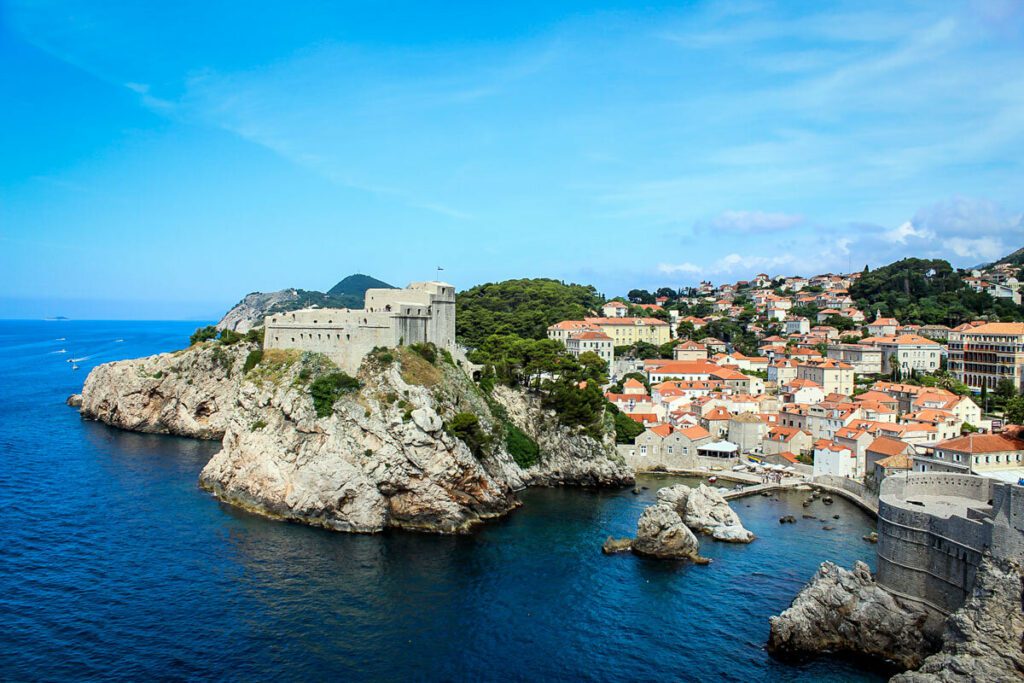
We’re not writing this to discourage anyone from visiting this Mediterranean beauty. We tend to shy away from sharing when we don’t like a place. But I think we’ve pinpointed what it was that turned us off to Croatia at the top.
We hope by sharing our disappointment, it may help others come with more realistic expectations and avoid the mistakes that we made while traveling in Croatia.
There are a few things that affected our feelings about Croatia, and we made some big mistakes when we traveled there. Once you understand the mistakes we made, you will enjoy Croatia so much more!
1. Our expectations were high
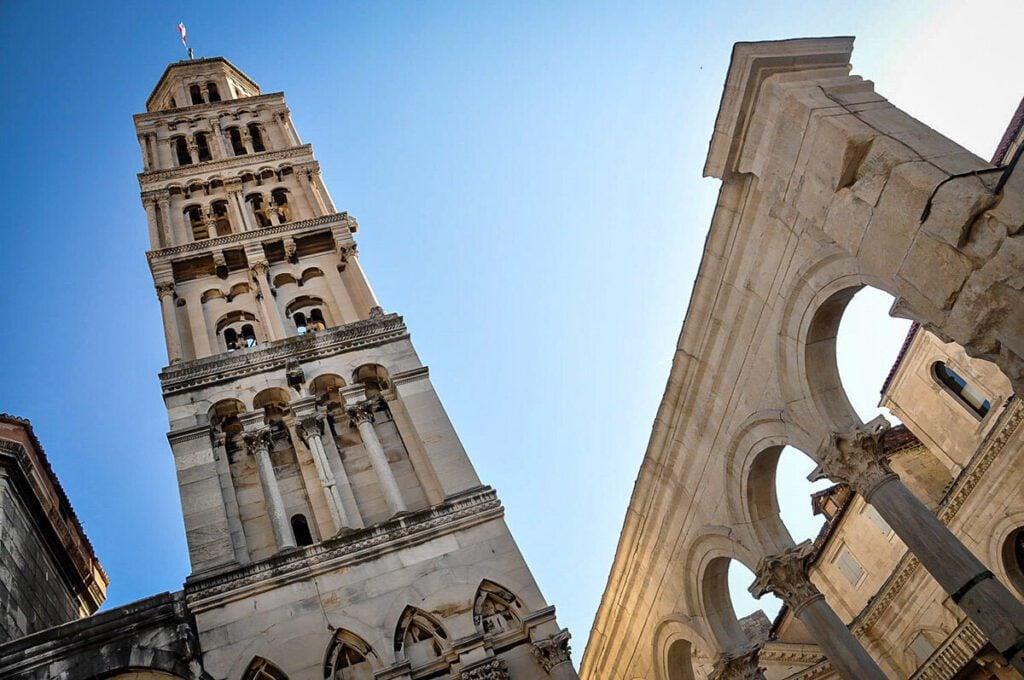
For one thing, we had super high expectations. Back in 2009, Ben and I studied abroad in Italy . That was the first time I remember hearing about Croatia.
A friend of mine went there and raved about the beaches, the lack of other tourists compared to neighboring Italy. She said it was cheap, “off the beaten path”, and beautiful. I’ve been dreaming about visiting Croatia ever since. You can probably guess where I’m going with this…
Have you ever visited a place that was so hyped up that even though you had a good time, you left feeling underwhelmed?
That’s how we felt about Croatia. We had allotted 2 and a half weeks to visit Croatia, but ended up leaving early – something we rarely do when traveling (in fact, it’s almost always the opposite!).
2. It was PEAK tourist season
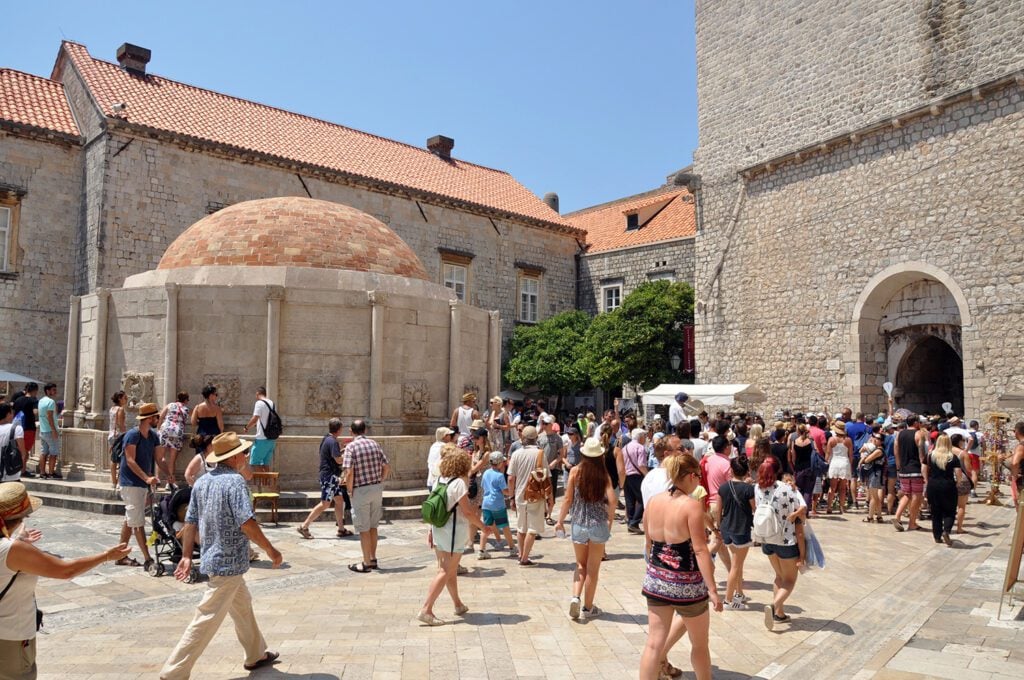
When we visited Croatia in July, it was packed with tourists everywhere you looked. Places that were described online as “hidden gems” had lines around the block.
The famed Plitvice Lakes that grace your Instagram feed are magical, yes, but some of that magic is diminished when you have to walk the wooden boardwalks behind long lines of people carrying selfie sticks.
And in Dubrovnik, you couldn’t walk a few minutes in the Old City without seeing one of the many corny “Game of Thrones” tours (complete with a guide dressed in chainmail and holding an iPad that was playing a scene from the show).
Historic buildings had been turned into overpriced pirate-themed candy shops. It felt a bit like Disney World. And not in a good way.
I think a few years ago, these crowds didn’t exist to the extent that we experienced. But with photos of Croatia being an Instagram staple (I’m guilty of posting these too !) and with the exploding popularity of Croatia as a filming location for Game of Thrones, people are flocking to this Mediterranean country in hordes. Especially during the summer months.
3. We didn’t budget correctly
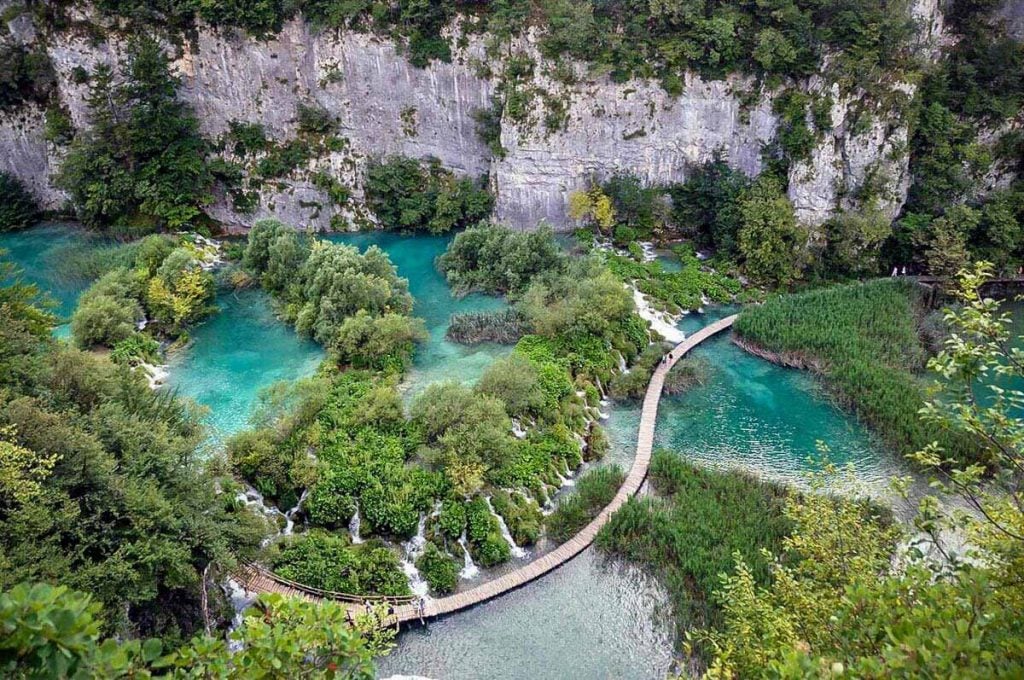
Prices were much higher than any of the neighboring countries we visited (and with all the tourists there, I totally understand why).
This is more on us than anything else, but we just didn’t have the right budget expectations to fully appreciate Croatia. If we raised our budget, we probably would have been able to enjoy ourselves a little more.
4. The people weren’t as friendly as the neighbors
On top of everything else, we’d just come from Bosnia & Herzegovina where the people were incredibly friendly, funny and excited to talk with us. Many of the people we met in Croatia were lacking in this department.
This isn’t to say we didn’t meet friendly Croatians – just the opposite. We had a few lovely guesthouse owners that were very kind, but the overall vibe just wasn’t as friendly as many of the countries we visited during our round-the-world trip – especially the neighboring countries.
5. Our feelings are relative
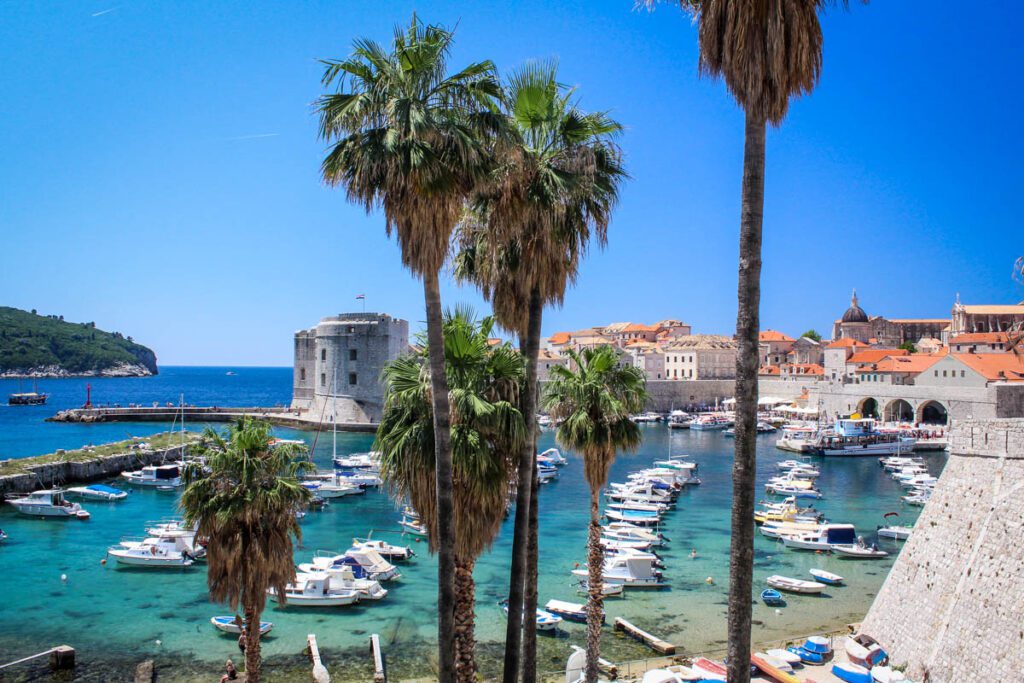
Our travels were bookended with visits in two countries that seriously surprised us: Bosnia and Slovenia . And it just so happened that Croatia fell in between.
Think of it this way: You go to a dinner party and speak with 3 people. The first (Bosnia) and the last (Slovenia) are humble and surprisingly interesting. You laugh, you cry. You listen to their stories and they listen to yours.
That person you speak with in between is perfectly nice. A little cocky, maybe. They are beautiful, but they know they are. Everyone in the party wants to talk to them, so you kind of just feel like you scratch the surface of really getting to know who they are.
And when it comes time to leave the party, you reflect on the two fantastic conversations you just had. The one in the middle kind of fades away. Maybe if you hadn’t spoken with the other two party-goers, you would have really appreciated that middle convo a bit more.
For better or worse, our opinions of people or places are heavily impacted by where we’ve just come from or where we’re going (literally and metaphorically). We just weren’t in a place to fully and wholeheartedly appreciate what Croatia had to offer.
6. We may have gone to the wrong places
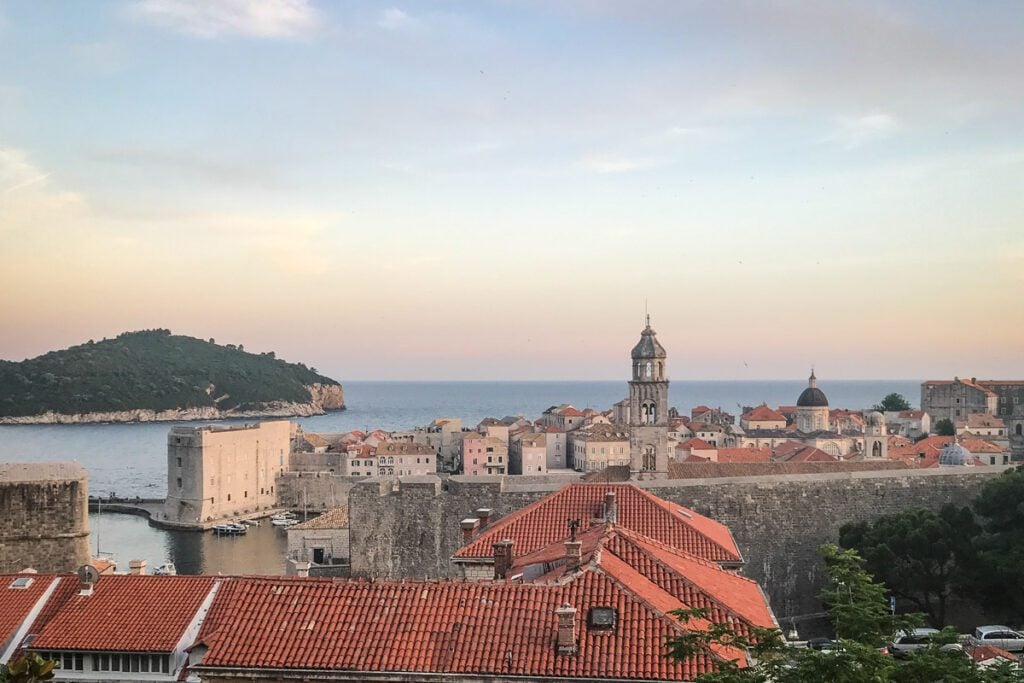
This is a lesson we learn over and over again.
The most popular destinations almost always leave us a bit disappointed. I’m sure anyone who has ever gone to the Leaning Tower of Pisa can relate. Cool tower, but that’s about it for Pisa.
Maybe it was our route: Dubrovnik – Korčula – Split – Plitvice Lakes – Zagreb. We started off with a city that we really didn’t enjoy, and that sour taste lasted in our mouths for the rest of the country.
We probably should have done some more research and found more off-the-beaten-path areas, but we were traveling so fast that we just defaulted to the easiest route.
Would we go back to Croatia?
Yes, without a doubt. We would return in a heartbeat.
There are a few places we already have in mind that we’d like to visit the second time around. These include some that our Director of Content, Amanda, has visited and wrote about in some of our other Croatia guides.
We won’t deny that Croatia is absolutely breathtaking. Dubrovnik is as touristy as it is beautiful and Plitvice Lakes are a natural treasure.
Our advice to others visiting Croatia
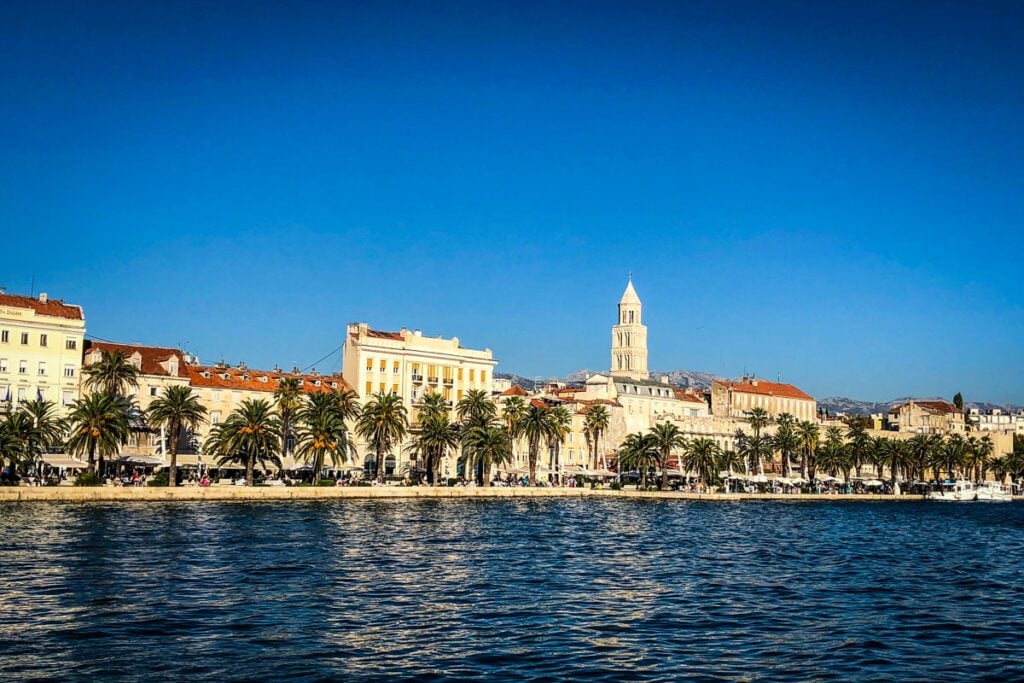
Avoid peak tourist season. Period. Go somewhere else.
Budget quite a bit more money than you would for the rest of Eastern Europe. We knew Croatia would be one of the more expensive countries on our trip. But we didn’t think we would be seeing the same prices as Western Europe.
Don’t make the mistake we did. You’ll enjoy yourself more if your budget has some wiggle room.
Have realistic expectations about crowds. Unless you visit during a totally off-peak time, Plitvice Lakes will be crowded. Dubrovnik may feel a bit like Disney World. If you go in knowing that there will be long lines and selfie sticks, you won’t be as disappointed as we were.
I’m sure there will be a few people who read this and think we’re crazy because they had a fantastic time in Croatia. And I know we rave about places that others may not like. Travel is personal.
We try not to highly publicize when we don’t like a place because we truly believe that there are so many factors that can affect how much you like a particular city or country. But we also believe in honesty, and think that it’s okay not to fall in love with every place we visit.
Our intention is not to discourage anyone from visiting Croatia, but instead to help set expectations and give you advice so you avoid some of our mistakes. We would definitely go back to Croatia; and knowing what we know now, we would most likely enjoy it much more.
How to book your trip to Croatia
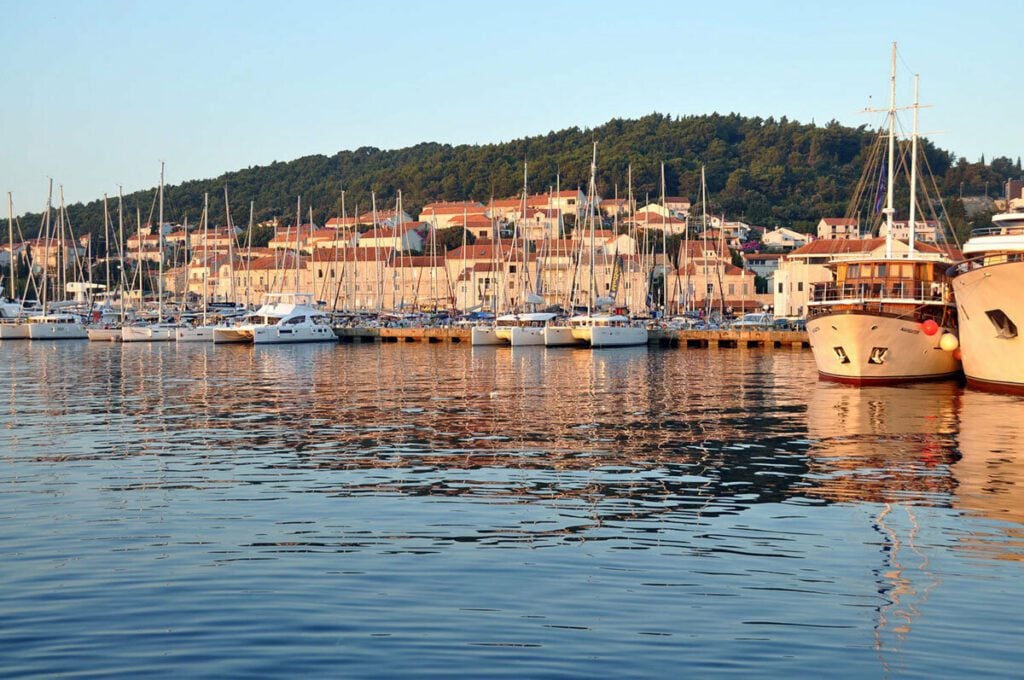
Planning a trip to Croatia, whether long or short, can seem overwhelming. But it doesn’t have to be! Take the stress out of planning by following these simple steps that’ll ensure you don’t forget anything.
1. Decide where you want to go
Okay, this is definitely the hardest part of traveling, right? The looming feeling of trying to pack in every magical hike, every historical site, every restaurant … how!? We feel you, seriously. In our opinion, less is usually more. Choose a few of the best places to visit in Croatia and work backward from there.
Once you’ve narrowed down the places you actually want to go, the rest becomes easy (and fun!). While we know this will differ based on your budget, time and interests, Croatia truly offers something for every type of traveler.
2. Book your flights
As we all know, airfare is one of the priciest parts of traveling, so definitely check out our guide on how to find cheap flights before you book your trip to Croatia. Skyscanner is a great way to gauge prices and easily compare between airlines, days and flight times. We really love the ‘whole month’ feature, too, especially if you can be a little flexible with your dates.
3. Book your accommodation
There are loads of options in terms of accommodation in Croatia suitable for a variety of budgets. Whether you’re looking to stay at a swanky beach-side villa, a quaint home-stay or a hostel, sites like Booking or Airbnb are your best bet in finding exactly what you’re looking for.
4. Get travel insurance
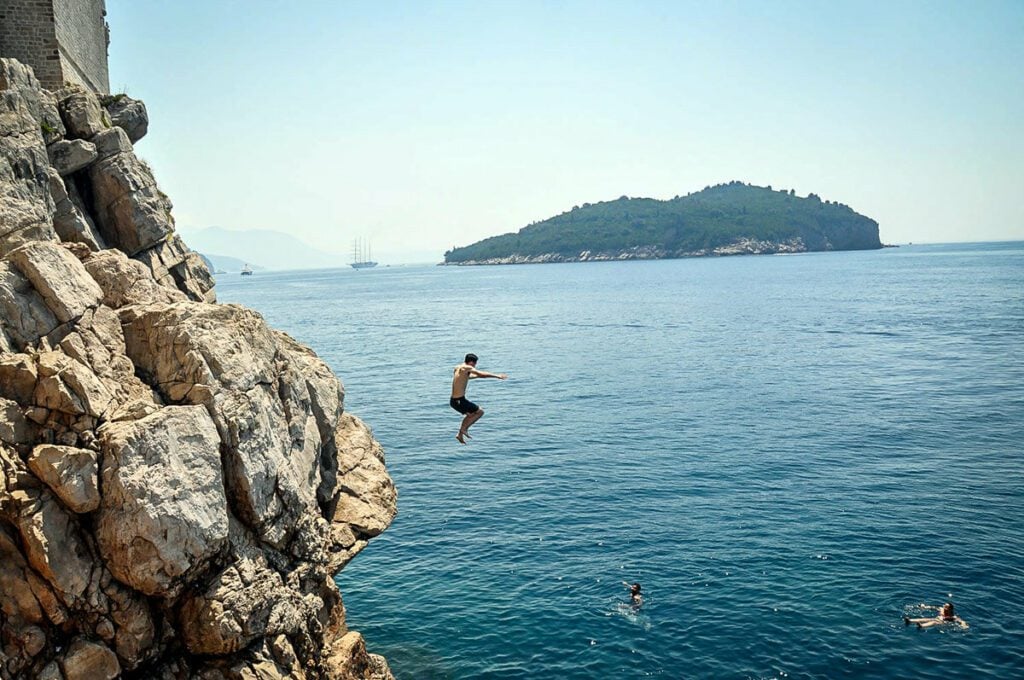
Travel insurance is a key component when planning a trip and we NEVER leave home without travel insurance. Honestly, it’s never a fun thing to pay for, but it is definitely worth it if something goes wrong and can put your mind at ease while you explore a new place.
For a trip like this, we’d recommend Safety Wing insurance .
For more information on how to pick a policy and what we look for in travel insurance, check out our detailed travel insurance comparison article .
5. Start packing!
Now that you’ve got all the boring logistical stuff out of the way … it’s time to get packing for your trip. Whether you’re rolling, folding or using packing cubes, we’ve got a quick guide on what you don’t want to forget on your trip to Croatia.
What to pack for visiting Croatia
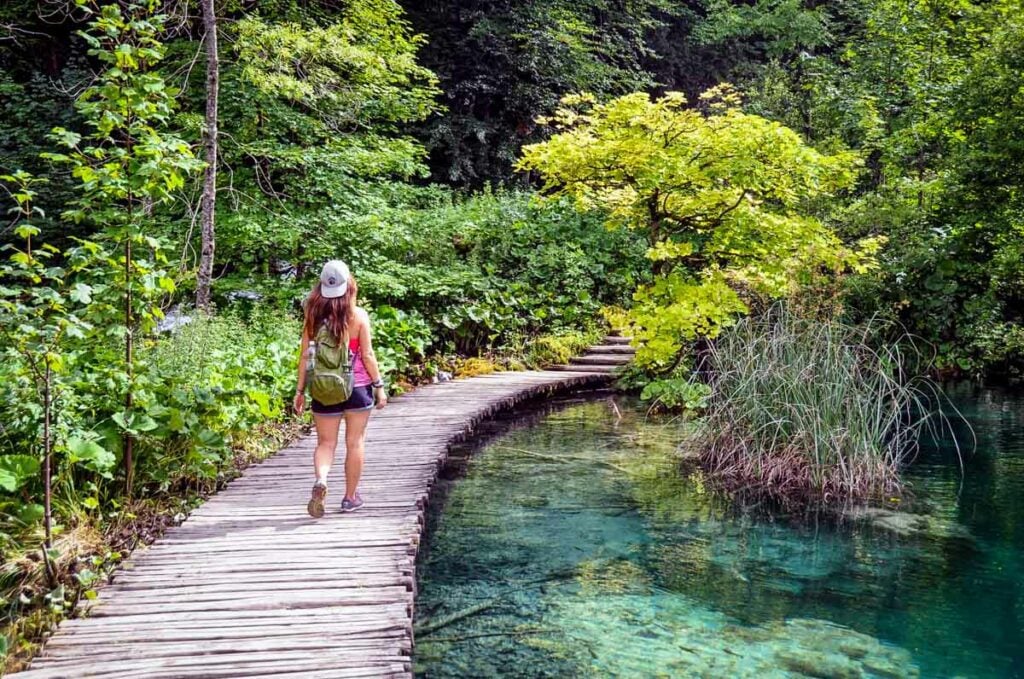
Croatia experiences a wide range of temperatures throughout the year, so be mindful of the time you travel when packing. Aside from clothes, here are some essential things you don’t want to leave at home.
- Outlet adapter
- Back up credit cards
- Comfortable walking shoes (your feet will thank you)
- Reusable straw & reusable bag (always!)
- Reef safe sunscreen
- Swimwear (with over 3,000 miles of coastline, you’ll want to take a dip!)
- Light breathable clothing and plenty of layers
- Camera and tripod ( this one is our favorite for travel)
- Insulated water bottle
- Insect repellent (we prefer the natural stuff )
Are you planning a trip to Croatia?
We have lots of resources on travel in Croatia and destinations throughout the country. Check out our Croatia Travel Homepage for everything you need to know, or start by reading some of our favorite Croatia articles here:
- Fun Things to Do in Dubrovnik + Advice for Traveling
- Plitvice National Park Guide: Ultimate Guide
- Can’t-Miss Things to Do in Split, Croatia + Travel Guide
- Krka National Park Croatia: Ultimate Visitor’s Guide
Save this article on Pinterest for later!
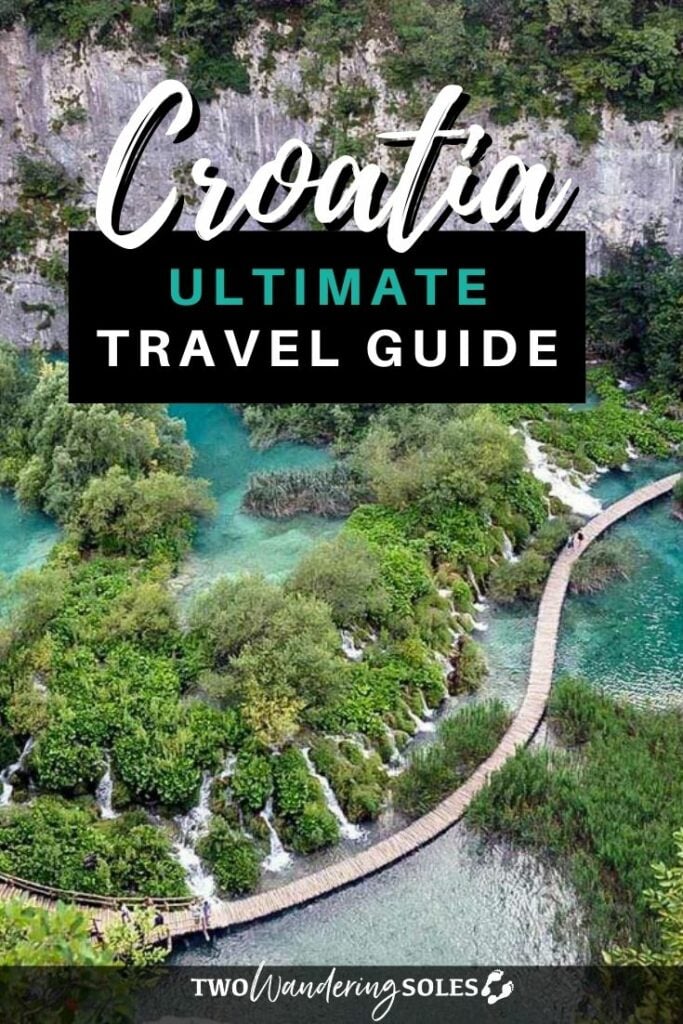
We want to hear from you!
Are you planning a trip to Croatia and still have questions? Let us know if anything in this Croatia travel guide surprised you, or what you’re most excited about in the comments below!
Comments (42) on “ Croatia: A Completely Honest Travel Guide ”
Thanks for your honest review.. Glad that I came across your blog. It must be difficult writing your honest opinion knowing it might face some backlash. (lol) I’m heading to Croatia next month and was thinking if I had planned too short for my trip. But your blog is reassuring.. I will be heading to Bosnia and Slovenia as well like you did.. hopefully I will have a good experience with all 3 at the dinner party 😉
Well why did you come during “peak months” and stayed at the most popular destinations, and also expect there will be no crowd and prices would be lower…??? This makes no sense.
Point of advice from a local Croatian living in Rijeka: stay in not-as-popular places and visit very popular places for a day, then go back to the not-as-popular place. Recommendations: Umag Motovun Labin old town Fuzine lake Ucka nature park Brijuni national park Cres Island (Lubenice beach) Island of Rab, with many beaches Risnjak National park City of Varazdin Last but not least, the City of RIJEKA!
hi and thank you for the great info on the blog. We are fellow Minnesotans traveling with small group next year. Any recommendations on where to fly in and out of in Croatia?
Thank you for all your advice and the honesty you share with us. It’s still a country I want to go to.
I want all the travel guides that you got,because I was thinking about travel throughout the globe sometime this year. So will you send me your travel guides to me,please.
I went in March, and it was sunny, warm enough to swim even, and none of the tourist hoards that swarm there in the high season.
I thought this blog post was hilarious. 20 percent of Croatia’s GDP comes from tourism so yeah there are going to be tourists there in July. Also Dubrovnik will probably be fine without the GoT fans… It’s great with honest reviews but they’re meaningless if the writer hasn’t bothered to find out basic facts about the country beforehand.
I think this article sealed the deal for me to not go. The only time I can go this year is in July and given the pandemic I’m not sure I want to be in crowds. The pandemic could translate into less tourists but I don’t think I want my first big overseas trip in 2 years to be a let down.
I truly hope you didn’t let this article dissuade you from visiting Croatia. I read this article before my trip and I was very disheartened but I found the exact opposite of this article to be true. We loved Croatia and it exceeded every expectation we had for it. We are almost 50 years old and our trip to Croatia was the best in our lives. My husband and I agree and we don’t always agree on everything. Honestly I think the people who wrote this article really just did everything wrong when visiting Croatia.
Hi Katie & Ben,
Thx so much for your comprehensive review! I found your blog while looking around for some ideas on doing a coastal Croatian trip for our 40th anniversary. I especially appreciated your 3 different budget types of lodging…so helpful. We’ve been to Croatia many times before, Dubrovnik, Split, etc. etc. but this time I wanted to do strictly coastal and end up exactly where you went – the northern region almost to Italy – the Istrian Peninsula. I heard it’s less crowded and you did confirm that. Now, about the people lol. My husband was born here so he’s a local, well sort of. I never speak English while we’re there and let him speak his native tongue and we get along just fine. We get that they just don’t have the best attitude in the world, but as some others have said, they probably hate all of the tourism. Thanks again for all the info…you really helped me out a lot!
Croatia is a small country full of negative, arrogant, and lazy people. I know because I lived there. Many people think that Croatians are hospitable and good people but the truth is most of that is fake and you have no idea what they are saying behind your back – if you don’t understand the language. Croates look down upon tourists, they feel that everyone is inferior to them and this stems frim a deep seeded jealousy they have for the rest of the world- especially those countries with normal economies where people travel. So they will have no problem to cheat you. They will smile to you but curse and make fun of you behind your back. I know because I understand the language but often spoke English when there. Yes, the nature is stunning but people are miserable. Keep that in mind.
Hi Alex, thanks for sharing your opinion. However, in our experience, we had lovely interactions with Croatians. As with any society, there will be people who are not as nice, but from our travels, we have nothing but good things to say about the people of Croatia.
I could not agree more with your review of Croatia. As a Croatian, living in Canada over 20 years now, I stopped visiting the country as often as I used to. You summed up pretty much everything I have been thinking for years now and although preparation and expectations go a long way, some destinations need less of those in order for one to enjoy the destination. I will preface my comment by saying that I have been vacationing in Croatia for pretty much every two years and there have been some major changes that will prevent me from going back soon. The main one are the prices. I get expensive, since I live in Toronto, one of the most expensive cities in North America. The problem is the value. For example, we rented a yacht last summer and visited tons of little islands. The prices were exorbitant and before anyone says that is normal for island pricing, I have been to plenty of other places, where this wasn’t the case. In Lisbon or Barcelona, you can get a cup of fresh fruit for 1 or 2 Euros (berries and cherries), while Croatia would sell the same type of fruit cup (cheaper selection like watermelon and honeydew and grapes mix) for 5 or 6 euros. Rudeness was at an all time high in places of official business, the public transit and connection between cities is abysmal and overpriced, plus finding information in places that are frequented by tourists can be a challenge and I do not even want to get into what happens when you travel to smaller places. Most restaurants serve the same fare or a slight variation of it. We ate in some fine dining places and also in some regular joints, and overall the experience has been underwhelming. Way too expensive for what it is and also the quality of food declined drastically over the years. I am assuming lot of places have a high turnover and might not care about the returning customers, and yet lot of dishes were particularly bland and just too expensive. Renting anything, you will pay through an arm and a nose. Bike fees are obscenely expensive, as are cab fares. Due to the high increase in tourist numbers, it seems that every Joe is trying to capitalize on the opportunity and rents rooms and apartments. Again, price – value ratio is disappointing. Some of the accommodation prices we had to laugh at, since they thought they were renting at the Four Seasons, but instead you were getting the most recent Ikea dress-up. Public smoking seems to be ubiquitous, and it is really hard to avoid smoke everywhere you go. On one of the ferries we took, the crew was smoking on the dock, despite prohibition signs and then tossed the cigarette butts into the sea. Pollution and garbage everywhere, including the sea, made me question how clean some of the beaches are. I am comparing it to previous years and some garbage piles have net been cleaned in years.
Having said all of that, I can share few tips from travelling abroad over the years.
- Avoid places like Split or Dubrovnik in high season
- Smaller Dalmatian islands like Vis or Hvar are great, and less crowded. Stay away from the main ports and pick other parts of the island for a more relaxing stay
- Rent a car if you can
- Rely on several sources for official information. It is very common to give incorrect info and this can vary from one representative to another.
- Eat where locals eat. This usually means moderately priced places and places that are rarely located by the marina
- Bring reusable water bottle. The amount of plastic wasted is sad, and never buy bottled water in Croatia. Croatia ranks as one of the highest countries when it comes to water drinking quality.
- Money exchange rates are similar in the tourist spots and post offices have one of the best exchange rates, even better than banks.
- Lot of bus stations don’t have anyone announcing anything, so it is very common to ask the driver if the bus is the right bus, since sometimes the labels on the buses can be incorrect.
- Bakeries are very often the best option for a fast and cheap meal on the go.
- Lot of places don’t accept debit or credit cards, so always have cash on you.
This turned out to be a longer post than I originally anticipated. In conclusion, Croatia is an amazing place to visit, the nature is truly breathtakingly beautiful, but please be wary that it is not cheap or undiscovered. This was maybe true 20 years ago, but not anymore.
Croatian expat here. I have to go every summer for holidays in Croatia to spend some time with the family and I’m even more annoyed about the prices, the crowds and rude locals. But I also know where to go and how to avoid it. The biggest mistake travellers like you make is thinking Croatia is eastern Europe or "balkans". It’s not. It’s always been (well besides the dark era or communist occupation) a Central European and Mediterranean society. So you should compare it as such. Rapid increase of tourists drives certain behaviours everywhere. But then again towns like Dubrovnik, Hvar and others are unique. their historical, cultural value plus the beauty justifies the price you need to pay to see them. Tourists shouldn’t expect some 3rd world shithole where their 100 bucks or euros will make them Kings. I don’t want our country to be overrun by cheap backpackers and cruisers . It spoils it for everyone.
Croatia is not the Balkans?? That’s a story Croates maybe tell themselves because they hate the fact, but Croatia is as Balkan as it gets.
The reason why people in Croatia, or more specifically Split and Dubrovnik, are not as friendly as the "neighbours" lies in the fact that locals are just absolutely inundated and fed up with mass tourism and the type of tourists their cities get. The old town of Split has in the past years lost hundreds of its inhabitants cos people have lost access to basic necessities in the centre and are abused night and day by groups of drunken tourists pissing at their doorsteps, vomiting under their windows, screaming and in general, acting like complete morons. Every shack downtown has turned into a shitty and overpriced pizza and burger place or an almost Michelin-star restaurant, neither of which the locals can afford. If that wasn’t enough, from April until October there’s at least 2 cruise ships daily docked in the harbour, each with thousands of passengers that just clog the already overwhelmed city, and who bring absolutely no value to the economy. People are bursting at the seams, they can’t function normally in their daily life and they are also being priced out of their homes, as everybody decided to squeeze whatever little buck out of tourism they can. And so on, and so on.
Well said, my friend. I can’t even imagine what the streets look like when passengers from the ships go on land. And that’s in addition to other tourists. And yes, I like it what you said about people wanna be kings for $100. That kind of money won’t buy you much anywhere else, why would anyone expect a lot in such touristy country. And people complaining about Dubrovnik and GoT. Lol. Go anywhere else and every town in the world promotes best what they can. I can’t even imagine what it is like for locals to be overrun by tourists who pee everywhere and vomit yet don’t leave a dime. A little respect goes long way, in my humble opinion. You get what you give. On the other side, just fir fun I Google Croatia sometimes and I always get the same towns in search engines. It’s like Croatia is nothing more but Dubrovnik and Split, how annoying. There’s so much more to see if you know where to go, and probably fir a lot less money.
Hi! Thanks so much for all the information. We’re planning a small wedding in Split and are debating restaurants for our reception (small is very small, ie 6 people including us). Our planner recommended Bokeria which looks like it has great food but seating looks a little communal and not private. Were there any more private seating options there or would you recommend we look elsewhere. Sorry for the random message but appreciate your input!!
Thanks for sharing all your information! I’m sorry the people aren’t friendly in Croatia. I have a friend that’s from there and she’s darling! She says it deoends where you go and what you do ..I don’t know never been.bit it looks beautiful! Great pictures as well ! Happy travels to you! Oh didn’t you get any massages while travelling? I always do so I can stay relaxed and enjoy my trip ! ?
Thanks for the tips – they are great! Can I ask how many days you spent in Croatia with this itinerary?
I would like to say that Croatia is cheaper than Slovenia!
An interesting article and sensible tips. I am going to visit Croatia in the near future, and your article helped me figure out some points. Great photos. Thank. Good luck.
I totally agree with you guys, having just coming back from Croatia. I didn’t have that high of an expectation but I didn’t really think it was that amazing either (also wanted to starting heading back). It was the same price as many other western european cities but without the infrastructure.. I loved the island (Hvar) but that was about it. It’s definitely not one of my favorite countries in Europe.
What a guide, being a best tours providers in Croatia we completely agreed what you are trying to state here…
Appreciate the review. I am hoping to go in September a little off the busy season, I was wondering if you think one day is enough for Plitvice Lakes?
Honest review is much appreciated. I must say, as a local, I agree with most of your thoughts.
Thank you so much for your comment. It’s always good to get a local’s opinion!
I have travelled to Croatia many times over the last ten years from Australia as it became one of my favourite places in the world after my first visit. The towns of Split and Dubrovnik are busy in July and August however in my opinion people overstate this as all the beautiful places in the world are busy, ie French Riviera, Amalfi Coast, Dalmatian Coast and places like Mykonos and Santorini. I for one don’t mind the Crowds other than when Cruise ships are around which you may have encountered in Dubrovnik. They are normally gone by 6pm. There are places that are off the beaten track in Croatia that are stunning and if you want smaller crowds go in June or September. But places like Vis island and Island of Murter are beautiful and not overcrowded during peak season. There is still a good vibe and not too sleepy. Also small cities of Sibenik and Zadar are stunning as is Rovinj and places like Opatilja. Croatia is also a lot cheaper in shoulder season. I’m an avid traveller and blog reader and surprisingly the only time I’ve read a blogger write a negative review is when they are a budget traveller, backpacker or nomadic traveller and the first place they visit in Croatia is Dubrovnik. It’s as if they expect these cheap third world prices not realising they are coming to some of the most stunning and classy old towns in the entire world.
Hey Dan, thanks for your detailed comment. Love hearing about more cities to explore in Croatia, especially ones that are not as crowded. During our trip to Croatia, we were on a year-long trip so we were traveling on a budget, and were slightly surprised but the prices in Croatia compared to neighboring countries. Just want to set expectations straight for other travelers and share our experience so they are prepared.
Hi! I stumbled upon your site while researching for our 2019 trip to Croatia and Slovenia. I appreciate the candid feedback and helps solidify my decision to skip a few of the "must see" towns. It’s hard to skip when you don’t know when/if you’ll make it back, but I know it’s not what we like to do when we travel. It will give us more time to explore wine country.
Glad we could help, Mandy. It is tricky choosing cities sometimes, but you have travel according to your travel style and not just because places are marked as “must see” spots. Have a great trip!
Katie and Ben, Just finished reading about your Croatia trip. First time to see your site. Feedback: You did a good job! Don’t be overly concerned about offering candid opinions based upon your experiences. Even when they may be negative. Travel is like beauty – "In the eyes of the beholder". It is refreshing to read a site that avoid hype and focuses on being honest, even if you sounded somewhat apologetic for not loving Croatia. What is most important is truth in travel. Keep at it.- Costas Christ, Editor at Large, National Geographic Traveler
Wow, we are honored at such a compliment from you, Costas. We always aim to be honest, even if it’s not the easiest way to write. We appreciate honesty when we read other blogs, and we hope others feel the same when they read our writing. Thank you for taking the time to comment.
Thank you for your advice! We are planning a trip to Croatia and plan to use a few tidbits learned from what you’ve mentioned here.
You are very welcome Emily! Let us know if you have any more questions about traveling to Croatia.
I definitely appreciate your honesty! Great tips and advice and words of caution. 😉
Great article, thanks for the tips!
Indeed, Croatia is indeed home to many amazing sights and sounds, but in this beautiful land also lie some tourist-targeting scammers. Do be wary of the hostess bar scam, beach thieves, overcharging restaurants, pickpocketing, flat tire scam, overcharging taxi drivers, holiday apartment scam, car rental scam, border scam and many more!
It’s always good to travel with common sense, David, so thanks for that reminder. We didn’t experience any of these scams while in Croatia (even during busy season). It’s good to be aware, but not to worry about traveling in Croatia.
You’ve numbered the main problems regarding your trip to Croatia: thinking it is still an "undiscovered gem", that you’ve mostly stayed within the most touristy locations and that you had way too high expectations. Croatia is having a huge influx of tourists for the last several years and many people think that it’s still not that discovered, which isn’t true. This year it will be visited by around if not more than 20 million people. Have in mind that the country itself has only a bit over 4 million inhabitants. Also, people read blogs like this that rave about the country and have unrealistic expectations that sometimes can be hard to meet. Especially when you travel in the middle of the summer when the number of visitors can be off-putting. That being said, one needs to do some homework before the trip to know what more or less to expect and not to get unpleasantly surprised and enjoy their visit to Croatia.
Thank you Mario for basically summarizing what we stated in the article. We acknowledged that our expectations were off and wrote this article to inform others so they don’t have the same experience as us. We really liked traveling in Croatia and encourage others to go there as well. We would love to go back during an shoulder or off season.
Hello Ben and Katie,
fantastic and honest article. I agree with everything you write about Croatia. I had to smile about your "high expectations". 😉
My family and I used to travel to Istria in Croatia every summer for, well, at least 5 years? I think the last time we spent our holiday there was maybe in 2011? I remember it to be always crowded, even though we stayed in a small fishermen’s village, not really a big player in the touristic landscape of Croatia. Still, the beach was packed with tourists, families,… but beautiful though. The reason could be, that many Germans and Austrians go there in summer, because it’s nearby, easy to reach and (still) cheaper than Spain or Italy. Sooo july & august, or summer in general isn’t really a great time to explore Croatia.
Though, I have beautiful memories of that country as well. We used to drive around the countryside – and one time, by chance, we came by an old, very small village. It was in the middle of nowhere. Located on a hill and surrounded by the remains of a medieval fortress. The houses and streets were made of stone – and there was absolutely nobody far and wide. So calm. By the time the landscape darkened, it was a cloudy day, and this gave the whole scenery the final touch 😉 I don’t remember the name of that place, but it was somewhere in the middle of Istria.
Hope you’ll go back someday (not in summer!) and have a great time, maybe you can still find some hidden treasures. <3
all the best for your future-journeys,
Kathi from nomadenleben.tumblr.com
Hi Kathi, that sounds like a lovely memory of Croatia, so peaceful and charming. And don’t get us wrong, we would love to travel back to Croatia, but you’re right, we probably won’t go in the summer again. Thanks for your comment.
Leave a Reply Cancel reply
Your email address will not be published. Required fields are marked *
Save my name, email, and website in this browser for the next time I comment.
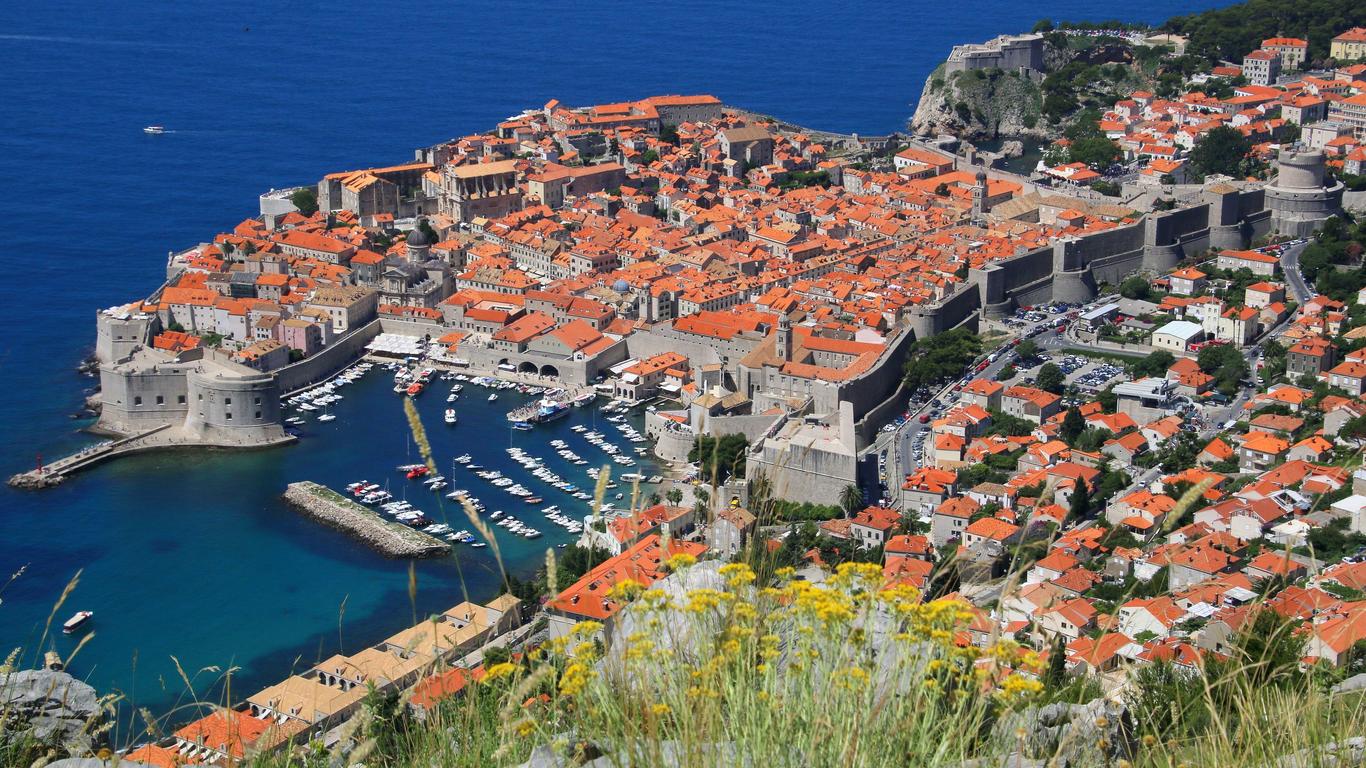
Find cheap flights to Croatia from $221
This is the cheapest one-way flight price found by a kayak user in the last 72 hours by searching for a flight from the united states to croatia departing on 9/17. fares are subject to change and may not be available on all flights or dates of travel. click the price to replicate the search for this deal., search hundreds of travel sites at once for deals on flights to croatia.
Save 22% or more Compare multiple travel sites with one search.
Track prices Not ready to book? Create a price alert for when prices drop.
Filter your deals Choose cabin class, free Wi-Fi and more.
Bundle and save Save money when you bundle your flight + hotel.
Best Croatia Flight Deals
Cheapest round-trip prices found by our users on KAYAK in the last 72 hours
Good to know
Faqs - booking croatia flights, does zagreb airport in croatia have any facilities for children.
If you are traveling to Croatia with kids, Zagreb Airport is the ideal airport to land in as it has some facilities for passengers with kids. The airport has baby care facilities where you can attend to your child’s breastfeeding and diaper change needs. You can also utilize the children’s play areas airside close to gates 4, 5, 12, and 13.
What transport options do I have from Zagreb Airport to the city center?
Buses are a common means of transit in Croatia. You can take the Pleso prijevoz airport shuttle offering transit between the Central Bus Station and the airport. The buses run at about 35- minute intervals. Zagreb Electronic Tram line 290 also provides transit between the airport, Velika Gorica, and Kvaternik Square. You can also rent a vehicle from the rental companies in the airport for transit across Croatia. Metered taxis are also available at the arrivals level on the ground floor in case you prefer taxi services.
Can I rent a vehicle at Split Airport?
Yes. When flying into Split Airport from the US, using a rental vehicle for transit throughout the country is ideal. You don’t have to go to the city to rent a vehicle as the airport offers the service. Car rental agencies serving Split Airport include Avis, Budget, Europcar, Hertz, Oryx, and Dollar. You can visit any rental agency and drive out of the airport with your rented vehicle.
Does Dubrovnik Airport have any airport lounges?
When flying into Dubrovnik Airport from the US, there is a lounge that you can visit upon landing. The Business Lounge in terminal A on the airside is accessible using a lounge membership program. You can access the lounge regardless of the class you fly. The lunge access is using a membership program.
Will I need a visa to enter Croatia?
Like many other European countries, United States nationals do not require a visa to stay in Croatia for a duration of up to 90 days. However, unlike much of Europe, Croatia is not part of the Schengen Zone, meaning that your stay in Croatia will not affect how long you can stay in Schengen countries in the allotted 180-day time frame.
Are there nonstop flights to Croatia?
Although there are flights available from the United States to several different cities in Croatia, the only nonstop flights between the two countries arrive in Dubrovnik. Nonstop flights from the US to Dubrovnik fly exclusively out of Philadelphia, so you’ll be facing at least one layover if you’re flying out of another city.
I want to visit the Plitvice Lakes, what city should I fly into?
The Plitvice Lakes are among the most popular tourist attractions in Croatia, and they lie an almost equal distance from Zagreb and Zadar, which means that you can shop for the cheapest fare and take your pick of which city to fly into when planning your flight from the US. The route to the lakes is similar from both cities as well, as you’ll have to take a bus to the city’s central bus station and a bus from there to Plitvice.
What city should I fly to if I’m visiting Hvar?
Hvar is a popular domestic and international tourist destination in Croatia, but it isn’t directly accessible by plane. To visit Hvar, you can book a flight from the US to either Split or Dubrovnik - both cities are equally convenient to Hvar. After your flight lands, you can board a ferry to Hvar from both cities, and the travel time from both cities is similar.
How long is the flight to Croatia?
An average nonstop flight from the United States to Croatia takes 13h 55m, covering a distance of 5096 miles. The most popular route is Newark - Dubrovnik with an average flight time of 9h 00m.
What is the cheapest flight to Croatia?
The cheapest ticket to Croatia from the United States found in the last 72 hours was $832 one-way, and $515 round-trip. The most popular route is Newark to Dubrovnik and the cheapest round-trip airline ticket found on this route in the last 72 hours was $627.
Which airlines fly to Croatia?
Air Canada, Lufthansa & Brussels Airlines fly the most frequently from the United States to Croatia.
What are the most popular destinations in Croatia?
Based on KAYAK flight searches, the most popular destination is Dubrovnik (33% of total searches to Croatia). The next most popular destinations are Split (32%) and Zagreb (29%). Searches for flights to Zadar (4%), to Pula (2%) and to Rijeka (0.6%) are also popular.
How does KAYAK’s flight Price Forecast tool help me choose the right time to buy?
KAYAK’s flight Price Forecast tool uses historical data to determine whether the price for a given destination and date is likely to change within 7 days, so travelers know whether to wait or book now.
Top tips for finding cheap flights to Croatia
- Enter your preferred departure airport and travel dates into the search form above to unlock the latest Croatia flight deals.
- Croatia has nine international airports, three of which are island airports. Zagreb Airport (ZAG) is Croatia’s main airport, the busiest, and the best option for visits to the northern part of the country. The airport is about 9.32 miles from Croatia’s capital. Following Zagreb in size are Split (SPU) and Dubrovnik (DBV). The next are Pula (PUY), Rijeka (RJK), and Osijek (OSI), followed by the island airports.
- Zagreb Airport is Croatian Airlines’ primary hub. When flying into the country for a destination or stopover, your landing airport is most likely ZAG, as it handles most of the international flights into the country.
- When planning to visit the Dalmatian coast and the western part of Bosnia, fly into Split Airport, the closest to the places. The airport is the fastest growing in the country and may have more amenities when you fly into it.
- If you are visiting Croatia for the Dubrovnik Summer Festival, the most famous summer festival in the country, consider flying into Dubrovnik airport as it is closer to St. Blaise Church, where the event occurs. The event takes place between 10th July to 25th August; therefore, ensure you are in the city before the start date to avoid traffic.
- If you are flying into the Split Airport, note that the airport has a new terminal reducing overcrowding; therefore, movement around the airport should be more accessible.
- When booking a flight to Croatia, you’ll have a few international airports to choose from. International flights from the United States to Croatia fly to the cities of Dubrovnik, Split, Rijeka, Zagreb, Zadar, Pula, Bol and Osijek. Flights to Croatia can be found from most major cities in the US.
- If you’re looking to save some money on your flights from the US, you may want to travel to one of the country’s airports that offers flights to Croatia for a lower price. Flying out of several cities on the east coast can get you access to cheaper rates, including New York City, Miami and Fort Lauderdale.
- If you want to access the popular hiking and trekking trails in Zadar and Split, bear in mind that both cities host international flights from the US. The major airlines operating these routes are Singapore Airlines and Lufthansa, with connecting flights from Croatia Airlines.
- When you’re flying to Croatia, there is a high probability that you’ll have at least one layover, with two-stop flights being just as common. There are a handful of cities that host the majority of layovers on flights departing from the US and landing in Croatia, which include Munich, Frankfurt and Rome.
- The historic villages called The Castelas are located between the cities of Trogir and Split. If you want to visit them, bear in mind that Trogir doesn’t have an airport - you’ll have to fly into Split and take the bus or hail a taxi to reach whichever of the Castelas you’re staying in.
Top 5 airlines flying to Croatia
I'm a larger, athletic guy (6'2", 260lbs powerlifter) and I found the seats incredibly uncomfortable with minimal leg room, especially in a window seat. Now, I full understand that being smaller may change my view but even if I was 80lbs less, my legs would be the same size and I was sandwiched between my seat and the seat in front of me.
Horrible. This was not first class. This was a connecting flight whi h was late. My original flight never came. I hated the fact that delta gave me a connecting flight from New York to Orlando Florida. No meals and the television screens were not working. There wasn't even any power to charge your phones. This is NOT FIRST CLASS DELTA!!! Do better next time!
This flight was ridiculous. I had to have a connecting flight from New York to orlando Florida??? The flight left late and because it was a short flight there was no first class amenities. I had one alcohol drink. The flight crew was fine, but it sure did not feel like first class. Delta to me dropped the ball by giving me a connecting flight. By the time we got to Raleigh we would have missed the next flight. Lucky for me the flight never came so now I was stuck waiting for a later flight that came in late also.
Our flight was delayed in Atlanta. The staff could have gave us an explanation for the delay and how long it would be.
I liked the ease of checking in, luggage check in, wheel chair assistance, boarding and flight.
On my way home I had a layover. The flight from ATL to CLT was amended 5x while I was waiting. I could have driven home sooner. Overall from Dallas, Tx to Charlotte, NC I started my trip at 4:30pm, I didn’t get home until past midnight. I know things happen, but 5x to make me run back and forth in an airport from different terminals is excessive. I also upgraded to comfort + , I didn’t feel it was worth it. There was no benefit
On my way home I had a layover. The flight from ATL to CLT was amended 5x while I was waiting. I could have driven home sooner. Overall from Dallas, Tx to Charlotte, NC I started my trip at 4:30pm, I didn’t get home until past midnight. I know things happen, but 5x to make me run back and forth in an airport from different terminals is excessive.
They did a fine job. Can't wait to use Delta in the future.
There was a loud squeaky sound the whole time we were flying.
Had a broken tray in business class. Crew just shrugged it off.
The food from Lagos to Amsterdam was was very poor compared to AMS-YYZ
The flight was delayed for 2 hrs. Because they didn’t have a crew to fly. And it is not a first time for klm to do that. Last time they cancelled my filght and rebooked me 3 days later. Not reliable airline
Seats are fair enough for medium tall people. Good food all the trip. Fight attendances are warm
no issues at all... Kudos to the food. This time was really really good
The food was ok. The crew seemed like they were cranky. I had one guy get mad at me for passing in between the storage area to get to the other toilet. I can understand if it's not allowed but reprimanding me like I'm a student saying "This is the last time!" was not appropriate. During my meal time, there was a French family around me. No problems there but when we usually have meals, they are supposed to put their chair in the upright position. These people did not do it and the steward did not tell them to raise their seat in the upright position. However, I was told to do so! So, me and another person next to me had to eat with the monitor almost touching our faces. Furthermore, a lady in front of me was putting her feet up and preventing another elder passenger from putting her seat back. To make it worse, she was continuously hitting her back into her seat, shaking my monitor while I was watching a movie. A crew member did speak to her about it but then she accused me of pushing her seat forward! The crew member gave me a death stare and told me to stop pushing the seat forward. I did not even touch her seat at all, if I did, she would know it. Her boyfriend also stood up and tried to push her seat even further past the maximum decline to no avail. None of these people were reprimanded but the steward, some bald guy, was extremely friendly with them and did not even try to instruct them to do anything until it was time to land. I resisted the urge to really argue with them because I would have obviously been seen as the aggressor (I have no idea why). I hardly said anything on this flight except "more wine please" and "sorry" if I bumped into someone accidentally. Overall, it was an annoying flight and I had to resist the urge to yell at the steward and the people he was overly friendly with. The happiest moment of this flight was leaving it.
Overall a good experience. We were disappointed when we had to check our carry on due to the plane being full. KLM hadn’t notified us and we had valuable items in the carry on but they still made us check it. Some of the food was great and some was mediocre. Crew is really kind and funny.
The worst airline. Cancelled flight 30 min before boarding and rebooked on flight after 3 days.
I travel frequently. The flight was late again... KLM should really try and be on time
The plane was clean and the staff was friendly. Food and drinks as expected on international flights. The entertainment system was old style, with a pullout controller, and selections not as extensive as on other flights.
One of their staff was so rude with discriminative. Such a reputed airline shouldn't hire such kind of arrogant attendants.
TERRIBLE! Staff was unfriendly, rude, and demeaning. One flight attendant touched me to grab the complimentary blanket off my neck because I couldn't take it home, while a bunch of other people took theirs home. I have never been so ill treated. I am not happy at all. And flight was delayed, no information until short notice for everything. Lost an entire day at my destination. I expect a full refund for that experience. Never will fly with them EVER again
All was good. I think the back of the plane should be boarded first. It would be faster. Minimal waiting time behind passengers loading their carry on baggage.
My return flight has been changed to JFK from EWR without any notice or reason
This was my first time flying SAS and used them for 4 flights. The crews, flight and communication was outstanding. I flew premium economy and was extremely impressed by their SAS lounges. I will 100% ise SAS again. Everyone was so pleasant!
Flight was delayed 3 hours. Pilot cancelled flight under 4 people volunteered to change their seats to economy from business class.
I paid for wifi and it worked about a total of 5 min. Feel ripped off
Good friendly service and food - The seats in business class are old, too hard and not very comfortable.
My seat was not the one I paid for, the crew was very curt, and the cabin was extremely warm.
Old plane with terrible business class seats - good food and service. Boarding was a joke with business class boarding last.
Best airline to travel on a budget- really like their reasonably priced access to the SAS lounges where available.
Horrible experience. Nothing to give to kids to keep them entertained.
I think I have bruises on my kneecaps. Do the seats have to be so close together these days? And if they are so close they really shouldn’t recline. I think when the gentleman in front of me reclined, the back of his head was on my chin. That being said the crew were always caring and polite, and the flight was on time and very safe. So I’m grateful for that.
I always try to book flights that don’t charge for baggage. Yet I was charged $75 for this flight.
Trouble keeps changing the time and I was booked different flight without knowing it was bad experience
I dropped my wallet under my seat on this flight with all of my money and credit card. I requested to be able to go back and retrieve it but Lufthansa denied my request. I went to the Customer Services and they called Lost and Found but I was told nothing found would be turned in until around 12:00pm. My next flight was leaving so I was unable to check to see if my wallet was turned in. I will never fly with Lufthansa again.
My concern is with Flight: 441 IAH-FRA I was very cramped in my seat and the person in front of me was reclined. I pulled my wallet out of my purse and when finished I did my best to cram it back into my purse. Our flight was very delayed and we were rebooked twice and lots of airport time. As I got off the flight I noticed that I had dropped my wallet( containing all my credit & debit bank cards + 240 US dollars & 240 Euros. I spoke to customer service & Lost &Found. I was denied access to look on the plane. Therefore I have been without money and given no help. Paula Bjork 503.545.6698
Dinner was good by air travel standards but breakfast was too light and heavy on carbs/sugar.
Used to love Lufthansa, but Rowe are too close together in Economy and passengers are allowed to recline their seats so far back it is impossible for those behind them to even reach for carry-on essentials during flight - except for meal service when flight attendants ask for seat backs to be raised, we can’t sleep on planes so this flight was most uncomfortable ever! Rod Rose
So far so good. I missed my flight because of the Lufthansa diversion. United helped me to figure out how to get accommodations from Lufthansa for my long layover. They help me book appropriate onward flight.
Horrible crowding on the seats, headphones provided did not fit or work in the entertainment center, seriously the most uncomfortable flight I have taken in a LONG time. The people in front of me were literally 5 inches from my face the entire flight. Did they change their seats recently? I remember it being tight but wow this was a whole new level. Also I am a 5'3" small woman so I can't even imagine a larger person dealing with that for 11 hrs.
In economy and food was ok, but with limited leg space (and I was in a 2 seat configuration) it was difficult to eat with a tiny seat tray. I spilt wine on my trousers. First time on British Air (I usually fly Turkish Air) and in a 777. Heathrow was pleasant but changing terminals awkward.
Starting with the flight Cairo to London the plain was so poor no entertainment at all uncomfortable seats although it’s 5 hours long,then an American airline plain took me from London to Miami it was a bad experience the crew most of flight time not available and they asked us to help our selves for any snacks if we need. From Miami to London actually was perfect flight with a huge plain and perfect crew but from London to Cairo was horrible plain with stiff fixed seats not movable no entertainment or wi fi very poor Menu which is unacceptable for a business class
I've done hundreds of flights in my life, and this flight was one of the best I've ever taken, From beginning to end, everything went smoothly, professionally, and with a smile and friendly attitude from all employees I interacted with. The food was delicious (and free), as were the drinks. There was just a genial and effective way in the way that British Airways organized the flight -that reminded of days in the 70's, 80's, and 90's, when flying was a fun, and exciting adventure. I enjoyed and had confidence in the abilities of the flight crew, I'll be flying British Airways several more times this summer. Thank you so much for the great experience! Cheryl Olso
My baggage did not arrived with me. Took 3 days to get it after so may calls and follow up
Terrible! I missed my flight to my final destination and British airlines and American Airlines keep pointing fingers on each other’s. Nobody wants to take responsibility
Terrible. Flight was 3 hours delayed and I missed my other flight to my final destination
Overall, terrific service, accommodations, and experience. Only reason comfort was rated lower was because it was difficult to keep a comfortable sleeping position for the overnight flight, but I also had an economy seat.
Not sure if the crew were experiencing something unknown to me,but the service of passing water was non-existent.In addition,please take consideration when providing yogurt as alternative for breakfast as some of us, could be lactose intolerant.. thanks
Very cramped seats in economy, difficult to get comfortable with your legs and feet and back. The seat width is ok but I’m average size. Food is HORRIBLE. Crew is friendly. Delays and very tight connections made it tough for navigating. We would have missed our connecting flight if it wasn’t delayed too. The terminal transit was slow and normally every 10 minutes before 8pm, after 8 pm is every 30 minutes!!!!! No free wine or drinks!! Below average attitude.
Leg room was better than expected. Lavatory’s were easy to access.crew was grea!
Book Cheap Croatia Plane Tickets
Recent round-trip flight deals, search by stops, search by airline, search by price, recent one-way flight deals, last minute flights to croatia, last minute flight, train and bus deals, flights to croatia, return flight deals:.
Croatia - United States
Cabin classes:
Browse origins:.
- Flights »
- United States
Browse destinations:
- Worldwide »
- International edition
- Australia edition
- Europe edition

Dalmatian spot: kicking back on Croatia’s Dugi Otok island
A fishing village stay on one of the country’s less-visited large islands reveals a quiet Adriatic gem boasting green lakes, holm oak forests, and unspoilt beaches
T he first thing that struck me about Luka was the silence. My wife, Caroline, and I had driven our rental car from Split north along the Croatian coast to Zadar and taken an hour-and-a-half ferry ride to the island of Dugi Otok. Then we had driven the island’s length southwards, through pine forest and scrub, to arrive at this tiny fishing village, where we would spend the next week. Both of us were slightly wired from driving on foreign roads. But the strange spell of Luka put an end to that.
Nothing moved, not even cats. Before us was a sheltered bay that seemed almost surreally smooth, undisturbed by the faintest breeze. Plaster flaked from the walls of crumbling fishing cottages, their gardens bright with flowering cactuses and bougainvillaea. A row of empty beer bottles outside the shuttered general store gave the deserted quay a Mary Celeste quality. Travelling in space can sometimes seem like travelling in time, and it felt as if we had stepped back to the 1950s. Dugi Otok (“Long Island”) is the most westerly of the Zadarian Islands off the Dalmatian coast, and one of the least-visited large islands in Croatia. Twenty-seven miles (44.5km) long and only three miles (4.8km) wide, the island’s slenderness makes it easy to explore, with a single road running from north to south. Its inhabitants – fewer than 1,500, many of whom leave in the winter months to escape the notorious Bora winds – are huddled on the eastern side, mostly in the “capital” Sali; the west falls away to steep cliffs and sand beaches. Cypress, pine, fig, olive and holm oak cover much of it, while the rest is blanketed in maquis, the scrubby evergreen underbrush of the Mediterranean. The plants comprising this dense weave are invariably spiked, hooked or barbed, as I learned the painful way when going off piste from a walking trail; the next few days were spent nursing lacerated legs. The maquis makes the island wild in a way I hadn’t encountered before, as swathes of uncultivated land are impenetrable to humans.
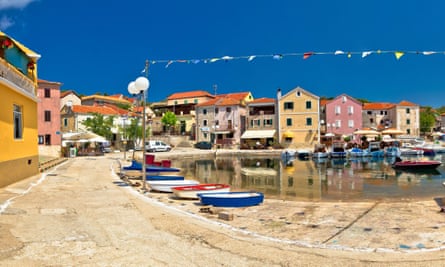
We rented an old fishing cottage in Luka (£62 a night) that had been in the owners’ family for years: tall and narrow, it had strong stone walls and a tiny balcony. Black-and-white photos gave an impression of their grandparents’ lives, fishing in the Adriatic through storms and bitter winters. The harbour was only steps away, and we befriended several cats in the restaurant on the quay, Konoba Zlata Vala, which served carafes of local wine and one of best risottos we had ever tasted.
A short drive south from Luka is the Telašćica nature park , around one of the largest natural harbours in the Adriatic. On the western edge of a narrow bay that cuts inland for six miles, elevated above the sea by 150-metre cliffs, is the saline Lake Mir (“Peace”), famed for its blue-green water. This is the island’s main tourist draw, as attested to by the yachts anchored in the bay below – snatches of boozy Italian and German drifted to us across the waves. But we spent most of the week seeking quieter corners. On Dugi Otok in September such a mission is not hard. The “only busy month” is August, according to our guesthouse hosts, and often we would find ourselves on near-empty beaches.

Our favourite was Veli Žal, half a mile of pebbles and sand bordered by thick greenery, along which previous castaways had constructed driftwood shelters. A mysterious craftsperson had whittled stick windmills, which spun rattling in the wind, a quirky generosity I found oddly moving. On afternoons when we didn’t feel like venturing far from home, the pebbly beach near Luka had its own scruffy charm. I was excited to meet a bright green praying mantis there, while the gloriously uninhibited older women sprawling naked on the rocks were a source of great admiration to Caroline. It reflected what we found to be an unbothered – and deeply relaxing – attitude among the islanders, and visitors, we encountered. Having said that, anti-nudity signs – a Ghostbusters-style bar across a cartoon pair of boobs – were displayed at Veli Rat, the lighthouse at the island’s northern tip. Islands are parochial. Things are different in the north.
Islands are also superstitious, refugia of myth. At the sea pool of Dragon’s Eye we found fossils in the rocks and in the cave of Strašna Peć – said to be created by fairies in an attempt to split the island at its narrowest point – deep time was recorded in dripping stalactites. Like many Adriatic islands, for centuries on the frontline of invasion from the Ottomans, Dugi Otok also has its share of pirate stories. These coasts were once haunted by the Uskoks, Croatian sea bandits used as proxy forces by the Hapsburg empire, who wreaked havoc on Venetian and Turkish fleets.
after newsletter promotion

The best way to know islands, of course, is from the sea. On our penultimate day, a skipper steered us in a boat southwards out of Sali and through Telašćica bay into an archipelago that felt like another world (private half-day boat tours with Adamo Travel cost £128). The Kornati national park consists of 89 islands and islets scattered across eight miles south-east of Dugi Otok. They are starkly different from the forested place we’d just left, banded with karst rock formations like gigantic ammonites, yellow and desolate, looking – as our skipper said – “like Arabia or Iran”. A century ago, the Kornati Islands were purchased from the aristocrats of Zadar by peasant farmers for grazing sheep, which ate everything in sight. Most are uninhabited, apart from the hardiest souls; summers here are scorching and the winter winds are brutal. The isolation and wildness reflect an antiauthoritarian streak that goes back hundreds of years: when the ruling Austrians came to record the islands’ names, the local people gleefully told them that one was named Babina Guzica (“Grandmother’s Arse”) and another Kurba Vela (“Great Whore”). Happily, both those islands bear these names today.

As we returned to Dugi Otok, relieved by the sight of trees again, Caroline pointed out a sheep dozing on a headland. Our skipper said this matted beast was something of a celebrity, an escaper from a nearby island that had swum the narrow strait and successfully evaded recapture for 10 years. Her pursuers have long since given up; the sheep has won her freedom. In November 2023, a stranded sheep in Scotland was “rescued” and taken to a petting zoo, and was later used to front a rural loneliness campaign. In Dugi Otok, this proud loner is left to her own feral life, sunning herself beside some of the cleanest waters in the Mediterranean. The naked older ladies would approve. It perfectly encapsulates the spirit of the island.
- Croatia holidays
- Europe holidays
- Beach holidays
Most viewed
To Duke Alumni homepage
Northern adriatic: a voyage to montenegro, croatia and venice.
View other trips

Date: Mon, July 28, 2025 - Tue, August 5, 2025
Trip Status: Waiting for the brochure
Price: From $6,595
Activity Level: Moderate
Region: Europe
Arrangements: Orbridge
Embark upon an unforgettable journey cruising the captivating northern Adriatic, weaving through a tapestry of enchanting destinations that span Croatia, Montenegro and the cultural gems of Northern Italy. On board your five-star vessel, enter a world where the delicate balance between modern luxury and responsible travel is seamlessly achieved. On land soak in the beauty of Dubrovnik’s UNESCO World Heritage Sites and the terraced waterfalls of Krka National Park.
Traverse the charming streets of Kotor and Montenegro. Visit the city of Hvar, the sun-drenched, fishing-village-turned chic ”Croatian-Rivera.” Lose yourself in the labyrinthine lanes of Šibenik and Split, where the juxtaposition of old and new captivates the senses, and cross the Adriatric Sea for rewarding excursions to Bologna, San Marino, Emilia Romagna and the Marche regions. All while savoring a gourmet culinary dining experience that reflects the richness of the destinations you explore.
Reservations and Information
To reserve, complete a registration form in the brochure and mail to Duke Travels, Box 90572, Durham, NC 27708, or call (919) 684-2988 to reserve conveniently over the phone and let us know you are mailing your reservation form to hold your space. To learn more about our travel program or any of our upcoming trips, please contact us at [email protected] or 919-684-2988
Duke Leaders

Mode of Travel
Ocean cruise.
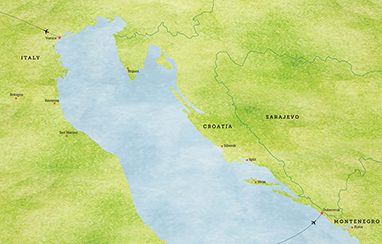

COMMENTS
Call us in Washington, D.C. at 1-888-407-4747 (toll-free in the United States and Canada) or 1-202-501-4444 (from all other countries) from 8:00 a.m. to 8:00 p.m., Eastern Standard Time, Monday through Friday (except U.S. federal holidays). See the State Department's travel website for the Worldwide Caution and Travel Advisories.
Most are marked with FKK - the German phrase "Frei-Körper-Kultur," meaning free body culture - which isn't surprising as Germans make up some of the biggest numbers of tourists in Croatia. Away from the FKK beaches, topless bathing is quite common. 8. Dodge the crowds in Dubrovnik by timing your visit carefully.
U.S. citizens, currently in Croatia, who wish to stay in Croatia for longer than 90 days must apply for a temporary residence permit and should contact the Ministry of Interior at least 30 days prior to the expiration of the 90-day visa-free stay. What will I need?
Most visitors from the United States, regardless of vaccination status, can enter Croatia. Entry Open for vaccinated visitors COVID-19 testing Not required Quarantine Not required for vaccinated visitors Restaurants Open Bars Masks Not required in enclosed environments. Croatia entry details and exceptions
1. Plitvice Lakes National Park A turquoise ribbon of lakes linked by gushing waterfalls in the forested heart of continental Croatia, UNESCO-listed Plitvice Lakes National Park is an awe-inspiring sight.
Travel Advisory Level 1: ... Nathalie Rayes was sworn in as U.S. Ambassador to the Republic of Croatia on January 10, 2024 by Vice President Kamala Harris. ... Kamala D. Harris is the Vice President of the United States of America. She was elected Vice President after a lifetime of public service, having been elected District Attorney of San ...
International Travel Information What you need to know before you go: visas, Embassy & Consulate locations, vaccinations, etc. Learn More Current Travel Advisories Level 1: Exercise Normal Precautions Learn More U.S. Relationship These are excerpts from the U.S. Relations With Croatia U.S.-Croatia Relations U.S. Assistance to Croatia
CNN — If you're planning to travel to Croatia, here's what you'll need to know and expect if you want to visit during the Covid-19 pandemic. The basics Croatia has had one of the highest death...
Passengers coming to Croatia directly from the third countries listed in the Annex I of the Council Recommendation (EU) 2021/1085 can travel to Croatia without proving that their travel is essential if they show one of the 5 proofs, as set out above. Please note that the point 3 also does not apply to this category of passengers.
Mar 20, 2024 • 11 min read. Whether you're after sun-drenched beaches or avoiding the crowds and braving the chill, we've got all you need to know about when to visit Croatia. Hiking. The 5 best hikes to do in Croatia. Mar 19, 2024 • 7 min read. Family Travel. Everything you need to know about visiting Croatia with kids. Mar 18, 2024 • 7 ...
Why you should travel to Croatia. One of the best European vacation destinations, Croatia's charm is endless, with sun-soaked beaches, captivating cities, pristine islands, and breathtaking natural parks. ... Personal Travel Advise: Ask us your travel questions directly. How to Plan a Trip: 7 Easy Tips for Your Next Adventure. Best Travel ...
Croatia Travel Advisory: Level 1: Exercise Normal Precautions: July 26, 2023: ... Subscribe to get up-to-date safety and security information and help us reach you in an emergency abroad. ... You are about to leave travel.state.gov for an external website that is not maintained by the U.S. Department of State.
Travelers can visit Croatia without any testing, vaccination, or quarantine rules. Visitors from over 60 visa-exempt countries, including the U.S., will soon be required to have a European Travel Information and Authorisation System (ETIAS) travel authorization to enter Croatia and other European countries. The start date has been delayed from ...
Getting to Croatia is about to become easier thanks to new non-stop routes from New York area airports to Dubrovnik, which Delta (from JFK) and United (from Newark) will kick off in July.
Read on to discover my top 20 tips for Croatia travel! Page Contents [ Collapse] 20 Tips for Traveling Croatia. Travel During the Shoulder Season. Drink the Tap Water. Book in Advance. Carry Cash. Know the Tipping Etiquette. Download an eSim.
Average winter temperatures are around 10°C, with January being the coldest month with daily average temperatures of less than 10°C (50°F). The average sea temperature varies from 12°C (54°F) in winter to 25°C (77°F) in summer. Croatia's interior has a moderate continental climate.
It may be surprising to American travelers to learn that they are permitted to enter Croatia at present, even though the US is not on the list of countries for which the European Union recommends lifting travel restrictions caused by COVID-19. The EU published a list of countries whose citizens are permitted to travel to Europe from 1 July, but ...
Explore the 2 best vacation spots in Croatia with in-depth travel guides. Discover the best things to do, when to visit, where to stay, how to get around, and how to save money.
4. Skip The High Season And Travel In The Shoulder Season. Cres Island, Croatia: View from the beach promenade to the Adriatic Sea near the village of Valun. If possible, avoid the prime tourist season months of July and August. Temperatures are high, tourist crowds are insane, and hotel prices are at their peak.
Zageb, Croatia. Croatia at a glance: Croatia is a popular travel destination due to its breathtaking beauty, historic seaside villages and stunning national parks. Location: The Balkans region of Eastern Europe on the Adriatic Sea (view on Google Maps) Capital city: Zagreb Language: Croatian Currency: Euro (EUR / €)* Plugs/outlet types: Plug types C and F / 230 V and 50Hz
Flights to Dubrovnik, Croatia. $498. Flights to Hvar, Croatia. $5,886. Flights to Osijek, Croatia. View more. Find flights to Croatia from $219. Fly from the United States on American Airlines, British Airways, SWISS and more. Search for Croatia flights on KAYAK now to find the best deal.
Dugi Otok ("Long Island") is the most westerly of the Zadarian Islands off the Dalmatian coast, and one of the least-visited large islands in Croatia. Twenty-seven miles (44.5km) long and only ...
The small-ship line opened bookings for its 2025 line-up this week, which includes 7-night sailings between Split and Dubrovnik along the Dalmatian Coast. Travelers can enjoy visits to destinations like Trogir, Hvar, Korcula and Vis, plus Mljet and Krka national parks. In 2025, Cruise Croatia will offer a new "Signature" itinerary aboard ...
Embark upon an unforgettable journey cruising the captivating northern Adriatic, weaving through a tapestry of enchanting destinations that span Croatia, Montenegro and the cultural gems of Northern Italy. On board your five-star vessel, enter a world where the delicate balance between modern luxury and responsible travel is seamlessly achieved. On land soak in the beauty of Dubrovnik's ...